

BRIDGING THE GAP: CAPITALIZED INCOME IN REAL ESTATE AND BUSINESS VALUATION
Combler le fossé : le revenu capitalisé dans l’évaluation des biens immobiliers et des entreprises
ARBITRATION AND APPRAISAL: RENT RESET ISSUES (PART 1)
Arbitrage et évaluation : questions relatives à la réinitialisation des loyers (partie 1)
PROPORTIONAL VALUE OF FUNCTIONAL GROUPS IN FORMING MACHINES
Valeur proportionnelle des groupes fonctionnels dans les machines à former
JOIN US AT THE 2024 AIC NATIONAL CONFERENCE
JUNE 5-8, 2024, CHARLOTTETOWN, PEI
Rejoignez-nous au Congrès national de l’ICE 2024 5-8 juin 2024 Charlottetown, Î.-P.-É.
















Vol 68 | Book 1 / Tome 1 | 2024 PM #40008249 Return undeliverable Canadian Items to: Appraisal Institute of Canada, 403-200 Catherine St., Ottawa, ON K2P 2K9 The Official Publication of the Appraisal Institute of Canada / Publication officielle de l'Institut canadien des évaluateurs
Can private investment solve the affordable housing shortage? L’investissement privé peut-il résoudre la pénurie de logements abordables? logements abordables?


Recruiting top talent
The Avison Young Valuation and Advisory Services Team is growing and we are looking for individuals, teams and companies across Canada seeking an opportunity to grow with us.
Leverage technology to service clients
High performance, people-first culture Competitive compensation package
Contact us to learn more about joining the team.
Matthew McWatters P. App., AACI. Principal, Executive Vice President and Canadian Leader, Valuation and Advisory Services matthew.mcwatters@avisonyoung.com
avisonyoung.ca/valuations






Elevate Your Property's Potential with CDC Inc.














Technology-Driven Valuations:










At the forefront of appraisal innovation, CDC Inc. offers fast, accurate, and efficient property appraisals across Canada, enhanced by our cutting-edge report technology.
Diverse Expertise, Nationwide Reach:
Whether it's commercial, agricultural, or residential properties, our team of over 60 experts delivers comprehensive services everywhere in Canada.
Growing to Serve You Better:


Constantly expanding our services and reach to meet your diverse property needs, including Building Condition Assessments and Reserve Fund Studies/Depreciation Reports.
Accurate, Reliable, Professional:
Count on CDC Inc. for precise and defensible property valuations.
WE ARE CURRENTLY HIRING DESIGNATED PROFESSIONALS
ORDER AN APPRAISAL AT CDCINC.CA NATIONAL COVERAGE LOCAL EXPERTISE EXCELLENT SERVICE 1 (866) 479-7922 www.cdcinc.ca



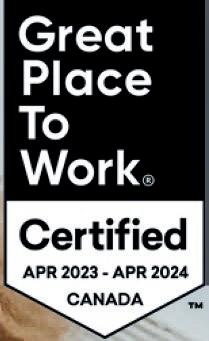





Experts choose experts collierscanada.com Interested in working in an entrepreneurial environment with the opportunity to grow your appraisal practice supported by the Colliers brand? Reach out today to take your career to the next level. Contact Jenna.Davidson@colliers.com to learn about joining the Colliers Valuation & Advisory Services team. Colliers is seeking motivated appraisers to join our Valuation and Advisory Services team. Flexibility in where and when you work; take advantage of our month-abroad option Enterprising culture with growth mindset Global platform and leading expertise Why Colliers


Can private investment solve the affordable housing shortage through re-invention?
L’investissement privé peut-il, par la réinvention, résoudre la pénurie de logements abordables?

Arbitration and appraisal: Rent reset issues (Part 1)
Arbitrage et évaluation : questions relatives à la réinitialisation des loyers (partie 1)

Bridging the gap: Capitalized income in real estate and business valuation
Combler le fossé : le revenu capitalisé dans l’évaluation des biens immobiliers et des entreprises

Proportional value of functional groups in forming machines
Valeur proportionnelle des groupes fonctionnels dans les machines à former
COLUMNS CHRONIQUES
6 Executive Corner
An interview with outgoing AIC President Claudio Polito, P. App., AACI
42 Legal Matters
Aboriginal title – an ‘interest in land’?
Stage one of the Wolastoqey Nations Land Claim
49 Advocacy in Action
Our views on the government’s housing and affordability measures
53 Equity, Diversion and Inclusion (EDI)
Connection: An antidote to adversity
59 News
• Join us at the 2024 AIC National Conference June 5-8, 2024 in Charlottetown, PEI
• Welcome to Sophie Lamontagne,
AIC Director of Public Aff airs and Communications
• CUSPAP 2024 and PPS 2024
• Member in good standing letter and e-card
• Important Dates
• In Memoriam
64 Designations, Candidates, Students
The articles printed in this issue represent authors’ opinions only and are not necessarily endorsed by the Appraisal Institute of Canada Copyright 2024 by the Appraisal Institute of Canada All rights reserved. Reproduction in whole or in part without written permission is strictly prohibited. Subscription, $40.00 per year. Printed in Canada.
Les articles imprimés dans ce numéro ne repésentent que l’opinion de leur auteur
respectif, mais ne sont pas nécessairement endossés par l'Institut canadien des évaluateurs Tous droits reservés 2024 par l'Institut canadien des évaluateurs. La reproduction totale ou partielle sous quelque forme que se soit sans authorisation écrite est absolument interdite. Abonnement 40,00 $ par année. Imprimé au Canada.
* The Appraisal Institute of Canada reserves the right to reject advertising that it deems to be inappropriate.
** The publisher and the Appraisal Institute of Canada cannot be held liable for any material used or claims made in advertising included in this publication.Indexed in the Canadian Business. Index and available on-line in the Canadian Business & Current Affairs database. ISSN 0827-2697
Publication Mails Agreement #40008249 Return undeliverable
9 Le coin de l’éxecutif
Entretien avec le Président sortant de l’ICE, Claudio Polito, É. Pro., AACI
46 Questions juridiques
Le titre ancestral est-il un « intérêt foncier »? Première étape de la revendication territoriale des nations Wolastoqey
51 Défense des intérêts
Notre point de vue sur les mesures du gouvernement en matière de logement et d’accessibilité fi nancière
56 Équité, diversité et inclusion (EDI)
La connexion : Un antidote à l’adversité
60 Nouvelles
• Rejoignez-nous au Congrès national de l’ICE 2024 5-8 juin 2024 à Charlottetown, l'I.-P.-E.
• Bienvenue à Sophie Lamontagne, Directrice, Aff aires publiques et communications
• NUPPEC 2024 et le SPP 2024
• Lettre et carte électronique de membre en règle
• Dates importantes
• En mémoire
64 Désignations, stagiaires, étudiants
Canadian items to: Appraisal Institute of Canada 403-200 Catherine St., Ottawa, ON K2P 2K9.
Director, Public Affairs and Communications: Sophie Lamontagne
Coordinator, Public Affairs and Communications: Brandyn Hayes
Manager, Communications Hannah Tellier
Publication management, design and production by: Direction, conception et production par :
3rd Floor – 2020 Portage Avenue, Winnipeg, MB R3J 0K4
Phone: 866-985-9780
Fax: 866-985-9799
E-mail: info@kelman.ca Web: www.kelman.ca
Managing Editor: Craig Kelman
Design/Layout: Jackie Magat
Marketing Manager: Kris Fillion
Advertising Co-ordinator: Stefanie Hagidiakow
36
26 22 13











An interview with outgoing AIC President Claudio Polito, P. App., AACI















The reception and hospitality I received from our Members and provincial partners across the country was heartfelt and will remain with me long after my time on the Board ends.

Q.Your term as AIC President is drawing to a close. How has the experience been for you? The past year has been everything I could have imagined and more. Having been in a similar situation when I served as President of AIC-Ontario, I certainly had an idea of what to expect. But the experience was even more positive than I had anticipated. As national President, I have been fortunate to represent our Members both nationally and internationally, as well experience all that our great country has to offer. Along the way, I have been blessed to work with great leaders on the AIC team at
the national office and on the national Board. There is no question that I have grown both personally and professionally.
Q.What do you feel were the most rewarding aspects of your term as President?
Everyone who knows me is aware that I am a people person who loves to work the room. Considering that character trait, the most rewarding aspect of serving as national President has been meeting Members from coast to coast, and having the opportunity to share experiences and listen to what they have to say. While doing so, I have been able to create new friendships and enhance existing relationships. What could be better?
I feel we maintained the momentum set in place and now leave the incoming AIC President and Board of Directors in a strong position for the future.
Canadian Property Valuation | Évaluation immobilière au Canada 6 Return to CONTENTS


We must ensure that our Candidates are given every tool, opportunity, and to prepare them for the journey ahead.


Q.aspects of the role that caught you off guard?
I knew what I was signing up for and was fully aware of the commitment required, so there were no surprises there. However, the reception and hospitality I received from our Members and provincial partners across the country was heartfelt and will remain with me long after my time on the Board ends. One particularly unexpected experience I had was holding a press conference at the National Press Gallery in Ottawa, which was nerve-racking to say the least.
Q.From the perspective of the AIC and the profession in general, do you feel you successfully accomplished what you set out to do 12 months ago?
Knowing that my presidency was only 12 months, and that the term would go by quickly, I realized there were some initiatives I would be able to accomplish, while for others, I would be able to get the ball rolling and then pass the baton to those who follow. You always want to accomplish more, but sometimes time and circumstance do not allow for it. The day-to-day responsibilities of the national President may not be the most glamorous, but they do keep the organization moving forward. I feel we maintained the momentum set in place and now leave the incoming AIC President and Board of Directors in a strong position for the future.
Q.What do you feel were the most significant accomplishments of your term?
I believe there have been many accomplishments from the national Board of Directors this year. I say Board because it is a team eff ort. As President, my fi rst goal

was to hire a CEO, and with the support of the Succession Committee and the Board of Directors, we were pleased to present Donna Dewar as our CEO in 2023. As a Board, we also remained committed to the recommendations of the Task Force as entrenched in our Strategic Plan, and made a good deal of progress on those fronts.
Q.Can you speak specifi cally to other accomplishments during your term including:
a) The AIC’s commitment to the Candidate experience?
At last year’s AGM, the Membership voted to give Candidates a voice by allowing them to vote at the national AGM. Since Candidate involvement should not stop at the right to vote, the AIC Board of Directors is working on initiatives to continue enhancing the Candidate experience. We must ensure that our Candidates are given every tool, opportunity, and support to prepare them for the journey ahead.
b) The AIC’s commitment to better communication with Members?
Accountability and transparency are fundamental aspects of good governance within any organization. Our AIC leadership team is committed to maintaining the trust of not only our Members, but of the public as well. Our new CEO has undertaken a
full review of our Bylaws, Terms of
Reference, and Consolidated Regulations, and a full review of internal and external processes. As recommended by our Membership through the Shaping the Future Task Force fi ndings, we are also undergoing an organizational review to determine how to best serve all AIC Members across Canada. As the results of each of these initiatives come forward, our dedicated national staff are committed to communicating the details to our Membership frequently and thoroughly.
c) The AIC’s commitment to all Members across all disciplines?
The AIC is no diff erent from other organizations in that we tend to focus on the issues at hand that require the most attention. But whatever those issues may be, we are committed to all Members –fee and non-fee, residential and commercial – and to providing the tools and resources to help our Members diversify their practices and meet whatever professional challenges come their way.
Q.What was the biggest challenge you faced as President?
My biggest challenge was time. You have only 12 months and before you know it, you are being asked to write your farewell address. It is always a challenge

We are committed to all Members – fee and non-fee, residential and commercial – and to providing the tools and resources to help our Members diversify their practices and meet whatever professional challenges come their way.
Volume 68 | Book 1 / Tome 1 | 2024 7 Return to CONTENTS


I strongly encourage all Members to volunteer and give back to our profession at the local, provincial, or national level. If a Member is interested in running for the national Board, they should ask themselves why they are doing so. Are they running for the right reasons and are they aware of the scope and responsibilities of a national Board Director?


when you want to do so much more, but cannot due to limitations out of your control.
Q.While you serve as Past President during the year ahead, how do you envision your role?
I am committed to assisting incoming President Dena Knopp, P. App., CRA in any way possible. I have also made the same commitment to our CEO, Donna Dewar. I will be there to provide whatever guidance and advice I can.
However, I also realize that this is the time for the new President to lead us forward and I am extremely confident Dena will do so.
Q.Would you recommend the experience of serving on the AIC Board of Directors and ultimately becoming President to your fellow AIC Members?
Absolutely. I strongly encourage all Members to volunteer and give back to our
profession at the local, provincial, or national level. If a Member is interested in running for the national Board, they should ask themselves why they are doing so. Are they running for the right reasons and are they aware of the scope and responsibilities of a national Board Director? Your duty of care is to the national Membership. Serving as national President is a great honour for a Member and it requires a substantial commitment of time and attention. My advice would be for Members to make sure they have a strong support system at home and at work.
Q.Can you share your thoughts on the current state of the AIC, of the appraisal profession generally, and what you feel the future might hold?


Perhaps I am too close to provide an impartial view, but I am extremely confi dent that the future looks bright for the AIC and for the profession. We have a strong leadership team and are fortunate to have Donna as our CEO. As the backbone of the economy, real estate has become the most discussed topic in many homes, in the media, and in politics. From housing aff ordability and fi rst-time buyers, to density increases and offi ce space conversions, real estate is the hot topic. As Professional Appraisers (P. App.), we can and should be a signifi cant part of the conversation. All things considered, I believe that the AIC is well-positioned to meet the challenges ahead, and the profession is well-placed to thrive.
EXECUTIVE CORNER
Suite 101, 24 Inglewood Drive, St. Albert, AB T8N 6K4 Please send resumes to: info@crvg.com AACI & Candidates Tel: (780) 424-8856 • Fax: (587) 290-2267 Canadian Property Valuation | Évaluation immobilière au Canada 8 Return to CONTENTS








Entretien avec le Président sortant de l’ICE, Claudio Polito, É. Pro., AACI









L’accueil
et l’hospitalité que j’ai reçus de la part de nos membres et de nos partenaires provinciaux à travers le pays ont été sincères et resteront dans ma mémoire longtemps après la fin de mon mandat au Conseil d’administration.
Q.Votre mandat de Président de l’ICE touche à sa fin. Comment s’est déroulée cette expérience pour vous?

L’année écoulée a été tout ce que j’aurais pu imaginer et plus encore. Ayant été dans une situation similaire lorsque j’étais Président de l’ICE-Ontario, j’avais certainement une idée de ce à quoi je devais m’attendre. Mais l’expérience a été encore plus positive que je ne l’avais prévu.
En tant que Président national, j’ai eu la chance de représenter nos membres aux niveaux national et international, et de découvrir
tout ce que notre grand pays a à offrir. Tout au long de mon parcours, j’ai eu l’occasion de travailler avec de grands dirigeants au sein de l’équipe de l’ICE, au bureau national et au Conseil d’administration national. Il ne fait aucun doute que j’ai progressé tant sur le plan personnel que professionnel.
Q.Quels ont été, selon vous, les aspects les plus gratifiants de votre mandat de Président?
Tous ceux qui me connaissent savent que je suis une personne sociable qui aime travailler avec les gens. Compte tenu de ce trait de caractère, l’aspect le plus gratifiant de mon mandat de Président national a été de rencontrer des membres d’un bout
J’ai le sentiment que nous avons maintenu la dynamique mise en place et que nous laissons au futur Président de l’ICE et à son Conseil d’administration une position solide pour l’avenir.

LE COIN DE L’EXÉCUTIF
Volume 68 | Book 1 / Tome 1 | 2024 9 Return to CONTENTS


Nous devons nous assurer que nos stagiaires disposent de tous les outils, de toutes les opportunités et de tout le soutien nécessaire pour les préparer au voyage qui les attend.
à l’autre du pays et d’avoir l’occasion de partager mes expériences et d’écouter ce qu’ils ont à dire. Ce faisant, j’ai pu créer de nouvelles amitiés et renforcer les relations existantes. Qu’est-ce que j’aurais pu demander de mieux?
Q.Y a-t-il eu des aspects inattendus du rôle qui vous ont pris au dépourvu?
Je savais ce à quoi je m’engageais et j’étais pleinement conscient de l’engagement requis, il n’y a donc pas eu de surprise. Cependant, l’accueil et l’hospitalité que j’ai reçus de la part de nos membres et de nos partenaires provinciaux à travers le pays ont été sincères et resteront dans ma mémoire longtemps après la fi n de mon mandat au Conseil d’administration. Une expérience particulièrement inattendue que j’ai vécue a été la tenue d’une conférence de presse à la Tribune de la presse nationale à Ottawa, ce qui était pour le moins éprouvant pour les nerfs.
Q.Du point de vue de l’ICE et de la profession en général, avez-vous le sentiment d’avoir accompli avec succès ce que vous vous étiez fixé comme objectif il y a 12 mois?
Sachant que ma présidence ne durait

que 12 mois et que le mandat passerait vite, je me suis rendu compte qu’il y avait certaines initiatives que je pourrais mener à bien, tandis que pour d’autres, je serais en mesure de lancer le mouvement et de passer le relais à ceux qui me succéderont. On veut toujours en faire plus, mais parfois le temps et les circonstances ne le permettent pas. Les responsabilités quotidiennes du Président national ne sont peut-être pas les plus prestigieuses, mais elles permettent à l’organisation d’aller de l’avant. J’ai le sentiment que nous avons maintenu la dynamique mise en place et que nous laissons au futur Président de l’ICE et à son Conseil d’administration une position solide pour l’avenir.
Q.Quelles ont été, selon vous, les réalisations les plus importantes de votre mandat? Je pense que le Conseil d’administration national a accompli de nombreuses choses cette année. Je dis le Conseil car il s’agit d’un travail d’équipe. En tant que Président, mon premier objectif était d’embaucher un Chef de la direction et, avec le soutien du comité de succession et du Conseil d’administration, nous avons eu le plaisir de présenter Donna Dewar comme notre Chef de la direction en 2023.
En tant que Conseil d’administration, nous sommes également restés attachés aux recommandations du groupe de travail, telles qu’elles sont inscrites dans notre plan stratégique, et nous avons réalisé de nombreux progrès sur ces fronts.
Q.Pouvez-vous nous parler plus particulièrement des autres réalisations de votre mandat, notamment :
a) L’engagement de l’ICE en faveur de l’expérience des stagiaires?
Lors de l’AGA de l’année dernière, les membres ont voté pour donner une voix aux stagiaires en leur permettant de voter à l’AGA nationale. Comme l’engagement des stagiaires ne doit pas s’arrêter au droit de vote, le Conseil d’administration de l’ICE travaille sur des initiatives visant à améliorer l’expérience des stagiaires. Nous devons nous assurer que nos stagiaires disposent de tous les outils, de toutes les opportunités et de tout le soutien nécessaire pour les préparer au voyage qui les attend.
b) L’engagement de l’ICE envers une meilleure communication avec les membres?
La responsabilité et la transparence sont des aspects fondamentaux de la bonne gouvernance au sein de toute organisation. L’équipe dirigeante de l’ICE s’est engagée à conserver la confi ance non seulement de ses membres, mais aussi du public. Notre nouvelle Chef de la direction a entrepris une révision complète de nos statuts, de notre mandat et de
Nous nous engageons auprès de tous les membres – à honoraires et rémunérés, résidentiels et commerciaux – et nous nous engageons à fournir les outils et les ressources nécessaires pour aider nos membres à diversifier leurs pratiques et à relever les défis professionnels qui se présentent à eux.
LE COIN DE L’EXÉCUTIF
Canadian Property Valuation | Évaluation immobilière au Canada 10 Return to CONTENTS

J'encourage vivement tous les membres à faire du bénévolat et à contribuer à notre profession au niveau local, provincial ou national.
Si un membre souhaite se présenter au Conseil d'administration national, il doit se demander pourquoi il le fait. Se présente-t-il pour les bonnes raisons et est-il conscient de la portée et des responsabilités d'un administrateur du Conseil d'administration national?
nos règlements consolidés, ainsi qu’une révision complète des processus internes et externes. Comme l’ont recommandé nos membres dans les conclusions du groupe de travail « Façonner notre avenir », nous procédons également à un examen organisationnel afi n de déterminer comment servir au mieux tous les membres de l’ICE dans l’ensemble du Canada. Au fur et à mesure que les résultats de chacune de ces initiatives seront connus, notre personnel national dévoué s’engage à en communiquer les détails à nos membres de manière fréquente et détaillée.
c) L’engagement de l’ICE envers tous les membres dans toutes disciplines?
L’ICE n’est pas différent des autres organisations en ce sens que nous avons tendance à nous concentrer sur les questions qui requièrent le plus d’attention. Mais quelles que soient ces questions, nous nous engageons auprès de tous les membres –à honoraires et rémunérés, résidentiels et commerciaux – et nous nous engageons à fournir les outils et les ressources nécessaires pour aider nos membres à diversifier leurs pratiques et à relever les défis professionnels qui se présentent à eux.
Q.Quel a été le plus grand défi auquel vous avez été confronté en tant que Président?
Mon plus grand défi a été le temps. Vous n’avez que 12 mois et avant même de vous en rendre compte, on vous demande de


rédiger votre discours d’adieu. C’est toujours un défi lorsque vous voulez faire beaucoup plus, mais que vous ne pouvez pas le faire en raison de limitations indépendantes de votre volonté.
Q.Comment envisagez-vous votre rôle en tant que Président sortant pour l’année qui vient?
Je m’engage à aider la nouvelle Présidente Dena Knopp, É. Pro., CRA de toutes les manières possibles. J’ai également pris le même engagement vis-à-vis de notre Chef de la direction, Donna Dewar. Je serai là pour fournir les orientations et les conseils que je pourrai. Toutefois, je suis également conscient que le moment est venu pour la nouvelle Présidente de nous faire avancer et je suis extrêmement confiant dans la capacité de Dena à le faire.
Q.Recommanderiez-vous à vos collègues membres de l’ICE de faire l’expérience de siéger au Conseil d’administration de l’ICE et de devenir Président?
Absolument. J’encourage vivement tous les membres à faire du bénévolat et à contribuer à notre profession au niveau local, provincial ou national. Si un membre souhaite se présenter au Conseil d’administration national, il doit se demander pourquoi il le fait. Se présente-t-il pour les bonnes raisons et est-il conscient de la portée et des responsabilités d’un administrateur du Conseil d’administration national? Votre
devoir de diligence s’exerce à l’égard des membres nationaux. Servir en tant que Président national est un grand honneur pour un membre et cela demande un engagement substantiel en termes de temps et d’attention. Je conseillerais aux membres de s’assurer qu’ils disposent d’un système de soutien solide à la maison et au travail.
Q.Pouvez-vous nous faire part de vos réflexions sur l’état actuel de l’ICE, de la profession d’évaluateur en général, et sur ce que vous pensez que l’avenir nous réserve?
Je suis peut-être trop proche pour donner un avis impartial, mais je suis extrêmement confi ant dans l’avenir de l’ICE et de la profession. Nous disposons d’une équipe de direction solide et nous avons la chance d’avoir Donna comme Chef de la direction. En tant que pilier de l’économie, l’immobilier est devenu le sujet le plus discuté dans de nombreux foyers, dans les médias et en politique. Qu’il s’agisse de l’accessibilité du logement et des nouveaux venus sur le marché immobilier, de l’augmentation de la densité ou de la conversion des bureaux, l’immobilier est un sujet d’actualité. En tant qu’Évaluateurs Professionnels (É. Pro.), nous pouvons et devons jouer un rôle important dans cette conversation. Tout bien considéré, je pense que l’ICE est bien placé pour relever les défi s à venir, et que la profession est bien placée pour prospérer.
Volume 68 | Book 1 / Tome 1 | 2024 11 Return to CONTENTS





The Personal refers to The Personal Insurance Company. The Personal® and related trademarks are trademarks of The Personal Insurance Company. Certain conditions, limitations and exclusions may apply. La Personnelle désigne La Personnelle, compagnie d’assurances. La marque La PersonnelleMD ainsi que les marques de commerce associées sont des marques de commerce de La Personnelle, compagnie d’assurances. Certaines conditions, exclusions et limitations peuvent s’appliquer. Step up to exclusive home and auto insurance Profitez d’assurances auto et habitation exclusives Obtenez votre soumission lapersonnelle.com/aicanada 1 888 476-8737 Get your quote today. thepersonal.com/aicanada 1-888-476-8737 Get preferred rates and stand-out service when you switch to The Personal. Choisissez La Personnelle pour obtenir des tarifs préférentiels et un service hors pair.





















 By RANDY WYTON, P. App., AACI, Essex Appraisal Group, Devon, Alberta
By RANDY WYTON, P. App., AACI, Essex Appraisal Group, Devon, Alberta




Can private investment solve the affordable housing shortage through re-invention?
Can a private investor produce and operate aff ordable housing without government or not-for-profi t intervention? Can old motels and boarded up warehouses fi nd a profi table new life? Can people with social struggles fi nd safe housing to fi t their needs and lifestyles?

In short: yes, with some collective will and common sense on the part of investors, government, and society in general. At the heart of this discussion lies a confl ict which pits homelessness against jurisdictional regulation that serves to drive up the cost of housing.

As a perceived solution, all levels of government are happy to throw public money at the problem of housing. Wouldn’t it be nice if private enterprise could fi nd a way to participate in the solution? If only there was a way that a property developer could invest their money in a property, provide low-cost housing in an underserved sector of the market, and make a suitable return on the investment. In most free enterprise markets, if there is a profi table way to meet a need, the market will address the need. The ‘aff ordable housing’ market needs to fi nd a place of profitability in our free enterprise world that does not require government subsidies and programs.

Volume 68 | Book 1 / Tome 1 | 2024 13 Return to CONTENTS

“The ‘affordable housing’ market needs to find a place of profitability in our free enterprise world that does not require government subsidies and programs.”




It is little wonder that free enterprise stays away from the affordable housing sector of the market. The problem lies in the cost of acquiring the units versus the investment return earned for renting out this type of housing. Housing of almost any conventional description is simply too costly to purchase or build to be affordable for lower income housing participants. If investors could acquire investment housing at lower prices, then there would be a supply of affordable housing units. So, how do we get there from here?

To achieve the goal of lower acquisition costs for investment housing units, we need to address how and where people live. We need to re-invent housing. We need to innovate. We need to re-examine what constitutes a home. We need to empower investors with ways and means to make investment housing acquisition costs aff ordable so that they can pass on that aff ordability to the lower income occupants who cannot compete for more expensive housing stock. We need aff ordable housing models to provide housing that is aff ordable on every level; to own, operate, and live in.
Housing stock and building codes
The fi rst place to look for more aff ordable entry points is in the re-application of buildings such as older motels, hotels, warehouses, and offi ce buildings. While this has been done extensively in the past, the resulting buildings are more generally targeted at high-income users due to the high cost of renovation.
to increasingly dangerous and unsuitable housing conditions. In short, the building code bar is too high to reach. With these older, marginal properties, the costs of meeting building code will not provide an economic payback. So many property owners never even bother to try.

My contention is that, with enough government will, and with very little money, these barriers could be removed. We need to fi nd a way to turn back the clock on the building re-use industry, make it aff ordable, and make it address the needs of aff ordable housing.
The bedrock that forms the foundation for this entire discussion is that old buildings can solve aff ordable housing issues without the need for subsidies. We will look at the barriers that stand in the way and why, and what we can do to reduce those barriers.


Governments and not-for-profi ts direct massive amounts of funding to the aff ordable housing sector producing new housing units at costs ranging from $150,000 to $300,000 per unit, depending on the area and unit types. As reported on the Canadian Mortgage and Housing Corporation’s (CMHC) website, the federal government has recently announced an initiative through the National Housing Strategy to build up to 60,000 new housing units and repair up to 240,000 additional units with a budget of $13.2 billion over the next 10 years. There is nothing ‘aff ordable’ about this so far as it concerns taxpayers.


Herein lies an important yet unintended consequence of our building code system. As it stands, the building code is partially serving to reinforce the creation and provision of unsafe homes. Because the cost of retrofi tting buildings to the current code is so high, many existing marginal buildings such as old rooming houses, motels with monthly rentals, and innercity hotels do not get fi xed or renovated. Instead, these older, disused properties are left to deteriorate. In states of disrepair, these buildings only serve to meet the needs of those who cannot aff ord better housing. The occupants of these ‘de facto aff ordable housing projects’ are subjected
So why doesn’t the private sector create aff ordable housing? Real estate investors purchase property with the desire to produce a viable return on investment.

“Because the cost of retrofitting buildings to the current code is so high, many existing marginal buildings do not get fixed or renovated. Instead, these older, disused properties are left to deteriorate.”

Canadian Property Valuation | Évaluation immobilière au Canada 14 Return to CONTENTS

The high price paid to acquire rental housing assets are the primary driver for high rental costs. As the free market plays out, there comes a point where the acquisition costs and the rental costs find equilibrium. It is this equilibrium point dictated by the bulk of the rental demand market that leaves out the lower income participants. Low-income earners cannot afford to pay enough rent to satisfy a return on the investments made by property owners.

Low-income earners represent a very large pool of potential renters, but with a lack of purchasing power, they are left without a suitable supply of housing. It would seem logical that, if investors could get a profi table return in renting to lower income markets, they would see strong demand. So let’s get aff ordable investments into the hands of owners.
A case study in success
For background, in 2008, I acquired the Travelaire Motel in Kimberley, British Columbia. This was an older motel with 14 units that no longer addressed the needs of travellers. Everyone driving highways in North America is familiar with the old ‘Mom and Pop’ motels that proliferated in the mid-20 th century. Small scale, wood frame buildings with few amenities. The Travelaire Motel was one of these and it was losing the battle to modern hotels.

In purchasing it, my business plan included conversion of the suites into long-term occupancy suites with the addition of kitchenettes, an exterior facelift, landscaping, new windows, fl ooring, and paint.
Fast forward to present day and we now have a thriving, vibrant community of lowincome residents calling this place home.
At the time of conversion, the building code issues were not nearly as stringent as they are now. If attempted today, there is a vast array of building code requirements that would prevent such a conversion from taking place.

Although the Travelaire Motel project was successful, we have encountered many examples since where things were unable to progress similarly. The downfall of the projects has generally been attributed to building codes, as well as zoning by-laws and fi nancing.
Solutions
Aff ordable housing needs to become an entity all to itself. Much in the same way that offi ce buildings are diff erent than retail buildings, and manufacturing buildings are not warehouses, we need to see aff ordable housing as something separate from conventional housing. By squeezing aff ordable housing into regulations that apply to ‘conventional’ housing, we create barriers to aff ordable housing, making its development unrealistic and implausible, and leaving those in need with very few options.

My solution: establish a new building code for retrofit ‘affordable’ housing projects. I know this suggestion can sound like two tiers of safety, one for the privileged and one for the financially disadvantaged, but it is not. In fact, lower codes could make housing safer in the long run as presently unsafe buildings could be improved to meet a higher standard of safety, whereas they would be otherwise left to deteriorate. Over time, the stock of older buildings will continue to increase, as will the cost of restoring the buildings to a functional standard.
Let’s take a closer look at each of these barriers and identify some possible solutions.
Building codes: The term ‘building codes’ encompasses a dizzying myriad of legislation and interpretations. There are far too many variations of each which fall under this umbrella than can be suitably addressed in this article. Our aim here is to emphasize that these codes present a major barrier. If I were to guess, there is likely not a single planner or building inspector in this country who has not seen a project fail at this juncture.


“By adopting ‘middle ground’ codes, investors could start to participate in re-using these old buildings, leading to the overall improvement of safety standards and forcing out ‘under the radar’ operators.”
In most progressive jurisdictions, if a building is going to be applied to a new purpose, it must meet all the building code requirements for that building type as though it were new. This is problematic. Safe building codes and the protection they provide are important. But the costs associated with that level of protection are so high that they keep investors out of housing.

Can we fi nd a way to bring down the costs by looking at some common-sense solutions to provide safe housing without such stringent building codes? And in doing so, encourage renovation bringing deteriorating buildings up to a more livable standard.
The unintended consequence of stringent building codes is that they create expensive retrofi ts and thus make the project an unlikely candidate for aff ordable housing. Worse still, they can discourage the upgrade of buildings, instead seeing investors leave them in states of deterioration while still in use for low-income occupancy.


Let me speculate now on what will happen if we do nothing to reign in building codes. To earn some income, owners of old motels and hotels will rent out suites on a long-term basis illegally and without regulation. In fact, this is already the reality for many buildings, many of which do not meet minimum safety standards and present very unsavory environments. By adopting ‘middle ground’ codes, investors could start to participate in re-using these old buildings, leading to the overall improvement of safety standards and forcing out ‘under the radar’ operators.
Zoning: Land use by-laws typically exist to control the use of a property at the time of initial development and attempt to make that use consistent throughout the life cycle of the property. In other words, land use designations dictate what type of building can go on a site and what type of occupants can inhabit and use the building. All this is done at the wishes of the municipality to organize the community.



Volume 68 | Book 1 / Tome 1 | 2024 15 Return to CONTENTS

“Municipalities
could provide terms
that
are more suited to affordable housing such as lower parking allowances, higher densities, smaller unit sizes, and other related considerations for common areas, laundry, building access, etc.”




Problems arise with re-use or secondgeneration applications of a property. In most cases, buildings expire by physical means and are torn down and the property is given a fresh start. But what happens when the business occupying a building comes to the end of its economic viability while the building itself still possesses many years of functional lifespan?

To address this, I would propose a new land use designation called ‘Designated Affordable Housing Re-Use.’ Municipalities could selectively apply this new land use designation to certain sites where the buildings are no longer economically viable within the present zoning restrictions. With this new designation, municipalities could provide terms that are more suited to affordable housing such as lower parking allowances, higher densities, smaller unit sizes, and other related considerations for common areas, laundry, building access, etc. In doing so, affordable housing needs could be better addressed away from the limitations of conventional residential real estate.

Financing: If the above two issues of zoning and codes were dealt with, then this form of real estate investment would find a foothold and financing would materialize. Lenders just want to know that real estate can pay off a loan, and if anything goes wrong, they can sell the property to repay the debt. Government can do one very important thing to help; loan guarantees for purchase and renovations of private affordable housing retrofits. Rather than fund affordable housing development projects, all the government would have to do is provide a lender with the security of debt repayment and capital protection.

“Rather than fund affordable housing development projects, all the government would have to do is provide a lender with the security of debt repayment and capital protection.”
“We

have created a society of regulation for protection. These protections and regulations can stand in the way of providing affordable housing, and, in many cases, entrench buildings in unsafe conditions. Let’s think of affordable housing in a new light. Let’s revisit the barriers in a sensible manner.”
The path ahead

The crux of this discussion is that affordable housing is different than conventional housing. Government money is being used excessively to plug the breach in the dam, but in the end, it is coming up short. We need free enterprise to step in and meet the need. We need to get investors involved while the government provides a smoother pathway to profitability.
We have created a society of regulation for protection. These protections and regulations can stand in the way of providing affordable housing, and, in many cases, entrench buildings in unsafe conditions.

Let’s think of affordable housing in a new light. Let’s revisit the barriers in a sensible manner. Let’s not allow people to live on the street because we cannot find a way to make housing safe and affordable.

There are investors, properties, and endless opportunities to have the private real estate investor community put a major dent in the issue of affordable housing. As we innovate moving forward, we may find many unseen and unintended benefits. We may find that we're able to bring some older dis-used properties back to life, preserving their character, revitalizing neighbourhoods, providing employment, and potentially driving substandard housing driven out of the market. Most importantly, the result will provide people with safe and affordable places to live and start Canada down a path towards appropriate housing for all.

Canadian Property Valuation | Évaluation immobilière au Canada 16 Return to CONTENTS
Forge your own path to success
Join CBRE’s Valuation & Advisory Services Team
At CBRE, you are empowered to take your career where you want it to go. Enjoy workplace flexibility with tremendous scale—in an inclusive, collaborative environment with supportive teammates. Work on an industry-leading national team that provides unmatched client service by leveraging best in class research, superior technology and industry expertise.
Adam Hannah, MBA
Head of Valuation & Advisory Services (Canada) adam.hannah@cbre.com +1 416 815 2393



cbre.ca



















L’investissement
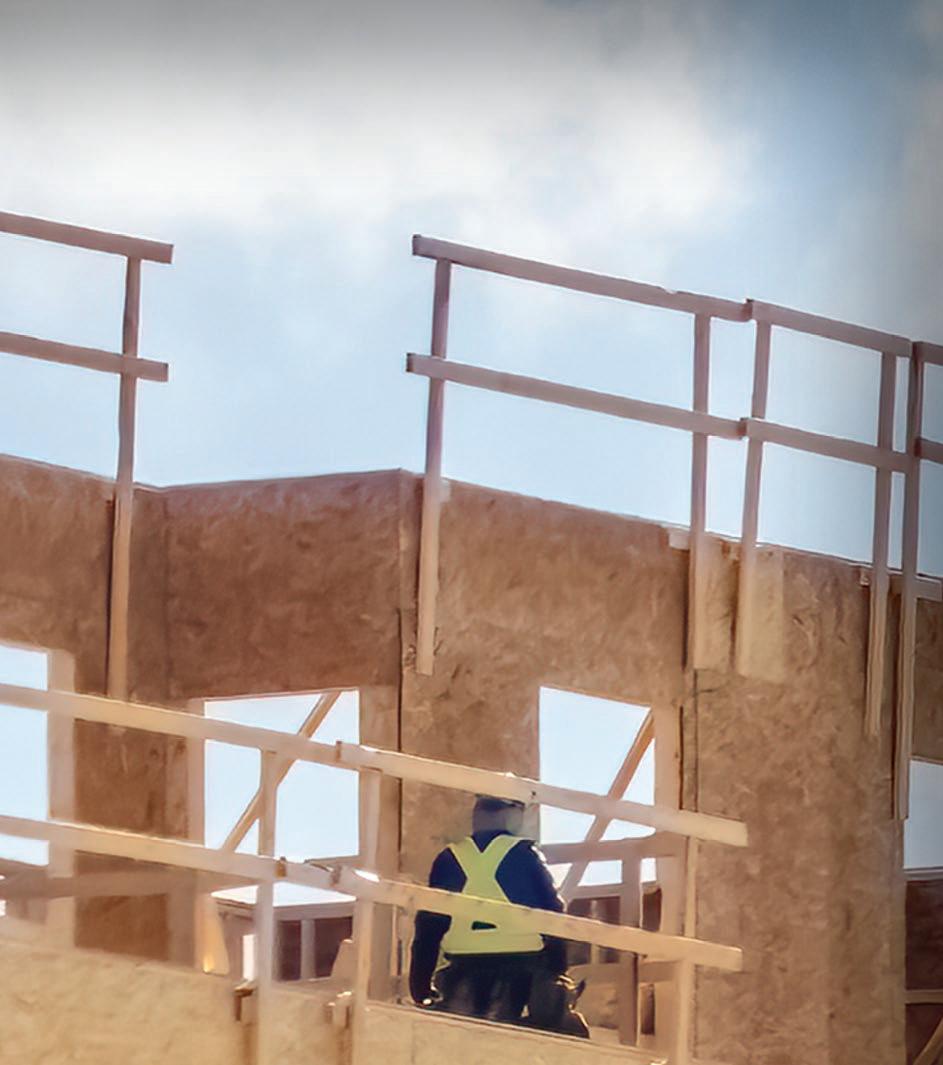
 Par RANDY WYTON, É. Pro., AACI, Essex Appraisal Group, Devon, Alberta
Par RANDY WYTON, É. Pro., AACI, Essex Appraisal Group, Devon, Alberta




privé peut-il, par la réinvention, résoudre la pénurie
de logements abordables?

Un investisseur privé peut-il produire et exploiter des logements abordables sans l’intervention du gouvernement ou d’un organisme à but non lucratif? Les vieux motels et les entrepôts condamnés peuvent-ils trouver une nouvelle vie rentable? Les personnes en difficulté sociale peuvent-elles trouver des logements sûrs adaptés à leurs besoins et à leur mode de vie? En bref : oui, avec un peu de volonté collective et de bon sens de la part des investisseurs, des pouvoirs publics et de la société en général. Au cœur de cette discussion se trouve un conflit qui oppose le sans-abrisme à une réglementation juridictionnelle qui sert à faire augmenter le coût du logement.

À la recherche d’une solution, tous les niveaux de gouvernement sont heureux d’injecter de l’argent public dans le problème du logement. Ne serait-il pas souhaitable que les entreprises privées puissent trouver un moyen de participer à la solution? Si seulement il existait un moyen pour un promoteur immobilier d’investir son argent dans une propriété, de fournir des logements à bas prix dans un secteur mal desservi du marché et d’obtenir un retour convenable pour son investissement. Dans la plupart des marchés en régime de libre entreprise, s’il existe un moyen rentable de répondre à un besoin, le marché y répondra. Le marché du « logement abordable » doit trouver un


Canadian Property Valuation | Évaluation immobilière au Canada 18 Return to CONTENTS


lieu de rentabilité dans notre monde de libre entreprise qui ne nécessite pas de subventions et de programmes gouvernementaux. Il n’est pas étonnant que la libre entreprise se tienne à l’écart du secteur du logement abordable. Le problème réside dans le coût d’acquisition des unités par rapport au rendement de l’investissement réalisé pour la location de ce type de logement. Les logements, quelle que soit leur description conventionnelle, sont tout simplement trop coûteux à l’achat ou à la construction pour être abordables pour les personnes à faible revenu. Si les investisseurs pouvaient acquérir des logements d’investissement à des prix inférieurs, il y aurait une offre de logements abordables. Alors, comment y parvenir?
Pour atteindre l’objectif d’une baisse des coûts d’acquisition des logements d’investissement, nous devons nous pencher sur la manière dont les gens vivent et sur l’endroit où ils vivent. Nous devons réinventer le logement. Nous devons innover. Nous devons réexaminer ce qui constitue un logement. Nous devons donner aux investisseurs les moyens de rendre les coûts d’acquisition des logements abordables afin qu’ils puissent en faire profiter les occupants à faibles revenus qui ne peuvent pas rivaliser avec les logements plus chers. Nous avons besoin de modèles de logements abordables pour fournir des logements abordables à tous les niveaux : pour la propriété, l’exploitation et la vie.

Parc de logements et codes de construction
La première chose à faire pour trouver des points d’entrée plus abordables est de réaffecter des bâtiments tels que les anciens motels, hôtels, entrepôts et immeubles de bureaux. Bien que cela ait été fait à grande échelle dans le passé, les bâtiments qui en résultent sont généralement destinés à des
« Le marché du “logement abordable” doit trouver un lieu de rentabilité dans notre monde de libre entreprise qui ne nécessite pas de subventions et de programmes gouvernementaux. »
utilisateurs à haut revenu en raison du coût élevé de la rénovation.
C’est là que réside une conséquence importante mais involontaire de notre système de code de la construction. Dans l’état actuel des choses, le code de la construction sert en partie à renforcer la création et la fourniture de logements insalubres. Le coût de la mise en conformité des bâtiments avec le code actuel étant très élevé, de nombreux bâtiments marginaux existants, tels que les anciennes maisons de chambres, les motels proposant des locations mensuelles et les hôtels des centres-villes, ne sont ni réparés ni rénovés. Au lieu de cela, ces propriétés anciennes et désaffectées sont laissées à l’abandon. Dans leur état de délabrement, ces bâtiments ne servent qu’à répondre aux besoins de ceux qui n’ont pas les moyens de s’offrir un meilleur logement. Les occupants de ces « projets de logements abordables de facto » sont soumis à des conditions de logement de plus en plus dangereuses et inadaptées. En bref, la barre du code du bâtiment est trop haute pour être atteinte. Dans le cas de ces propriétés anciennes et marginales, les coûts de mise en conformité avec le code de la construction ne sont pas rentables. C’est pourquoi de nombreux propriétaires ne se donnent même pas la peine d’essayer.

« Le coût de la mise en conformité des bâtiments avec le code actuel étant très élevé, de nombreux
bâtiments
marginaux
existants, tels que les anciennes maisons de chambres, les motels proposant des locations mensuelles et les hôtels des centres-villes, ne sont ni réparés ni rénovés. Au lieu de cela, ces propriétés anciennes et désaffectées sont laissées à l'abandon. »


J’ose affirmer qu’avec une volonté gouvernementale suffisante et très peu d’argent, ces obstacles pourraient être éliminés. Nous devons trouver un moyen de relancer l’industrie de la réutilisation des bâtiments, de la rendre abordable et de faire en sorte qu’elle réponde aux besoins de logements abordables.
Le fondement de toute cette discussion est que les vieux bâtiments peuvent résoudre les problèmes de logement abordable sans nécessiter de subventions. Nous examinerons les obstacles qui s’y opposent et pourquoi, et ce que nous pouvons faire pour les réduire.



cadre de la Stratégie nationale du logement visant à construire jusqu’à 60 000 nouveaux logements et à réparer jusqu’à 240 000 logements supplémentaires, avec un budget de 13,2 milliards de dollars au cours des dix prochaines années. Jusqu’à maintenant, il n’y a rien d’« abordable » dans cette initiative en ce qui concerne les contribuables.
Alors pourquoi le secteur privé ne crée-t-il pas de logements abordables?

Les gouvernements et les organisations à but non lucratif consacrent des sommes considérables au secteur du logement abordable en produisant de nouvelles unités de logement à des coûts allant de 150 000 à 300 000 dollars par unité, en fonction de la zone et des types d’unités. Comme l’indique le site Internet de la Société canadienne d’hypothèques et de logement (SCHL), le gouvernement fédéral a récemment annoncé une initiative dans le
Les investisseurs immobiliers achètent des biens avec le désir de produire un retour sur investissement viable. Le prix élevé payé pour acquérir des logements locatifs est le principal moteur des coûts de location élevés. Lorsque le marché libre fonctionne, il arrive un moment où les coûts d’acquisition et les coûts de location s’équilibrent. C’est ce point d’équilibre, dicté par l’essentiel du marché de la demande locative, qui exclut les personnes à faible revenu. Les personnes à faibles revenus n’ont pas les moyens de payer un loyer suffisant pour rentabiliser les investissements effectués par les propriétaires.

Les personnes à faibles revenus représentent un très grand nombre de locataires potentiels, mais leur pouvoir d’achat étant insuffisant, ils ne disposent pas d’une offre de logement appropriée. Il semblerait logique que, si les investisseurs pouvaient obtenir un rendement rentable


Volume 68 | Book 1 / Tome 1 | 2024 19 Return to CONTENTS
« En adoptant des codes “intermédiaires”, les investisseurs pourraient commencer à participer à la réutilisation de ces anciens bâtiments, ce qui permettrait d'améliorer globalement les normes de sécurité et d'évincer les opérateurs “sous la table”. »
en louant à des marchés à faibles revenus, ils constateraient une forte demande. Alors, mettons des investissements abordables à la disposition des propriétaires.


Une étude de cas réussie
Pour rappel, en 2008, j’ai acquis le Travelaire Motel à Kimberley, en ColombieBritannique. Il s’agissait d’un vieux motel de 14 unités qui ne répondait plus aux besoins des voyageurs. Tous ceux qui circulent sur les autoroutes d’Amérique du Nord connaissent les vieux motels « Chez son père » qui ont proliféré au milieu du 20ème siècle. Il s’agit de petits bâtiments à ossature de bois offrant peu de commodités. Le Travelaire Motel était l’un d’entre eux et il était en train de perdre la bataille face aux hôtels modernes.

Lorsque je l’ai acheté, mon plan d’affaires prévoyait la conversion des suites en suites pour occupation à long terme, avec l’ajout de kitchenettes, une rénovation de l’extérieur, un aménagement paysager, de nouvelles fenêtres, des revêtements de sol et de la peinture.
Aujourd’hui, nous avons une communauté prospère et dynamique de résidents à faibles revenus qui s’y sentent chez eux.
Au moment de la conversion, le code du bâtiment n’était pas aussi strict qu’aujourd’hui. Si l’on tentait de le faire aujourd’hui, un grand nombre d’exigences du code de la construction empêcheraient une telle conversion.
et que les usines de fabrication ne sont pas des entrepôts, nous devons considérer le logement abordable comme quelque chose de distinct du logement conventionnel. En enfermant les logements abordables dans des réglementations qui s’appliquent aux logements « classiques », nous créons des obstacles à leur construction, rendant leur développement irréaliste et invraisemblable, et laissant les personnes dans le besoin avec très peu d’options. Examinons de plus près chacun de ces obstacles et identifions quelques solutions possibles.
Codes de construction : Les termes « codes de construction » ou « codes du bâtiment » englobent une myriade étourdissante de législations et d’interprétations. Il existe bien trop de variantes de chacun de ces codes pour que nous puissions les aborder convenablement dans le cadre de cet article. Notre objectif est de souligner que ces codes constituent un obstacle majeur. Si je devais deviner, il n’y a probablement pas un seul planificateur ou inspecteur des bâtiments dans ce pays qui n’ait pas vu un projet échouer à ce point tournant.

Bien que le projet du Travelaire Motel ait été couronné de succès, nous avons rencontré de nombreux exemples depuis lors où les choses n’ont pas pu progresser de la même manière. L’échec de ces projets a généralement été attribué aux codes du bâtiment, ainsi qu’aux règlements de zonage et au financement.
Solutions
Le logement abordable doit devenir une entité à part entière. De la même manière que les immeubles de bureaux sont différents des immeubles de vente au détail

rénovations coûteuses et de faire du projet un candidat improbable pour la construction de logements abordables. Pire encore, ils peuvent décourager la modernisation des bâtiments et inciter les investisseurs à les laisser dans un état de détérioration tout en continuant à les utiliser pour l’occupation par des personnes à faible revenu.


Dans la plupart des juridictions progressistes, si un bâtiment est destiné à un nouvel usage, il doit répondre à toutes les exigences du code de la construction pour ce type de bâtiment, comme s’il était neuf. Cela pose problème. Les codes de construction sûrs et la protection qu’ils offrent sont importants. Mais les coûts associés à ce niveau de protection sont si élevés qu’ils empêchent les investisseurs de s’intéresser au logement.
Pouvons-nous trouver un moyen de réduire les coûts en examinant des solutions de bon sens pour fournir des logements sûrs sans codes de construction aussi stricts? Et, ce faisant, pouvons-nous encourager la rénovation des bâtiments qui se détériorent pour les rendre plus habitables.

Ma solution : établir un nouveau code de construction pour les projets de conversion en logements « abordables » Je sais que cette suggestion peut ressembler à deux niveaux de sécurité, l’un pour les privilégiés et l’autre pour les personnes financièrement défavorisées, mais ce n’est pas le cas. En fait, l’abaissement des codes pourrait rendre les logements plus sûrs à long terme, car les bâtiments actuellement peu sûrs pourraient être améliorés pour répondre à des normes de sécurité plus élevées, alors qu’ils seraient sinon laissés à l’abandon. Avec le temps, le parc de vieux bâtiments continuera d’augmenter, tout comme le coût de la remise en état des bâtiments pour les rendre fonctionnels. Permettez-moi de spéculer sur ce qui se passera si nous ne faisons rien pour réformer les codes de construction. Pour gagner un peu d’argent, les propriétaires de vieux motels et hôtels loueront des suites à long terme, illégalement et sans réglementation. En fait, c’est déjà la réalité pour de nombreux bâtiments, dont beaucoup ne respectent pas les normes de sécurité minimales et présentent des environnements très peu recommandables. En adoptant des codes « intermédiaires », les investisseurs pourraient commencer à participer à la réutilisation de ces anciens bâtiments, ce qui permettrait d’améliorer globalement les normes de sécurité et d’évincer les opérateurs « sous la table ».

Les codes de construction stricts ont pour conséquence involontaire d’entraîner des
Zonage : Les règlements relatifs à l’utilisation des sols servent généralement à contrôler l’utilisation d’un bien immobilier au moment de son développement initial et tentent de rendre cette utilisation cohérente tout au long du cycle de vie du bien. En d’autres termes, les désignations d’utilisation du sol dictent le type de bâtiment qui peut être construit sur un site et le type d’occupants qui peuvent habiter et utiliser le bâtiment. Tout cela se fait selon les souhaits de la municipalité quant à la façon d’organiser la communauté.
Des problèmes surviennent lors de la réutilisation ou les applications de deuxième génération d’un bien immobilier. Dans la


Canadian Property Valuation | Évaluation immobilière au Canada 20 Return to CONTENTS

plupart des cas, les bâtiments expirent par des moyens physiques et sont démolis pour donner un nouveau départ à la propriété. Mais que se passe-t-il lorsque l’entreprise qui occupe un bâtiment arrive au terme de sa viabilité économique alors que le bâtiment lui-même possède encore de nombreuses années de vie fonctionnelle?
Pour remédier à cette situation, je propose une nouvelle affectation des sols appelée « Réutilisation de logements abordables désignés ». Les municipalités pourraient appliquer de manière sélective cette nouvelle affectation des sols à certains sites où les bâtiments ne sont plus économiquement viables dans le cadre des restrictions de zonage actuelles. Grâce à cette nouvelle désignation, les municipalités pourraient offrir des conditions plus adaptées au logement abordable, telles que des autorisations de stationnement plus faibles, des densités plus élevées, des tailles d’unités plus petites et d’autres considérations liées aux espaces communs, à la blanchisserie, à l’accès aux bâtiments, etc. Ce faisant, les besoins en logements abordables pourraient être mieux pris en compte, en marge des limites de l’immobilier résidentiel conventionnel.

Financement : Si les deux questions susmentionnées de zonage et de codes étaient réglées, cette forme d’investissement immobilier trouverait un point d’ancrage et le financement se matérialiserait. Les prêteurs veulent simplement savoir que l’immobilier peut rembourser un prêt et qu’en cas de problème, ils peuvent vendre le bien pour rembourser la dette. Le gouvernement peut faire une chose très importante pour aider : les garanties de prêt pour l’achat et la rénovation de logements privés abordables. Plutôt que de financer des projets de développement de logements abordables,


le gouvernement n’aurait qu’à fournir au prêteur la sécurité du remboursement de la dette et la protection du capital.
La voie à suivre
Le point de mire de cette discussion est que le logement abordable est différent du logement conventionnel. L’argent public est utilisé à outrance pour colmater la brèche dans le barrage, mais en fin de compte, il ne suffit pas. Il faut que la libre entreprise intervienne et réponde aux besoins. Nous devons impliquer les investisseurs et faire en sorte que les pouvoirs publics facilitent l’accès à la rentabilité.

Nous avons créé une société cherchant la protection par voie de réglementation. Ces protections et réglementations peuvent faire obstacle à la fourniture de logements abordables et, dans de nombreux cas, forcer des bâtiments à demeurer dans des conditions dangereuses. Envisageons le logement abordable sous un nouvel angle. Réexaminons les barrières de manière sensée. Ne laissons pas les gens vivre dans la rue parce que nous ne parvenons pas à trouver un moyen de rendre les logements sûrs et abordables.
Il existe des investisseurs, des propriétés et d’innombrables possibilités de faire en sorte que la communauté des investisseurs immobiliers privés s’attaque au problème du logement abordable. En innovant pour aller de l’avant, nous pourrions découvrir de nombreux avantages invisibles et inattendus. En cherchant de nouvelles idées dans ce domaine, nous pourrions redonner vie à des biens immobiliers désaffectés, en préservant leur caractère, en revitalisant des quartiers, en créant des emplois et en éliminant potentiellement du marché les logements insalubres. Plus important encore, le résultat offrira aux gens des lieux de vie sûrs et abordables et engagera le Canada sur la voie d’un logement approprié pour tous.




« Nous avons créé une société cherchant la protection par voie de réglementation. Ces protections et réglementations peuvent faire obstacle à la fourniture de logements abordables et, dans de nombreux cas, forcer des bâtiments à demeurer dans des conditions dangereuses. Envisageons le logement abordable sous un nouvel angle. Réexaminons les barrières de manière sensée. »
« Les municipalités pourraient offrir des conditions plus adaptées au logement abordable, telles que des autorisations de stationnement plus faibles, des densités plus élevées, des tailles d'unités plus petites et d'autres considérations liées aux espaces communs, à la blanchisserie, à l'accès aux bâtiments, etc. »




Volume 68 | Book 1 / Tome 1 | 2024 21 Return to CONTENTS



Bridging THE GAP

t is common for small and mediumsized private businesses to operate out of a real estate asset that it owns, whether that be a residential home converted to offices or a specialized industrial facility. As a result, real estate appraisers and business valuation practitioners commonly intersect when carrying out litigation support, tax planning support, certain commercial appraisals, and related consulting assignments. The practitioners from both professions speak the same language: net income, fair market value, etc. The similarity, however, ends at terminology.
Net income in real estate represents stabilized income less stabilized expenses; that is not what a business valuator thinks when they use this term. Net income in valuation is equivalent to accounting net income and represents what remains of incurred and accrued revenue after all incurred and accrued expenses, including income taxes. The result is that a cash fl ow measure before taxes (net income in real estate) and an accounting accrual-based aftertax measure (net income in business valuation) are both known as ‘net income.’

















“Net income in real estate represents stabilized income less stabilized expenses; that is not what a business valuator thinks when they use this term.”
By Alisa Zorina
P. App., AACI, MBA, CPA, CA, CBV, CFF, Principal, Zorina Consulting Ltd.
capitalized income in real estate and business valuation
Canadian Property Valuation | Évaluation immobilière au Canada 22 Return to CONTENTS


“The mandate to value a company’s assets — rather than its shares — is what drives real estate appraisers to operate on a pretax basis and business valuation practitioners to operate on an after-tax basis.”
Real Estate Appraisal
Income (stabilized)
Less: Expenses (stabilized)
= Equals: Net Income ÷
Divided by: Capitalization Rate (market)
=
Equals: Market Value of Asset
Comparing and contrasting defi nitions is a start, but at the heart of the divide between real estate and business valuation is how each profession approaches the assignment.
A real estate appraiser values the real estate asset, while a business valuation practitioner values the concert of assets that generate value. Real estate may be a part of that concert, but there are also other tangible and intangible assets such as brand, patents, customer lists, and operational know-how that help a company generate income — and, in some cases, more or less income than competitors with the same assets.
It is exactly because the real estate appraiser’s mandate is to value the asset that they do not become entangled in the web of tax structures. The value of a business, on the other hand, is exchanged through the purchase and sale of company shares. A business valuation practitioner must therefore consider the impact of corporate taxes and corporate structure before arriving at the value of a given company’s shares. The mandate to value a company’s assets — rather than its shares — is what drives real estate appraisers to operate on a pretax basis and business valuation practitioners to operate on an after-tax basis.
The impact of this distinction is most apparent when looking at the capitalization approach used by both professions. While both professions recognize that the value of an asset or a business can be predicated on the income it generates, there exists a subtle, but signifi cant diff erence that goes beyond taxes and corporate structure.
Recall that, in real estate appraisal, direct capitalization consists of taking income and expenses that are stabilized
and dividing this by the capitalization rate to arrive at the market value of an asset. In business valuation, revenues and expenses are normalized, reduced by tax, and divided by the capitalization rate to arrive at the enterprise value, to which a business valuation practitioner will add redundant assets and deduct debt to arrive at the market value of business equity.
The subtlety is not in the capitalization rates, debt, or redundant assets: those diff erences are apparent. The subtlety is in the mechanics of stabilization versus normalization between the two professions, and while the terms may sound similar, that is where the similarity ends. While both professions review past performance to identify non-recurring blips that need to be adjusted to arrive at what a typical operating year looks like, appraisal professionals can do something that business valuators cannot.
Specifi cally, appraisers can stabilize income (and expenses) by adjusting the fi nancial performance of the asset to market terms. For example, if the owner of an asset entered into a lease agreement where the renter pays below market rent, an appraiser will refl ect the impact of the unfavorable terms for the duration of the lease, then assume that the asset will revert to market terms under the next owner.
Doing this makes sense in the context of valuing an asset; we assume the next owner of the asset will be an informed market participant that will not make the same mistake as the current owner. On the other hand, a business valuation practitioner cannot ‘adjust revenue to market’ when valuing a business and the normalizing adjustments to revenue, if any, will be tied to historic operating performance.
Business Valuation
Revenues (normalized)
Minus: Expenses (normalized) = Equals: Earnings (EBIT, or EBITDA)
Less: Income Taxes = Equals: Net Income ÷
Divided by: Capitalization Rate (built-up) =
Equals: Enterprise Value
Less: Debt +
Plus: Redundant Assets =
Equals: Market Value of Business Equity
To demonstrate the impact of not being able to ‘stabilize to market’ like an appraiser, imagine a scenario where a business valuator would review a plastic surgeon’s fi nancials and conclude: “Dear surgeon, you are not very good at running your business – let me ‘stabilize’ your revenue based on what your (more successful) peers are earning in the industry.” The resulting value would not be the value of that specifi c surgeon’s business and the business valuators mandate would not be fulfi lled.
Being clear on the appraiser’s mandate to value the asset and the business valuator’s mandate to value the business becomes critical in engagements where the line between assets and operations blurs. Understanding the distinct lens with which each profession views these engagements can help both professions bridge the gap to consistent valuation conclusions.
Volume 68 | Book 1 / Tome 1 | 2024 23 Return to CONTENTS



Combler le fossé :
le revenu capitalisé dans l’évaluation des biens immobiliers et des entreprises
l est fréquent que les petites et moyennes entreprises privées exercent leurs activités à partir d’un bien immobilier dont elles sont propriétaires, qu’il s’agisse d’une maison d’habitation convertie en bureaux ou d’une installation industrielle spécialisée. Par conséquent, les évaluateurs immobiliers et les praticiens de l’évaluation d’entreprises se croisent fréquemment lorsqu’ils apportent leur soutien en matière de litiges, de planification fiscale, de certaines évaluations commerciales et de contrats de service de consultation. Les praticiens des deux professions parlent le même langage : revenu net, juste valeur marchande, etc. La similitude s’arrête toutefois à la terminologie.


Le revenu net dans l’immobilier représente le revenu stabilisé moins les dépenses stabilisées; ce n’est pas ce que pense un évaluateur d’entreprise lorsqu’il utilise ce terme. Le revenu net dans l’évaluation est équivalent au revenu net comptable et représente ce qui reste des recettes engagées et à recevoir après toutes les dépenses engagées et à recevoir, y compris l’impôt sur le revenu. Il en résulte qu’une mesure des flux
















de trésorerie avant impôts (revenu net dans l’immobilier) et une mesure après impôts basée sur la comptabilité d’exercice (revenu net dans l’évaluation d’entreprise) sont toutes deux appelées « revenu net ».
Comparer et opposer les défi nitions est un début, mais le clivage entre l’évaluation immobilière et l’évaluation d’entreprise réside dans la manière dont chaque profession aborde le mandat.
« Le revenu net dans l’immobilier représente le revenu stabilisé moins les dépenses stabilisées; ce n’est pas ce que pense un évaluateur d’entreprise
lorsqu’il utilise ce terme. »
Par Alisa Zorina É. Pro., AACI, MBA, CPA, CA, CBV, CFF Principal, Zorina Consulting Ltd.
Canadian Property Valuation | Évaluation immobilière au Canada 24 Return to CONTENTS


« Le mandat d’évaluer les actifs - plutôt que les actions - d’une entreprise est ce qui pousse les évaluateurs immobiliers à travailler sur une base avant impôt et les praticiens de l’évaluation d’entreprises à travailler sur une base après impôt. »
Un évaluateur immobilier évalue l’actif immobilier, tandis qu’un praticien de l’évaluation d’entreprise évalue l’ensemble des actifs qui génèrent de la valeur. L’immobilier peut faire partie de cet ensemble, mais il existe également d’autres actifs tangibles et intangibles, tels que la marque, les brevets, les listes de clients et le savoir-faire opérationnel, qui aident une entreprise à générer des revenus – et, dans certains cas, plus ou moins de revenus que des concurrents disposant des mêmes actifs.
C’est précisément parce que le mandat de l’évaluateur immobilier est d’évaluer l’actif qu’il ne s’emmêle pas dans l’écheveau des structures fiscales. La valeur d’une entreprise, en revanche, est échangée par l’achat et la vente d’actions de la société. Un spécialiste de l’évaluation d’entreprises doit donc tenir compte de l’impact de l’impôt sur les sociétés et de la structure de l’entreprise avant de déterminer la valeur des actions d’une société donnée. Le mandat d’évaluer les actifs –plutôt que les actions – d’une entreprise est ce qui pousse les évaluateurs immobiliers à travailler sur une base avant impôt et les praticiens de l’évaluation d’entreprises à travailler sur une base après impôt.
L’impact de cette distinction est particulièrement évident lorsqu’on examine l’approche de capitalisation utilisée par les deux professions. Si les deux professions reconnaissent que la valeur d’un actif ou d’une entreprise peut être basée sur les revenus qu’elle génère, il existe une différence subtile mais significative qui va au-delà des impôts et de la structure de l’entreprise.
Rappelons qu’en matière d’évaluation immobilière, la capitalisation directe consiste à prendre des revenus et des dépenses stabilisés et à les diviser par le taux de capitalisation pour obtenir la valeur marchande d’un actif. Dans l’évaluation d’une entreprise, les revenus et les dépenses sont normalisés, diminués des impôts et divisés par le taux de capitalisation pour
obtenir la valeur de l’entreprise, à laquelle le spécialiste de l’évaluation d’entreprise ajoutera les actifs superflus et déduira les dettes pour obtenir la valeur de marché des capitaux propres de l’entreprise.
La subtilité ne réside pas dans les taux de capitalisation, les dettes ou les actifs superflus : ces différences sont évidentes. La subtilité réside dans les mécanismes de stabilisation et de normalisation entre les deux professions, et bien que les termes puissent sembler similaires, c’est là que s’arrête la similitude. Bien que les deux professions examinent les performances passées afin d’identifier les écarts non récurrents qui doivent être ajustés pour obtenir une année d’exploitation typique, les professionnels de l’évaluation peuvent faire quelque chose que les évaluateurs d’entreprises ne peuvent pas faire.
Plus précisément, les évaluateurs peuvent stabiliser les revenus (et les dépenses) en ajustant les performances financières de l’actif aux conditions du marché. Par exemple, si le propriétaire d’un actif a conclu un contrat de location dans lequel le locataire paie un loyer inférieur à celui du marché, un évaluateur reflétera l’impact des conditions défavorables pendant la durée du bail, puis supposera que l’actif reviendra aux conditions du marché sous le contrôle du prochain propriétaire. Cette approche est logique dans le contexte de l’évaluation d’un actif; nous supposons que le prochain propriétaire de l’actif sera un acteur du marché informé qui ne commettra pas la même erreur que le propriétaire actuel. En revanche, un professionnel de l’évaluation d’entreprise ne peut pas « ajuster les recettes au marché » lors de l’évaluation d’une entreprise et les ajustements de normalisation des recettes, s’il y en a, seront liés à la performance opérationnelle historique.
Pour illustrer l’impact de l’impossibilité de « stabiliser au marché » comme un
Évaluation immobilière
Revenu (stabilisé)
-
Moins : Dépenses (stabilisées)
=
Égal : Revenu net ÷
divisé par : Taux de capitalisation (marché) =
Égal : Valeur marchande du bien
Évaluation commerciale
Revenus (normalisés)
-
Moins : Dépenses (normalisées) =
Égal : Bénéfices (BAII ou BAIIA)
-
Moins : Impôt sur le revenu
=
Égal : Revenu net ÷
divisé par : Taux de capitalisation (bâti) =
Égal : Valeur de l’entreprise
-
Moins : dette +
Plus : biens redondants =
Égal : Valeur marchande des capitaux propres
évaluateur, imaginons un scénario dans lequel un évaluateur d’entreprise examinerait les données financières d’un chirurgien plastique et conclurait : « Cher chirurgien, vous n’êtes pas très bon dans la gestion de votre entreprise –laissez-moi «stabiliser» vos revenus sur la base de ce que vos pairs (plus prospères) gagnent dans l’industrie. » La valeur obtenue ne correspondrait pas à la valeur de l’entreprise de ce chirurgien spécifique et le mandat de l’évaluateur ne serait pas rempli.
Il est essentiel de bien comprendre le mandat de l’évaluateur, qui est d’évaluer l’actif, et celui de l’évaluateur d’entreprise, qui est d’évaluer l’entreprise, dans les missions où la frontière entre les actifs et les activités est floue.
La compréhension de l’optique distincte avec laquelle chaque profession considère ces engagements peut aider les deux professions à combler le fossé qui les sépare de conclusions cohérentes en matière d’évaluation.
Volume 68 | Book 1 / Tome 1 | 2024 25 Return to CONTENTS






Arbitration and appraisal:
RENT RESET ISSUES
PART 1
Abstract
Commercial leases often contain arbitration clauses to address disputes between a landlord and tenant. One of the most common arbitration disputes centers on the determination of market rent, or rent as defi ned or described in the lease, when the parties are unable to reach agreement through negotiation. Often the arbitration clause in the lease will dictate that an appraiser possessing certain professional qualifi cations and experience is selected and mutually appointed or party-appointed if an arbitral panel is contemplated. A determination of the rent to be fixed by the
By TONY SEVELKA , P. App., AACI, President, International Valuation Consultants Inc.
arbitrator or arbitral panel either during the term of the lease or at the end of the lease pursuant to an option to extend or renew the lease often requires evidence from real estate professionals, which typically include valuators. An appraiser appropriately qualified to act as an arbitrator, coupled with an effective appraisal strategy, should reduce the time required to complete the arbitration, and result in cost savings for both parties.
Depending on the jurisdiction in which the property is located, the complexity of the valuation issue(s), or the amount of rent in dispute, it may be appropriate for each party to have its own appraisal report


independently reviewed (Sorenson, 2010) by a qualifi ed appraiser prior to arbitration. This article explores the decision to arbitrate and some of the issues encountered through the presentation of case studies, the role of an appraiser as an arbitrator, and the expectations of an appraiser acting as an expert witness.
Introduction
Many long-term commercial leases ( Sevelka, 2020 ), whether of land or space, contain an arbitration clause as a courtalternative mechanism to resolve disputes between a landlord (lessor) and a tenant
Canadian Property Valuation | Évaluation immobilière au Canada 26 Return to CONTENTS
(lessee) in a consensual, confi dential, and private forum. One of the most common disputes concerns resetting of rent either at some point during the term of the lease, or at the end of the existing term by an option to extend the term of the existing lease or by exercising a renewal option. If the parties fail to negotiate a new rent within a specifi ed timeframe as dictated by the lease, one of the parties will trigger the arbitration clause calling either for the appointment of a mutually agreed-upon arbitrator or for each party to designate a party-appointed arbitrator, the two of whom will, in turn, select a head (neutral) arbitrator or chair, rounding out the arbitral panel. Appointing real estate appraisers with appropriate professional designations, knowledge, and skills as arbitrators to resolve rent reset disputes, and presenting them with appraisal evidence that is thorough and credible,1 should reduce the time to complete arbitrations, and result in substantial cost savings to the parties of the dispute.
This article explores some of the criteria by which appraisers are selected to act as arbitrators, and the importance of appraisers in acting as expert witnesses to present evidence that is consistent with the nature of the dispute, and in compliance with recognized appraisal theory and practice. Unique situations involving space lease disputes and the potential consequences of failing to adhere to the arbitration clause or the agreement to arbitrate mutually agreed upon by the parties to the dispute are also addressed.
Defi nition of arbitration
Arbitration involves resolution of disputes outside of court, wherein the parties to a dispute refer it to one or more persons, by whose decision (the ‘award’) they agree to be bound. Arbitration is a form of binding dispute resolution, similar to litigation, and entirely distinct from the various forms of non-binding dispute resolutions, such as negotiation and mediation, although it is possible to enter into binding mediation (Thayer and Smith, 2012) 2 As described by the American Bar Association,
“Arbitration is a private process where disputing parties agree that one or several individuals can make a decision about the dispute after receiving evidence and hearing arguments. The arbitration process is similar to a trial in that the parties make opening statements and present evidence to the arbitrator.”
Compared to a traditional trial, arbitration allows for appointment of subject matter experts as decision makers, is less formal, and can usually be completed more quickly.
Arbitration Award
An Arbitration Award (or Arbitral Award) resolves a matter in dispute in a private forum. At the conclusion of an arbitration hearing, the arbitrator or arbitral panel issues an Award, which is a determination on the merits (i.e., the decision), and is analogous to a judgment in a court of law. Depending on the jurisdiction in which the property is located or the terms of the arbitration agreement, the award is issued to the parties either in a ‘conclusory’ 3 manner or ‘reasoned’ (Chalk, 2019 ) setting out in transparent and suffi cient detail (Kirchner, 2014) the bases of the decision.
Brief literature review
In 1987, the American Arbitration Association published Arbitration of Real Estate Valuation Disputes,4 which was funded by a grant from the American Institute of Real Estate Appraisers, a predecessor organization of the Appraisal Institute. The text includes a collection of papers authored by a number of prominent appraisers and lawyers who were engaged in the arbitration of valuation disputes of real property rights and describes the procedural steps and obligations of an arbitrator, as well as the role of an independent expert.
While the appraisal profession in North America has a long history of involvement in resolving real estate disputes, the topic of arbitration appears for the fi rst time in the 11th edition of the Appraisal Institute’s The Appraisal of Real Estate
published in 1999 in which the word “arbitration” appeared only once. In November 2016 (later revised in 2020), the Appraisal Institute published Guide Note 16 Arbitration, 5 accompanied by a press release referencing Advisory Opinion 21 of the Uniform Standards of Professional Appraisal Practice (USPAP ), 6 which explains the purpose of arbitration, as well as the role and professional obligations of a Member of the Appraisal Institute acting either as an expert witness or as an arbitrator, usually to resolve a dispute involving market value, market rent, value, or rent as defi ned and described in the lease.
The Appraisal Institute, in broadening an understanding of arbitration as a means of resolving valuation disputes, undertook several initiatives to raise awareness and understanding of arbitration as an area of expertise within the valuation profession. These include:
• Publication of Appraisers in Arbitration (Konikoff, 2022);
• Inclusion of a brief reference to arbitration in the 15th edition (2020) of The Appraisal of Real Estate as a subcategory of consulting (p. 648);
• Development of a course entitled, ‘Expand Your Practice: Arbitration Do’s and Don’ts.’
The text, Appraisers in Arbitration, delves into areas of appraisal practice beyond those typically associated with valuation practice. Alternative dispute resolution (ADR), which includes negotiation, mediation, and arbitration (Celik, 2013), presents a growing area of need for the skills of valuation professionals.
The Appraisers in Arbitration, second edition, provides detailed information to help valuation professionals participate in arbitration and understand the roles they will play. The text provides specifi c advice on how to perform each task required of an arbitrator, expert witness, or consultant and the standards that apply to each service. Every step in the arbitration process, from the preliminary hearing to the fi nal award, is explained and common arbitration scenarios and real-world examples are discussed.
Volume 68 | Book 1 / Tome 1 | 2024 27 Return to CONTENTS
Appraiser as arbitrator
The qualifi cations for selecting an arbitrator in a rent reset dispute are dictated by the language of the lease or as agreed upon by the parties to the dispute. If an appraiser is appointed to act as an arbitrator in a rental dispute, that individual is typically expected to possess a requisite professional designation, as well as the skills and experience to understand and resolve the dispute. Complex rent resets involving ground leases ( Sevelka, 2011) demand a higher level of knowledge and expertise than is necessary to address a rent reset of a single tenancy in a small storefront. However, in all rent reset disputes the real estate appraiser appointed as an arbitrator should possess experience with the property type and have experience reading commercial leases and understanding relevant lease clauses. A lease is a contract, and the interpretation of the rent reset clause is of critical importance to the parties in a rent reset dispute.7 Appraisers may possess the same professional designations, but can have vastly diff erent skills and experiences. An appraiser’s suitability to act as an arbitrator depends on the language of the arbitration clause or as agreed upon by the parties, and may speak to some of the following:
• Professional Appraiser or Appraisal Review Qualifi cations (e.g., MAI, AACI, FRICS, AI-GRS 8)
• Continuing Professional Development (ongoing professional education)
• Professional Contributions (e.g., relevant articles published in recognized journals or trade publications)
• Appraisal Experience
• Ethical Requirements (whether the appraiser has been disciplined by any governing appraisal body for ethical breaches)
• Reputation within the Appraisal Community
• Geographic knowledge of the area where the property (demised premises) is located (Carneghi, 1999 ). In virtually all jurisdictions, the decision of an arbitrator or arbitral panel is fi nal and binding, so it is extremely important
for a real estate appraiser when acting as an arbitrator to understand their legal duties to the parties. Short of fraud, evident partiality,9 or a failure on the part of the arbitrator to adhere to the parties’ arbitration agreement or to the provisions of the relevant arbitration act in conducting the arbitration, it is virtually impossible to vacate an arbitration award.10 Public policy supports minimal judicial intervention in an arbitration award, and the parties do not get to appeal an adverse decision11 unless the arbitrator or arbitration panel has exceeded its jurisdiction12 or authority.13 Parties who opt for arbitration to settle their disputes accept up-front the risk of errors in law or fact committed by the arbitrator or arbitration panel.14, 15
No matter how harsh,16 unfair, or unreasonable the terms and conditions of a lease are to either party, absent any ambiguity,17 courts will not intervene and rewrite a lease to which the lessor and lessee voluntarily and mutually agreed on terms and conditions drafted by experienced legal counsel. Rent reset clauses are the product of negotiation either directly by the parties to the lease (contract) or indirectly through legal counsel, and each rent reset clause is uniquely tailored to meet the specifi c business interests of each party, and the way in which parties contract to have rent reset is entirely within their discretion. The fact that a contract term is imprudent for one party to have agreed upon or that it worked out badly or even disastrously is no reason to deviate from the clear language of a rent reset clause. Whether a rent reset clause favours the landlord or the tenant is an irrelevant factor in fi xing the new rent.
Arbitration, unlike mediation,18 is not intended to produce a ‘win-win’ outcome for both parties, which can sometimes lead a disgruntled party confronted by an unfavourable award to sue its own valuation expert in those jurisdictions that do not recognize witness immunity.19 However, an appraiser acting as an arbitrator is entitled to arbitral immunity, which is defi ned and explained as follows:
“Arbitral immunity refers to the immunity that is extended to arbitrators for acts arising out of the scope of their arbitral functions. Arbitrators are judges chosen by the parties to decide the matters submitted to them. The independence necessary for principled and fearless decision making can best be preserved by protecting these persons from bias or intimidation caused by the fear of a lawsuit arising out of the exercise of official functions within their jurisdiction. Arbitral immunity is the keystone of the arbitral system and should not be overturned. Arbitral immunity is necessary for finality of arbitrators’ decisions.”20
Conducting an arbitration
Once appointed, an arbitrator or arbitral panel performs several duties, and arbitral decisions on issues that are within the arbitrator’s jurisdiction are given substantial deference by the courts. In a rent reset arbitration proceeding, the arbitrator or arbitral panel should:
• Obtain a copy of the executed lease, including amendments to the lease, and a statement of the issue(s) in dispute (e.g., property value, rental value) from each party.
• Read the lease thoroughly, including schedules and any amendments to the lease, well in advance of the actual arbitration.
• Request a mutually agreed-upon Statement of Facts from the parties to narrow the scope of the dispute and minimize the duration and cost of the arbitration.
• Not engage in ex parte communications, as this conduct is a ground supporting vacatur of an arbitral award.21
• Arrange a preliminary conference call, remote hearing, or in-person hearing with the parties to discuss pre-arbitral issues, arbitral procedural issues, and rules set forth by the arbitrator for the hearing. The arbitrator and the parties should agree on basic procedural issues, such as the schedule, length, and location of hearing(s), the number of expert witnesses, and the amount of time each party will have to present its case.
Canadian Property Valuation | Évaluation immobilière au Canada 28 Return to CONTENTS
• Conduct the arbitration on the basis of a formal hearing, written submissions, teleconference or video conference (visual and audio), or a combination thereof. Consider the complexity of the issue(s) in dispute, while adhering to the principles of a fair arbitration process. 22 The COVID-19 global pandemic, announced March 11, 2020, which restricted public gatherings, has resulted in a paradigm shift reducing or eliminating the need for in-person hearings, and now post-pandemic, most arbitrations are conducted online resulting in substantial cost savings to the parties.
• Issue, if necessary, a subpoena requiring a non-party to produce documents and/or attend and give evidence at an arbitration hearing. However, seeking documents and/or testimony from non-party witnesses is a complicated legal process in some jurisdictions, and if the subpoena is resisted, it may cause unnecessary delay of the arbitration. In some rental disputes, before the actual hearing commences, it may be appropriate for the arbitrator to order the appraisers retained by the parties to meet in private (without prejudice) to seek consensus on issues bearing on the determination of rent and submit a joint statement to that effect, which should be of assistance to the arbitrator and possibly lead to settlement between the parties.
• Exercise discretion over the admissibility of evidence as to its relevance and necessity, and guard against tactics that are inconsistent with the principle of fundamental fairness (Blankley, 2014).23
• Inspect the subject premises, when it is appropriate and practical to do so or when authorized by the parties.
• Inspect the comparables, when it is appropriate and practical to do so or when authorized by the parties. 24
• Rule on motions submitted by the parties during the arbitration.
• Enter an award upon agreed terms at the request of the parties if a settlement is reached during the
arbitration. Conversely, the parties may agree to discontinue the arbitration and enter into a private contract spelling out the terms and conditions of the settlement.
• Issue a written, dated, and signed decision (Arbitration Award),25 including the legal place of the arbitration, and refrain from attaching any professional designations to the signature.26
• Issue a written and signed Cost Award in favour of the prevailing party, if mandated, following the completion of the arbitration.
End notes
1 Uniform Standards of Professional Appraisal Practice (USPAP define “credible” as “worthy of belief).” Appraisal Institute’s Standards of Valuation Practice (SVP), effective November 12, 2021, define “credible” as “worthy of belief, supported by analysis of relevant information. Credibility is always measured in the context of intended use.
2 See Bowers v. Raymond J. Lucia Companies, Inc., 206 Cal. App. 4th 724 (2012) 142 Cal. Rptr. 3d 64. https:// casetext.com/case/bowers-v-raymondj-lucia-cos
3 Consisting of or relating to a conclusion or assertion for which no supporting evidence is off ered. https://dictionary. fi ndlaw.com/defi nition/conclusory.html
4 Arbitration of Real Estate Valuation Disputes, American Arbitration Association, New York. 1987.
5 Guide Note 16, Arbitration, revised November 2020, https://www. appraisalinstitute.org/assets/1/7/guidenote- 16.pdf
6 Appraisal Institute’s New Guidance Outlines Appraiser’s Role in Arbitration, Real Estate Rama, January 27, 2017. https://www. realestaterama.com/appraisal-institutesnew-guidance-outlines-appraisers-rolein-arbitration-ID040185.html [retrieved on 4 December 2023].
7 Contract interpretation might require the assistance of legal counsel.
8 The AACI designation is awarded by the Appraisal Institute of Canada, and
the FRICS designation is awarded by the Royal Institution of Chartered Surveyors in United Kingdom, both with similar designation requirements to the MAI granted by the Appraisal Institute in United States. The AI-GRS is a ‘General Review Specialist’ designation awarded by the Appraisal Institute to professionals who provide reviews of appraisals of a wide range of property types, including commercial, industrial, agricultural, residential, and vacant land. For designation requirements, see the link https://www.appraisalinstitute.org/ assets/1/7/ai- grs-path-chart.pdf.
9 On December 30, 2019, the Ninth Circuit Court of Appeals denied petitions for panel rehearing and rehearing en banc in Monster Energy Co. v. City Beverages, LLC, No. 17-55813, and confi rmed its decision to vacate an arbitration award for failure to disclose that (1) the arbitrator was a co-owner of JAMS (Judicial Arbitration and Mediation Services, Inc.); and (2) the prevailing party (Monster Energy Co.) had several prior cases with JAMS. The Ninth Circuit reversed and vacated the arbitration award for ‘evident partiality’ resulting from the arbitrator’s failure to disclose an ownership interest in JAMS, even though he stated to the parties that he “has an economic interest in the overall fi nancial success of JAMS.”
10 In the United States, grounds for setting aside an award are set out in the Federal Arbitration Act (FAA): “(1) where the award was procured by corruption, fraud, or undue means; (2) where there was evident partiality or corruption in the arbitrators, or either of them; (3) where the arbitrators were guilty of misconduct in refusing to postpone the hearing, upon sufficient cause shown, or in refusing to hear evidence pertinent and material to the controversy; or of any other misbehavior by which the rights of any party have been prejudiced; or (4) where the arbitrators exceeded their powers, or so imperfectly executed them that a mutual, final, and definite award upon the subject matter submitted was not made (9 U.S. Code § 10 (a).”
Volume 68 | Book 1 / Tome 1 | 2024 29 Return to CONTENTS
11 “Courts have repeatedly instructed litigants that challenges to the arbitrator’s rulings on discovery, admission of evidence, reasoning, and conduct of the proceedings do not lie.” Evans v. Cornerstone Development Co., 35 Cal. Rptr. 3d 745 (2005) 134 Cal.App.4th 151.
12 In Westnav Container Services v. Freeport Properties Ltd., 2010 BCCA 33, the arbitrator’s award made an error in describing the rental rate for a comparable property and, in supplementary reasons, the arbitrator eliminated reference to that comparable and added reference to other comparables, leaving the result unchanged. The Court of Appeal, at para. 47, found that the arbitrator had exceeded his jurisdiction and committed arbitral error.
13 In Bankers Life & Casualty Insurance Co. v. CBRE, Inc., 830 F.3d 729, (2016), the Court of Appeals, 7th Circuit, held that the arbitration panel exceeded its authority by basing its award on documents outside the parties’ agreement, unilaterally inserted by CBRE.
14 As established by the US Supreme Court in Oxford health Plans v. Sutter, 133 S. Ct. 2064, 569 U.S. 564, 186 L. Ed. 2d 113, “[t] he potential for…mistakes is the price of agreeing to arbitration.”
15 In Canada, in Sattva Capital Corp. v. Creston Moly Corp.2014, SCC 53, the Supreme Court of Canada limited the availability of appeals from commercial arbitration awards on questions of law to those “rare” cases where the arbitral tribunal has made an “extricable error of law.” Pre-publication Article: Arbitration Appeals on Questions of Law in Canada: Stop Extricating the Extricable!, https://arbitrationmatters.com/ news/pre-publication-article-arbitrationappeals-on-questions-of-law-in-canadastop-extricating-the-inextricable/ retrieved on 4 December 2023.
16 Heller & Henretig v. 3620-168th St., Inc., 302 N.Y. 326; Hartigan v. Casualty Co. of America, 227 N.Y. 175.
17 Ruth v. A.Z.B. Corp., 2 Misc.2d 631, 636 [NY County], aff d 2A.D/2d 970 [1st Dept 1956]. Case cited in The Manufacturers Life Insurance Company v. Parc-IX Limited, 2018 ONSC 3625.
18 Black’s Law Dictionary, 11th edition, defi nes “mediation” as “[a] method of nonbinding dispute resolution involving a neutral third Party who tries to help the disputing parties reach a mutually agreeable solution.”
19 In Marrogi v. Howard, 805 So. 2d 1118 –La: Supreme Court 2002, para. 1129, and corresponding footnote 16. In Estate of Voutsaras v. Bender, Mich: Court of Appeals 2019, the court ruled that “[l] icensed professionals owe the same duty to the party for whom they testify as they would to any client, and witness immunity is not a defense against professional malpractice.”
20 USLegal, https://defi nitions.uslegal. com/a/arbitral-immunity/
21 The United States Court of Appeals for the Sixth Circuit held that ex parte communications void an award if they violate the parties’ arbitration agreement. In Star Ins. Co. v. Nat’l Union Fire Ins. Co. of Pittsburgh, PA, No. 15- 1403, 2016 BL 267734 (6th Cir. Aug. 18, 2016),
22 In 1414 Holdings, LLC v. BMS-PSO, LLC, 2017 NY Slip Op 32551(U), the New York Supreme Court upheld a neutral arbitrator’s decision to not undertake a formal hearing, and confi n[e] “the scope of the assignment..[to] meeting with [the parties’] arbitrators, reviewing all submitted documents and evidence, inspecting the subject premises, confi rming the appropriateness of the
data assumption and analyses presented by the arbitrators, and reaching a decision as to the value of the 19th Floor Space [at 1414 Avenue of the Americas in New York].” There is no express requirement in the lease for a formal hearing.
23 In 1552 Broadway Retail Owner LLC v. McDonald’s, 2017 NY Slip Op 50011(U) [Jan 9, 2017], the New York Supreme Court upheld the Arbitration Award, while “fi nd[ing] the behavior of Tenant’s counsel and expert reprehensible, especially in light of the Tenant’s previous protestations that the parties having diff erent understandings of FMV would cause the arbitration to be ‘fatally fl awed.’” [Footnote 9]
24 In California Union Square LP v. Saks & Co., LLC, 50 Cal.App.5th 340 (2020), the arbitration agreement gave the arbitrator discretion to inspect “the subject property” and “the party experts’ lease comparables,” but the trial court determined that the arbitrator exceeded his powers by visiting properties outside the scope of his authority as arbitrator.
25 In most jurisdictions in the United States, reasons for an arbitration Award are not required, but the parties may still request a reasoned Award.
26 A state-licensed appraiser acting as an arbitrator in Hawaii is subject to Hawaii Revised Statutes Section 466K-6, and “the record of an award shall include, but not be limited to fi ndings of fact, the…rationale for the award…certifi cation of compliance with the most current Uniform Standards of Professional Appraisal Practice…; and information regarding the evidence, including the data, methodologies, and analysis that provided the basis for the award.” This requirement is unique to the state of Hawaii.
NOTE: Part two of this article deals with the arbitration-specific information and examples regarding lease renewals and extensions, determining rent, existing use or (unrestricted) highest and best use, appraisal suggestions, a case study, non-compliant appraisal reports, and the conclusion. The next installment will be published in Canadian Property Valuation Volume 68, Book 2.
Canadian Property Valuation | Évaluation immobilière au Canada 30 Return to CONTENTS





Arbitrage et évaluation :
QUESTIONS RELATIVES À LA RÉINITIALISATION DES LOYERS
PARTIE 1
Résume
Les baux commerciaux contiennent souvent des clauses d’arbitrage pour régler les litiges entre un propriétaire et un locataire. L’un des litiges les plus courants porte sur la détermination du loyer du marché, ou du loyer tel qu’il est défini ou décrit dans le bail, lorsque les parties ne parviennent pas à se mettre d’accord par voie de négociation. Souvent, la clause d’arbitrage du bail stipule qu’un évaluateur possédant certaines qualifications professionnelles et une certaine expérience est sélectionné et nommé par les deux parties, ou par les parties si un groupe d’arbitrage est envisagé. La détermination du loyer à fixer par l’arbitre ou la commission d’arbitrage, soit pendant la durée du bail, soit à la fin du bail en vertu d’une option de prolongation ou de renouvellement du bail, nécessite souvent des preuves fournies par des professionnels de l’immobilier, qui comprennent généralement des évaluateurs. Un évaluateur dûment qualifié pour agir en tant
Par
TONY SEVELKA , É. Pro., AACI, Président, International Valuation Consultants Inc.
qu’arbitre, associé à une stratégie d’évaluation efficace, devrait réduire le temps nécessaire pour mener à bien l’arbitrage et permettre aux deux parties de réaliser des économies. En fonction de la juridiction dans laquelle le bien immobilier est situé, de la complexité des questions d’évaluation ou du montant du loyer en litige, il peut être approprié pour chaque partie de faire examiner son propre rapport d’évaluation de manière indépendante (Sorenson, 2010) par un évaluateur qualifié avant l’arbitrage. Cet article explore la décision de recourir à l’arbitrage et certaines des questions rencontrées à travers la présentation d’études de cas, le rôle d’un évaluateur en tant qu’arbitre et les attentes d’un évaluateur agissant en tant que témoin expert.
Introduction
De nombreux baux commerciaux à long terme (Sevelka, 2020), qu’il s’agisse de terrains ou d’espaces, contiennent une


clause d’arbitrage en tant que mécanisme alternatif au tribunal pour résoudre les litiges entre un propriétaire (bailleur) et un locataire (preneur) dans le cadre d’un forum consensuel, confidentiel et privé. L’un des litiges les plus fréquents concerne la révision du loyer, soit à un moment donné pendant la durée du bail, soit à la fin de la durée du bail existant, par le biais d’une option de prolongation de la durée du bail existant ou par l’exercice d’une option de renouvellement. Si les parties ne parviennent pas à négocier un nouveau loyer dans un délai déterminé, comme le prévoit le bail, l’une des parties déclenchera la clause d’arbitrage prévoyant soit la désignation d’un arbitre choisi d’un commun accord, soit la désignation par chaque partie d’un arbitre désigné par elle, les deux arbitres choisissant à leur tour un arbitre principal (neutre) ou un président, qui complétera la commission d’arbitrage. La désignation d’évaluateurs immobiliers possédant les
Volume 68 | Book 1 / Tome 1 | 2024 31 Return to CONTENTS
titres professionnels, les connaissances et les compétences nécessaires en tant qu’arbitres pour résoudre les litiges relatifs à la revalorisation des loyers, et la présentation de preuves d’évaluation complètes et crédibles,1 devraient réduire le temps nécessaire pour mener à bien les arbitrages et permettre aux parties au litige de réaliser des économies substantielles. Cet article entreprend d’explorer certains des critères selon lesquels les évaluateurs sont sélectionnés pour agir en tant qu’arbitres, et l’importance pour les évaluateurs d’agir en tant que témoins experts pour présenter des preuves qui sont cohérentes avec la nature du litige, et conformes à la théorie et à la pratique reconnues en matière d’évaluation. Des situations uniques impliquant des litiges relatifs à des baux de locaux et les conséquences potentielles du non-respect de la clause d’arbitrage ou de la convention d’arbitrage mutuellement acceptée par les parties au litige sont également abordées.
Définition de l’arbitrage
L’arbitrage est un mode de règlement extrajudiciaire des litiges, dans lequel les parties à un litige soumettent ledit litige à une ou plusieurs personnes, par la décision desquelles elles acceptent d’être liées (la « sentence »). L’arbitrage est une forme de résolution contraignante des litiges, similaire au contentieux, et totalement distincte des diverses formes de résolution non contraignante des litiges, telles que la négociation et la médiation, bien qu’il soit possible de s’engager dans une médiation contraignante (Thayer et Smith, 2012).2
Comme le décrit l’American Bar Association, « L’arbitrage est un processus privé dans lequel les parties en conflit conviennent qu’une ou plusieurs personnes peuvent prendre une décision sur le litige après avoir reçu des preuves et entendu des arguments. La procédure d’arbitrage est similaire à un procès dans la mesure où les parties font des déclarations préliminaires et présentent des preuves à l’arbitre. » (Traduction)
En comparaison d’un procès traditionnel, l’arbitrage permet de désigner des experts en la matière comme décideurs, il est moins formel et peut généralement être mené à bien plus rapidement.
La sentence arbitrale
Une sentence d’arbitrage (ou sentence arbitrale) résout un litige dans un forum privé. À l’issue d’une audience d’arbitrage, l’arbitre ou le comité d’arbitrage rend une sentence, qui est une décision sur le fond (c’est-àdire la décision) et qui est analogue à un jugement rendu par un tribunal. En fonction de la juridiction dans laquelle le bien est situé ou des termes de la convention d’arbitrage, la sentence est communiquée aux parties soit de manière « conclusive »,3 soit de manière « raisonnée » (Chalk, 2019), en exposant de manière transparente et suffisamment détaillée (Kirchner, 2014) les fondements de la décision.
Brève revue de la littérature
En 1987, l’American Arbitration Association a publié Arbitration of Real Estate Valuation Disputes, 4 qui a été financé par une subvention de l’American Institute of Real Estate Appraisers, une organisation prédécesseur de l’Appraisal Institute. Le texte comprend une collection d’articles rédigés par un certain nombre d’éminents évaluateurs et avocats qui ont participé à l’arbitrage de litiges relatifs à l’évaluation de droits immobiliers et décrit les étapes de la procédure et les obligations d’un arbitre, ainsi que le rôle d’un expert indépendant.
Bien que la profession d’évaluateur en Amérique du Nord soit impliquée depuis longtemps dans la résolution de litiges immobiliers, le sujet de l’arbitrage n’apparaît pour la première fois que dans la 11e édition de The Appraisal of Real Estate de l’Appraisal Institute, publiée en 1999, dans laquelle le mot « arbitrage » n’apparaît qu’une seule fois. En novembre 2016 (révisé en 2020), l’Appraisal Institute a publié le Guide Note 16 Arbitration, 5 accompagné d’un communiqué de presse faisant référence à l’Advisory Opinion 21 des Uniform Standards of Professional Appraisal Practice (USPAP), 6 qui explique l’objectif de l’arbitrage, ainsi que le rôle et les obligations professionnelles d’un membre de l’Appraisal Institute agissant soit en tant que témoin expert, soit en tant qu’arbitre, généralement pour résoudre un litige portant sur la valeur de marché, le loyer de marché, la valeur ou le loyer tel que défi ni et décrit dans le contrat de bail.
L’Appraisal Institute, pour mieux faire comprendre que l’arbitrage est un moyen de résoudre les litiges en matière d’évaluation, a pris plusieurs initiatives pour mieux faire connaître et comprendre l’arbitrage en tant que domaine d’expertise au sein de la profession d’évaluateur. Il s’agit notamment des initiatives suivantes :
• Publication de Appraisers in Arbitration (Konikoff, 2022);
• Inclusion d’une brève référence à l’arbitrage dans la 15e édition (2020) de The Appraisal of Real Estate en tant que sous-catégorie du travail de consultation (p. 648) ;
• Développement d’un cours intitulé « Expand Your Practice : Arbitration Do’s and Don’ts ». Le texte, Appraisers in Arbitration, aborde des domaines de la pratique de l’évaluation au-delà de ceux typiquement associés à la pratique de l’évaluation. Les modes alternatifs de résolution des conflits (MARC), qui comprennent la négociation, la médiation et l’arbitrage (Celik, 2013), constituent un domaine où les compétences des professionnels de l’évaluation sont de plus en plus nécessaires.
L’ouvrage Appraisers in Arbitration, deuxième édition, fournit des informations détaillées pour aider les professionnels de l’évaluation à participer à l’arbitrage et à comprendre les rôles qu’ils y joueront. Le texte fournit des conseils spécifiques sur la manière d’accomplir chaque tâche requise d’un arbitre, d’un témoin expert ou d’un consultant, ainsi que sur les normes applicables à chaque service. Chaque étape de la procédure d’arbitrage, depuis l’audience préliminaire jusqu’à la sentence finale, est expliquée et des scénarios d’arbitrage courants et des exemples concrets sont abordés.
L’évaluateur en tant qu’arbitre
Les qualifications requises dans la sélection d’un arbitre dans un litige portant sur la remise à zéro du loyer sont dictées par le libellé du bail ou par l’accord des parties au litige. Si un évaluateur est désigné pour agir en tant qu’arbitre dans un litige locatif, on attend généralement de lui qu’il possède la désignation professionnelle requise, ainsi que les compétences et l’expérience nécessaires pour comprendre et résoudre le litige. Les réévaluations de loyer complexes impliquant des baux fonciers (Sevelka, 2011) exigent un niveau de connaissances et d’expertise plus élevé que celui nécessaire à la réévaluation du loyer d’un seul locataire dans
Canadian Property Valuation | Évaluation immobilière au Canada 32 Return to CONTENTS
une petite vitrine de magasin. Cependant, dans tous les litiges relatifs à la révision des loyers, l’évaluateur immobilier nommé en tant qu’arbitre doit avoir l’expérience du type de bien immobilier, de la lecture des baux commerciaux et de la compréhension des clauses pertinentes du bail. Un bail est un contrat, et l’interprétation de la clause de réinitialisation du loyer est d’une importance cruciale pour les parties dans un litige portant sur la réinitialisation du loyer.7
Les évaluateurs peuvent posséder les mêmes désignations professionnelles, mais ils peuvent avoir des compétences et des expériences très différentes. L’aptitude d’un évaluateur à agir en tant qu’arbitre dépend du libellé de la clause d’arbitrage ou de ce qui a été convenu par les parties, et peut concerner certains des éléments suivants :
• Qualifications professionnelles de l’évaluateur (par exemple, MAI, AACI, FRICS, AI-GRS7)
• Formation professionnelle continue (perfectionnement professionnel continu)
• Contributions professionnelles (par exemple, articles pertinents publiés dans des revues reconnues ou des publications spécialisées)
• Expérience en matière d’évaluation
• Exigences en matière d’éthique (si l’évaluateur a fait l’objet de mesures disciplinaires de la part d’un organisme d’évaluation pour manquement à l’éthique)
• Réputation au sein de la communauté des évaluateurs
• Connaissance géographique de la région où se situe le bien immobilier (locaux loués) (Carneghi, 1999).
Dans pratiquement toutes les juridictions, la décision d’un arbitre ou d’une commission d’arbitrage est définitive et contraignante. Il est donc extrêmement important que l’évaluateur immobilier qui agit en tant qu’arbitre comprenne ses obligations légales à l’égard des parties. En l’absence de fraude, de partialité évidente,9 ou de manquement de la part de l’arbitre à la convention d’arbitrage des parties ou aux dispositions de la loi sur l’arbitrage, il est pratiquement impossible d’annuler une sentence arbitrale.10 La politique publique soutient une intervention judiciaire minimale à l’égard d’une sentence arbitrale, et les parties n’ont pas la possibilité de faire appel d’une décision défavorable,11 sauf si l’arbitre ou le groupe spécial d’arbitrage a outrepassé sa
compétence12 ou son autorité.13 Les parties qui optent pour l’arbitrage pour régler leurs différends acceptent d’emblée le risque d’erreurs de droit ou de fait commises par l’arbitre ou le groupe spécial d’arbitrage.14,15
Quelle que soit la sévérité,16 l’injustice ou le caractère déraisonnable des conditions d’un bail pour l’une ou l’autre partie, en l’absence d’ambiguïté,17 les tribunaux n’interviendront pas pour réécrire un bail pour lequel le bailleur et le locataire ont volontairement et mutuellement convenu de conditions rédigées par un conseiller juridique expérimenté. Les clauses de révision du loyer sont le fruit de négociations menées soit directement par les parties au bail (contrat), soit indirectement par l’intermédiaire d’un conseiller juridique, et chaque clause de révision du loyer est adaptée de manière unique pour répondre aux intérêts commerciaux spécifiques de chaque partie, et la manière dont les parties contractent la révision du loyer est entièrement laissée à leur discrétion. Le fait qu’une clause contractuelle ait été imprudente pour une partie ou qu’elle ait mal fonctionné, voire désastreuse, n’est pas une raison pour s’écarter de la formulation claire d’une clause de réinitialisation des loyers. Le fait qu’une clause de révision du loyer favorise le propriétaire ou le locataire n’est pas un facteur pertinent pour fixer le nouveau loyer.
L’arbitrage, contrairement à la médiation,18 n’est pas destiné à produire un résultat « gagnant-gagnant » pour les deux parties, ce qui peut parfois conduire une partie mécontente, confrontée à une sentence défavorable, à poursuivre son propre expert en évaluation dans les juridictions qui ne reconnaissent pas l’immunité des témoins.19 Toutefois, un évaluateur agissant en tant qu’arbitre a droit à l’immunité arbitrale, qui est définie et expliquée comme suit : « L’immunité arbitrale est l’immunité accordée aux arbitres pour les actes accomplis dans le cadre de leurs fonctions arbitrales. Les arbitres sont des juges que les parties choisissent pour trancher les questions qui leur sont soumises. La meilleure façon de préserver l’indépendance nécessaire à une prise de décision fondée sur des principes et sans crainte est de protéger ces personnes contre les préjugés ou l’intimidation
causés par la crainte d’une action en justice découlant de l’exercice de fonctions officielles au sein de leur juridiction. L’immunité arbitrale est la clé de voûte du système arbitral et ne doit pas être remise en cause. L’immunité arbitrale est nécessaire au caractère définitif des décisions des arbitres. »20 (Traduction)
La conduite de l’arbitrage
Une fois nommé, un arbitre ou un comité d’arbitrage remplit plusieurs fonctions, et les tribunaux font preuve d’une grande retenue à l’égard des décisions arbitrales sur les questions qui relèvent de la compétence de l’arbitre. Dans le cadre d’une procédure d’arbitrage portant sur la révision du loyer, l’arbitre ou la commission d’arbitrage devrait :
• Obtenir de chaque partie une copie du bail signé, y compris les modifications apportées au bail, ainsi qu’un exposé de la ou des questions en litige (par exemple, la valeur de la propriété, la valeur locative).
• Lire attentivement le bail, y compris les annexes et tout amendement au bail, bien avant la tenue de l’arbitrage.
• Demander aux parties un exposé des faits convenu d’un commun accord afin de limiter l’étendue du litige et de minimiser la durée et le coût de l’arbitrage.
• Ne pas s’engager dans des communications ex parte, car ce comportement est un motif d’annulation d’une sentence arbitrale.21
• Organiser une conférence téléphonique préliminaire, une audience à distance ou une audience en personne avec les parties pour discuter des questions préarbitrales, des questions de procédure arbitrale et des règles fixées par l’arbitre pour l’audience. L’arbitre et les parties doivent se mettre d’accord sur les questions de procédure de base, telles que le calendrier, la durée et le lieu des audiences, le nombre de témoins experts et le temps dont chaque partie disposera pour présenter ses arguments.
• Mener l’arbitrage sur la base d’une audience formelle, d’observations écrites, d’une téléconférence ou d’une vidéoconférence (visuelle et audio), ou d’une combinaison de ces éléments. Tenir compte de la complexité de la
Volume 68 | Book 1 / Tome 1 | 2024 33 Return to CONTENTS
ou des questions en litige, tout en adhérant aux principes d’une procédure d’arbitrage équitable. La pandémie mondiale COVID-19,22 annoncée le 11 mars 2020, qui a restreint les rassemblements publics, a entraîné un changement de paradigme réduisant ou éliminant la nécessité de tenir des audiences en personne; de nos jours, après la pandémie, la plupart des arbitrages se déroulent en ligne, ce qui permet aux parties de réaliser des économies substantielles.
• Délivrer, si nécessaire, une citation à comparaître exigeant d’un tiers qu’il produise des documents et/ou qu’il assiste et témoigne à une audience d’arbitrage. Toutefois, la recherche de documents et/ou de témoignages de la part de témoins non parties est une procédure juridique compliquée dans certaines juridictions, et si l’assignation est refusée, cela peut retarder inutilement l’arbitrage. Dans certains litiges locatifs, avant le début de l’audience, l’arbitre peut ordonner aux évaluateurs retenus par les parties de se réunir en privé (sans préjudice) pour rechercher un consensus sur les questions relatives à la détermination du loyer et soumettre une déclaration commune à cet effet, ce qui devrait aider l’arbitre et éventuellement conduire à un règlement entre les parties.
• Exercer un pouvoir discrétionnaire sur l’admissibilité des preuves en fonction de leur pertinence et de leur nécessité, et se garder de toute tactique incompatible avec le principe d’équité fondamentale (Blankley, 2014). 23
• Inspecter les locaux concernés, lorsque cela est approprié et pratique ou lorsque les parties l’autorisent.
• Inspecter les éléments de comparaison, lorsqu’il est approprié et pratique de le faire ou lorsque les parties l’autorisent. 24
• Statuer sur les requêtes présentées par les parties au cours de l’arbitrage.
• Rendre une sentence arbitrale à la demande des parties si un règlement est intervenu au cours de l’arbitrage. Inversement, les parties peuvent convenir de mettre fin à l’arbitrage et de
conclure un contrat privé précisant les termes et conditions de la transaction.
• Délivrer une décision écrite, datée et signée (sentence arbitrale), 25 indiquant le lieu légal de l’arbitrage, et s’abstenir d’apposer des désignations professionnelles sur la signature. 26
• Rendre une sentence écrite et signée sur les coûts en faveur de la partie gagnante, si cela est nécessaire, à l’issue de la procédure d’arbitrage.
Notes de fin
1 Les Uniform Standards of Professional Appraisal Practice (USPAP) définissent le terme « crédible » comme « digne de foi ». Les Standards of Valuation Practice (SVP) de l'Appraisal Institute, entrés en vigueur le 12 novembre 2021, définissent le terme « crédible » comme « digne de foi, étayé par l'analyse d'informations pertinentes ». La crédibilité est toujours mesurée dans le contexte de l'utilisation prévue.
2 Voir Bowers v. Raymond J. Lucia Companies, Inc., 206 Cal. App. 4th 724 (2012) 142 Cal. Rptr. 3d 64. https:// casetext.com/case/bowers-v-raymond-jlucia-cos
3 Consistant en ou relatif à une conclusion ou une affirmation pour laquelle aucune preuve n'est apportée. https://dictionary. findlaw.com/definition/conclusory.html
4 Arbitration of Real Estate Valuation Disputes, American Arbitration Association, New York. 1987.
5 Guide Note 16, Arbitration, révisé en novembre 2020, https://www. appraisalinstitute.org/assets/1/7/guidenote- 16.pdf.
6 Appraisal Institute’s New Guidance Outlines Appraiser’s Role in Arbitration, Real Estate Rama, 27 janvier 2017. https://www. realestaterama.com/appraisal-institutesnew-guidance-outlines-appraisers-rolein-arbitration-ID040185.html [consulté le 4 décembre 2023].
7 L’interprétation des contrats peut nécessiter de faire appel à un conseiller juridique.
8 La désignation AACI est décernée par l’Institut canadien des évaluateurs et la désignation FRICS est décernée par la Royal Institution of Chartered Surveyors du Royaume-Uni, les deux ayant des exigences similaires à celles de la
désignation MAI décernée par l’Appraisal Institute aux États-Unis. L’AI-GRS est une désignation de « General Review Specialist » décernée par l’Appraisal Institute aux professionnels qui examinent les évaluations d’un large éventail de types de biens immobiliers, notamment les biens commerciaux, industriels, agricoles, résidentiels et les terrains non bâtis. Pour connaître les conditions d’obtention du titre, voir le lien https://www.appraisalinstitute. org/assets/1/7/ai- grs-path-chart.pdf.
9 Le 30 décembre 2019, la Cour d’appel du neuvième circuit a rejeté les requêtes en vue d’une nouvelle audience du groupe et d’une nouvelle audience en banc dans l’affaire
Monster Energy Co. c. City Beverages, LLC, n° 17-55813, et a confirmé sa décision d’annuler une sentence arbitrale pour défaut de divulgation du fait que (1) l’arbitre était copropriétaire de JAMS (Judicial Arbitration and Mediation Services, Inc.) ; et (2) la partie gagnante (Monster Energy Co.) avait eu plusieurs affaires antérieures avec JAMS. Le Ninth Circuit a renversé et annulé la sentence arbitrale pour « partialité évidente » résultant du fait que l’arbitre n’avait pas divulgué sa participation dans JAMS, bien qu’il ait déclaré aux parties qu’il « avait un intérêt économique dans le succès financier global de JAMS ». 10 Aux États-Unis, les motifs d’annulation d’une sentence sont énoncés dans la loi fédérale sur l’arbitrage (FAA) : « (1) lorsque la sentence a été obtenue par corruption, fraude ou moyens indus; (2) lorsqu’il y a eu partialité ou corruption évidente des arbitres ou de l’un d’entre eux; (3) lorsque les arbitres se sont rendus coupables de mauvaise conduite en refusant de reporter l’audience, sur présentation d’un motif suffisant, ou en refusant d’entendre des preuves pertinentes et matérielles dans la controverse; ou de toute autre mauvaise conduite ayant porté préjudice aux droits d’une partie; ou (4) lorsque les arbitres ont outrepassé leurs pouvoirs, ou les ont exécutés de façon si imparfaite qu’une sentence mutuelle, finale et définitive sur le sujet soumis n’a pas été rendue (9 U. S. Code § 10 (a) » (Traduction).
11 « Les tribunaux ont à plusieurs reprises indiqué aux parties que les décisions de l’arbitre en matière de communication préalable, d’admission des preuves, de raisonnement et de conduite de la procédure
Canadian Property Valuation | Évaluation immobilière au Canada 34 Return to CONTENTS
ne pouvaient pas être contestées. » Evans v. Cornerstone Development Co., 35 Cal. Rptr. 3d 745 (2005) 134 Cal.App.4th 151.
12 Dans l’affaire Westnav Container Services c. Freeport Properties Ltd, 2010 BCCA 33, la sentence arbitrale comportait une erreur dans la description du taux de location d’un bien comparable et, dans des motifs supplémentaires, l’arbitre a supprimé la référence à ce bien comparable et a ajouté une référence à d’autres biens comparables, laissant le résultat inchangé. La Cour d’appel, au para. 47, a estimé que l’arbitre avait outrepassé sa compétence et commis une erreur arbitrale.
13 Dans l’affaire Bankers Life & Casualty Insurance Co. c. CBRE, Inc, 830 F.3d 729, (2016), la Cour d’appel du 7e circuit a estimé que le groupe d’arbitrage avait outrepassé son autorité en fondant sa sentence sur des documents extérieurs à l’accord des parties, insérés unilatéralement par CBRE.
14 Comme l’a établi la Cour suprême des ÉtatsUnis dans l’affaire Oxford health Plans v. Sutter, 133 S. Ct. 2064, 569 U.S. 564, 186 L. Ed. 2d 113, « [l]e risque d’erreurs est le prix à payer pour accepter l’arbitrage »
15 Au Canada, dans l’affaire Sattva Capital Corp. c. Creston Moly Corp.2014, SCC 53, la Cour suprême du Canada a limité la possibilité d’interjeter appel d’une sentence d’arbitrage commercial sur des questions de droit aux « rares» cas où le tribunal arbitral a commis une «erreur de droit détachable» ». Article de prépublication : Appels d’arbitrage sur des questions de droit au Canada : Stop Extricating the Extricable !, https://arbitrationmatters.com/news/ pre-publication-article-arbitration-appealson-questions-of-law-in-canada-stopextricating-the-inextricable / consulté le 4 décembre 2023.
16 Heller & Henretig c. 3620-168th St., Inc., 302 N.Y. 326; Hartigan v. Casualty Co. of America, 227 N.Y. 175.
17 Ruth c. A.Z.B. Corp., 2 Misc.2d 631, 636 [NY County], affd 2A.D/2d 970 [1st Dept 1956]. Affaire citée dans The Manufacturers Life Insurance Company v. Parc-IX Limited, 2018 ONSC 3625.
18 Black’s Law Dictionary, 11e édition, définit la « médiation » comme « une méthode de résolution des conflits non contraignante impliquant une tierce partie neutre qui tente d’aider les parties en conflit à parvenir à une solution mutuellement acceptable ».
19 Dans Marrogi v. Howard, 805 So. 2d 1118 –La: Supreme Court 2002, para. 1129, et note en bas de page correspondante 16. Dans Estate of Voutsaras v. Bender, Mich: Court of Appeals 2019, la Cour a statué que « les professionnels agréés ont le même devoir envers la partie pour laquelle ils témoignent qu'envers n'importe quel client, et l'immunité des témoins n'est pas une défense contre les fautes professionnelles. » (Traduction)
20 USLegal, https://definitions.uslegal. com/a/arbitral-immunity/
21 La Cour d’appel des États-Unis pour le sixième circuit a estimé que les communications ex parte annulent une sentence si elles violent la convention d’arbitrage des parties. Dans l’affaire Star Ins. Co. c. Nat’l Union Fire Ins. Co. of Pittsburgh, PA, No. 15- 1403, 2016 BL 267734 (6th Cir. Aug. 18, 2016)
22 Dans l’affaire 1414 Holdings, LLC v. BMSPSO, LLC, 2017 NY Slip Op 32551(U), la Cour suprême de New York a confirmé la décision d’un arbitre neutre de ne pas procéder à une audience formelle et de limiter « la portée de l’assignation... [à] une rencontre avec [les parties] [à] rencontrer les arbitres [des parties], à examiner tous les documents et preuves soumis, à inspecter les locaux concernés, à confirmer la pertinence des hypothèses et analyses de données présentées par les arbitres, et à prendre une décision quant à la valeur de
l’espace du 19ème étage [au 1414 Avenue of the Americas à New York] » (Traduction). Le bail n’exige pas expressément la tenue d’une audience formelle.
23 Dans l’affaire 1552 Broadway Retail Owner LLC v. McDonald’s, 2017 NY Slip Op 50011(U) [9 janvier 2017], la Cour suprême de New York a confirmé la sentence arbitrale, tout en « jugeant répréhensible le comportement de l’avocat et de l’expert du locataire, en particulier à la lumière des protestations antérieures du locataire selon lesquelles les parties ayant des interprétations différentes de la VME, l’arbitrage serait «fatalement vicié ». [Note 9]
24 Dans l’aff aire California Union Square LP v. Saks & Co., LLC, 50 Cal.App.5th 340 (2020), la convention d’arbitrage donnait à l’arbitre le pouvoir discrétionnaire d’inspecter « le bien en question » et « les baux comparables des experts des parties », mais le tribunal de première instance a déterminé que l’arbitre avait outrepassé ses pouvoirs en visitant des biens qui ne relevaient pas de son autorité en tant qu’arbitre.
25 Dans la plupart des juridictions des États-Unis, la motivation d’une sentence arbitrale n’est pas obligatoire, mais les parties peuvent toujours demander une sentence motivée.
26 Un évaluateur agréé par l’État agissant en tant qu’arbitre à Hawaï est soumis à la section 466K-6 des Hawaii Revised Statutes, et « le dossier d’une sentence doit inclure, sans s’y limiter, les constatations de fait, la justifi cation de la sentence, la certifi cation de conformité aux normes uniformes les plus récentes de la pratique professionnelle de l’évaluation, ainsi que des informations concernant les preuves, y compris les données, les méthodologies et les analyses qui ont servi de base à la sentence » (traduction). Cette exigence est propre à l’État d’Hawaï.
NOTE: La deuxième partie de cet article traite des informations et des exemples spécifi ques à l'arbitrage concernant le renouvellement et la prolongation des baux, la détermination du loyer, l'utilisation existante ou l'utilisation optimale (sans restriction), les suggestions d'évaluation, une étude de cas, les rapports d'évaluation non conformes et la conclusion. La suite de cet article sera publiée dans le volume 68 d’ÉIC, tome deux.
Volume 68 | Book 1 / Tome 1 | 2024 35 Return to CONTENTS


Proportional value of functional groups in
forming machines


 BY ROMAN ŠŮSTEK, PH.D.,
BY ROMAN ŠŮSTEK, PH.D.,

Note
This article was prepared for the purpose of solving problems in assessing the technical condition of forming machines (e.g., presses, bending machines, etc.) and determining their total value. It is related to the article entitled Comparative Analysis of Pricing Parameters published in Volume 67, Book 1, 2023 of Canadian Property Valuation.
EXPERIMENTAL DERIVATION OF FUNCTIONAL GROUPS OF FORMING MACHINES AND THEIR PROPORTION TO THE WHOLE
Forming machines differ in their use, design, and essential parameters. The design of a given forming machine depends on the type of forming operation it undertakes and the product it subsequently produces.
That stated, forming machines consist of different structural groups, which, at lower hierarchical levels, are made up of components and parts. Quantification is the process of determining the value of the components of a machine as a percentage of the total value. To give a fictional example, if the total value of a machine is $1,000, and the drive makes up 10% of that amount, the drive would be valued at $100.
In view of the variability of forming machines, and for the purposes of valuation, it seems appropriate for appraisers to follow a uniform breakdown of their structure and quantifi cation. We can do this by considering the components of forming machines according to their functionality and thus subdivide them


into ‘functional groups’ using four categories: mechanics (stand), mechanics (components), hydraulics, and electrical.
The structural breakdown of two typical press forming machines with hydraulic and mechanical drives is shown in Table 1.
To author this article, the leading manufacturers of forming machines
TABLE 1 – Functional group properties of hydraulic and mechanical presses

FUNCTION GROUP HYDRAULIC PRESS MECHANICAL PRESS Drive Hydraulic Electromechanical or servo electric
functional
Mainly
Working
Energy
Properties of
groups Mechanics
load-bearing Mainly load-bearing Hydraulics
–Electrical
Working and Energy
an expert in forensic economics who deals with property valuation in Czechia (formerly the Czech Republic).
Canadian Property Valuation | Évaluation immobilière au Canada 36 Return to CONTENTS

in Czechia were contacted to provide information concerning the proportional value of these functional groups in relation to forming machines as a whole. Thus, the relative proportions of each functional group shown in Table 2 are based on detailed price calculations of three hydraulic presses and one mechanical press, each produced by diff erent companies. This is proprietary information, so the production companies are not identifi ed in relation to their products.

In view of the variability of forming machines, and for the purposes of valuation, it seems appropriate for appraisers to follow a uniform breakdown of their structure and quantification.
In the case of the hydraulic presses, the proportional value of the mechanical components decreases with decreasing tonnage, the proportional value of the hydraulic components increases slightly, and the proportional value of the electrical components remains the same.
In the case of the mechanical press, the working components are classifi ed within the ‘mechanical’ and ‘electrical’ groups. It is clear from this analysis that the proportional value of the functional groups is infl uenced by both the type of drive of the forming machine and its tonnage.

Proportional value of functional groups in
TABLE 2 – Proportional value of components in various hydraulic and mechanical presses


TABLE 3 – Proportional value of components in various hydraulic and mechanical presses considering the stand/frame
OTHER VALUATION CONSIDERATIONS FOR FORMING MACHINES
The lifespan of a forming machine depends on the service life of its components. Thus, in appraising a machine, it is important to consider the service life of the supporting parts such as the machine stand or frame. This component usually has a long service life and can typically be renovated with simple surface treatments like welding. However, in making repairs to machine


stands/frames, the dynamic stability of the machine must not be disturbed.
In many cases, a forming machine can be completely modernized simply by replacing some structural components. This extends the overall service life of the machine.
The proposed breakdown of the forming machines and the proportions of their functional groups considering the service life of the supporting frame is given in Table 3.

TYPE HYDRAULIC PRESS 1 HYDRAULIC PRESS 2 MECHANICAL PRESS HYDRAULIC PRESS 3 Pressing force 1500 tons 1200 tonsFrom an average of three samples Drive Hydraulic Hydraulic Electromechanical or servo electric Hydraulic Mechanics (stand) 40% 30% 50% 40% Mechanics (components) 15% 20% 20% 20% Hydraulics 34% 40% - 20% Electrical 11% 10% 30% 20% Total 100% 100% 100% 100%
TYPE HYDRAULIC PRESS 1 HYDRAULIC PRESS 2 MECHANICAL PRESS 1 HYDRAULIC PRESS 3 Pressing force 1500 tons 1200 tons –From an average of three samples Drive Hydraulic Hydraulic Electromechanical or servo electric Hydraulic Mechanics 55% 50% 70% 60% Hydraulics 34% 40% - 20% Electrical 11% 10% 30% 20% Total 100% 100% 100% 100%
forming machines
Volume 68 | Book 1 / Tome 1 | 2024 37 Return to CONTENTS

In appraising a machine, it is important to consider the service life of the supporting parts such as the machine stand or frame.
FUNCTIONAL GROUPS FOR SELECTED FORMING MACHINES
The division of forming machines into functional groups of mechanics (stand), mechanics (components), hydraulics, and electrical is shown in Figure 1 on a bending press.
The functional groups of a typical bending press (press brake) are listed in Table 4.
CONCLUSION
Grouped by their functionality, we can categorize forming machine components as follows: mechanics (stand), mechanics (components), hydraulics, and electrical. Such a breakdown is simple and fully corresponds to appraisers’ needs in identifying, assessing, and evaluating the residual service life of these machines.
SIDE PROTECTION HYDRAULIC CYLINDER
FOOT PEDAL

TYPE

The proportional value of each functional group is based on detailed price calculations. For example, when pricing a hydraulic press, the mechanical (stand) accounts for 30-40% of the total value, whereas the mechanical (components) account for 15-20%, the hydraulic components account for 20-40%, and the electrical components account for 10-20%. These proportional values of the functional groups may be used as a guide in valuation for all forming machines, though, in order to be accurate, they must take into consideration the tonnage and drive type of the given machine.
Technological purpose
Drive type
Processed material
Mechanics (stand)
Mechanics (components)
Hydraulics
Electrical
PRESS

Press brake
Hydraulic
Sheet metal
Bed (lower cross member), ram (upper cross member)
Brake, clutch, safety components (light barriers, foot safety pedal), stops and shifts, linear guides
Regulating piston pump, electric motor, hydraulic valves, servo valve, cooling and fi ltration unit, distribution blocks, pressure sensors, tank, etc.
PLC control system, CNC control panel, switchboards, cabling

This article is based on the author’s PhD thesis entitled A System Approach to Valuing Forming Machines (available from https://www.vut.cz/en/us).
The proportional values of the diff erent components of the hydraulic and mechanical presses were provided by the leading manufacturers of forming machines in Czechia; ŽĎAS, a.s. and Dieff enbacher CZ hydraulic presses, s.r.o.

Proportional value of functional groups in forming machines
FIGURE 1 – Basic design groups of a typical bending press (press brake)
TABLE 4 – Functional groups of a typical bending press (press brake)
Note
Canadian Property Valuation | Évaluation immobilière au Canada 38 Return to CONTENTS
upper toolbar lower toolbar upper tool die CNC CONTROL FRONT SUPPORTS DETAIL A-A F FRAME RAM BED


Valeur proportionnelle des groupes fonctionnels dans
les machines à former


PAR ROMAN ŠŮSTEK, PH.D., qui s’occupe de l’évaluation des biens en Tchéquie (anciennement République tchèque) où il est expert en économie juridique.
Note

Cet article a été rédigé dans le but de résoudre les problèmes liés à l’évaluation de l’état technique des machines à former (par exemple, les presses, les cintreuses, etc.) et à la détermination de leur valeur totale. Il est lié à l’article intitulé Analyse comparative des paramètres de fixation des prix, publié dans le Volume 67 - Tome 1 de la revue Évaluation immobilière au Canada de l’ICE en 2023.
DÉRIVATION EXPÉRIMENTALE DES GROUPES FONCTIONNELS DE MACHINES À FORMER ET DE LEUR PROPORTION PAR RAPPORT À L’ENSEMBLE
Les machines à former diff èrent par leur utilisation, leur conception et leurs paramètres essentiels. La conception d’une machine à former donnée dépend du type d’opération de formage qu’elle effectue et du produit qu’elle fabrique ensuite. Cela dit, les machines à former se composent de différents groupes structurels qui, à des niveaux hiérarchiques inférieurs, sont constitués de composants et de pièces. La quantifi cation consiste à déterminer la valeur des composants d’une machine en pourcentage de la valeur totale. Pour donner un exemple fi ctif, si la valeur totale d’une machine est de 1 000 $ et que l’entraînement représente 10 % de ce montant, l’entraînement sera évalué à 100 $.
Compte tenu de la variabilité des machines à former et aux fi ns d’évaluation, il semble approprié que les évaluateurs suivent une ventilation uniforme de leur structure et de leur quantifi cation. Pour ce faire, nous pouvons considérer les composants des machines à former en fonction de leur fonctionnalité et les


subdiviser en « groupes fonctionnels » à l’aide de quatre catégories : mécanique (bâti), mécanique (composants), hydraulique et électrique.
La répartition structurelle de deux presses à former typiques à entraînement hydraulique et mécanique est présentée dans le tableau 1.
GROUPE FONCTIONNEL PRESSE HYDRAULIQUE PRESSE MÉCANIQUE
Entraînement Hydraulique Électromécanique ou servoélectrique
Propriétés des groupes fonctionnels
Mécanique Principalement portante Principalement portante Hydraulique Fonctionne –Électrique Énergie Fonctionne et Énergie
TABLEAU 1 - Propriétés des groupes fonctionnels des presses hydrauliques et mécaniques


Volume 68 | Book 1 / Tome 1 | 2024 39 Return to CONTENTS
Valeur proportionnelle des groupes fonctionnels dans
les machines à former

Pour rédiger cet article, les principaux fabricants de machines à former en Tchéquie ont été contactés pour fournir des informations sur la valeur proportionnelle de ces groupes fonctionnels par rapport à l’ensemble des machines à former. Ainsi, les proportions relatives de chaque groupe fonctionnel indiquées dans le tableau 2 sont basées sur des calculs détaillés des prix de trois presses hydrauliques et d’une presse mécanique, chacune produite par des entreprises diff érentes. Comme il s’agit d’informations confi dentielles, les entreprises productrices ne sont pas identifi ées par rapport à leurs produits.
TABLEAU 2 – Valeur proportionnelle des


hydrauliques et mécaniques
Compte tenu de la variabilité des machines à former et aux fins d’évaluation, il semble approprié que les évaluateurs suivent une ventilation uniforme de leur structure et de leur quantification.
Dans le cas des presses hydrauliques, la valeur proportionnelle des composants mécaniques diminue avec la baisse du tonnage, la valeur proportionnelle des composants hydrauliques augmente légèrement et la valeur proportionnelle des composants électriques reste la même.
Dans le cas de la presse mécanique, les composants de travail sont classés dans les groupes « mécanique » et « électrique ». Il ressort clairement de cette analyse que la valeur proportionnelle des groupes
TABLEAU 3 – Valeur proportionnelle des composants de diverses presses hydrauliques et mécaniques en fonction du bâti/châssis


fonctionnels est infl uencée à la fois par le type d’entraînement de la machine à former et par son tonnage.
AUTRES CONSIDÉRATIONS RELATIVES À L’ÉVALUATION DES MACHINES À FORMER
La durée de vie d’une machine à former dépend de la durée de vie de ses composants. Ainsi, lors de l’évaluation d’une machine, il est important de prendre en compte la durée de vie des pièces de support telles que le bâti ou le châssis de la machine. Ce composant a généralement une longue durée de vie et peut être rénové par de simples traitements de


surface comme le soudage. Toutefois, les réparations eff ectuées sur le bâti de la machine ne doivent pas perturber la stabilité dynamique de la machine. Dans de nombreux cas, une machine à former peut être complètement modernisée en remplaçant simplement certains composants structurels. Cela permet de prolonger la durée de vie globale de la machine.
La répartition proposée des machines à former et les proportions de leurs groupes fonctionnels compte tenu de la durée de vie du châssis porteur sont indiquées dans le tableau 3.

TYPE PRESSE HYDRAULIQUE 1 PRESSE HYDRAULIQUE 2 PRESSE MÉCANIQUE PRESSE HYDRAULIQUE 3 Force de pression 1500 tonnes 1200 tonnesD'après une moyenne de trois échantillons Entraînement Hydraulique Hydraulique Électromécanique ou servoélectrique Hydraulique Mécanique (bâti) 40 % 30 % 50 % 40 % Mécanique (composants) 15 % 20 % 20 % 20 % Hydraulique 34 % 40 % - 20 % Électrique 11 % 10 % 30 % 20 % Total 100 % 100 % 100 % 100 %
TYPE PRESSE HYDRAULIQUE 1 PRESSE HYDRAULIQUE 2 PRESSE MÉCANIQUE 1 PRESSE MÉCANIQUE 2 Force de pression 1500 tonnes 1200 tonnes –D'après une moyenne de trois échantillons
Hydraulique Hydraulique Électromécanique ou servoélectrique Hydraulique Mécanique 55 % 50 % 70 % 60 % Hydraulique 34 % 40 % - 20 % Électrique 11 % 10 % 30 % 20 % Total 100 % 100 % 100 % 100 %
Entraînement
diverses
composants de
presses
Canadian Property Valuation | Évaluation immobilière au Canada 40 Return to CONTENTS

Lors de l’évaluation d’une machine, il est important de prendre en compte la durée de vie des pièces de support telles que le bâti ou le châssis de la machine.
GROUPES FONCTIONNELS POUR CERTAINES MACHINES À FORMER
La division des machines à former en groupes fonctionnels de mécanique (bâti), de mécanique (composants), d’hydraulique et d’électricité est illustrée à la figure 1 sur une presse plieuse.
Les groupes fonctionnels d’une presse plieuse typique sont énumérés dans le tableau 4.
CONCLUSION
PROTECTION LATÉRALE

Valeur proportionnelle des groupes fonctionnels dans
CYLINDRE HYDRAULIQUE
barre d’outils supérieure
DÉTAIL A-A
barre d’outils inférieure outil supérieur matrice
COMMANDE CNC SUPPORTS AVANT
Regroupés selon leur fonctionnalité, nous pouvons classer les composants des machines à former comme suit : mécanique (bâti), mécanique (composants), hydraulique et électrique. Cette répartition est simple et correspond parfaitement aux besoins des évaluateurs en matière d’identification, d’appréciation et d’évaluation de la durée de vie utile résiduelle de ces machines.
La valeur proportionnelle de chaque groupe fonctionnel est basée sur des calculs de prix détaillés. Par exemple, lors de l’évaluation d’une presse hydraulique, la partie mécanique (bâti) représente 30 à 40 % de la valeur totale, tandis que la partie mécanique (composants) représente 15 à 20 %, les composants hydrauliques 20 à 40 % et les composants électriques 10 à 20 %. Ces valeurs proportionnelles des groupes fonctionnels peuvent servir de guide pour l’évaluation de toutes les machines à former, bien que, pour être précises, elles doivent tenir compte du tonnage et du type d’entraînement de la machine en question.
PÉDALE

FIGURE 1 – Groupes fonctionnels de base d’une presse plieuse typique (presse plieuse)
TYPE
Objectif technologique
PRESSE
Presse plieuse
Type d’entraînement Hydraulique
Matériau traité
Tôle
Mécanique (support) Banc (traverse inférieure), vérin (traverse supérieure)
Mécanique (composants)
Hydraulique


Frein, embrayage, composants de sécurité (barrières lumineuses, pédale de sécurité), arrêts et déplacements, guides linéaires
Pompe à piston de régulation, moteur électrique, valves hydrauliques, servovalve, unité de refroidissement et de fi ltration, blocs de distribution, capteurs de pression, réservoir, etc.
Électrique
Système de commande PLC, panneau de commande CNC, tableaux de distribution, câblage

TABLEAU 4 – Groupes fonctionnels d’une presse plieuse typique (presse plieuse)
Cet article est basé sur la thèse de doctorat de l’auteur intitulée A System Approach To Valuing Forming Machines (disponible à l’adresse https://www.vut.cz/en/us). Les valeurs proportionnelles des diff érents composants des presses hydrauliques et mécaniques ont été fournies par les principaux fabricants de machines de formage en Tchéquie : ŽĎAS, as. et Dieff enbacher CZ hydraulic presses, s.r.o.


les
machines à former
Note
F
BÂTI
VÉRIN
BANC
Volume 68 | Book 1 / Tome 1 | 2024 41 Return to CONTENTS

Aboriginal title –an ‘interest in land’?
Stage one of the Wolastoqey Nations Land Claim
BY JOHN SHEVCHUK Litigation Counsel, C.Arb, AACI (Hon)
s Aboriginal title an ‘interest in land’ capable of registration under a land registry or land title system? This was the question before Justice Gregory of the New Brunswick Court of King’s Bench in Wolastoqey Nations v. New Brunswick and Canada, 2024 NBKB 21 [Wolastoqey]. To answer the question, the court delved into underlying principles of law affecting Aboriginal title and considered whether that law was reconcilable with provincial legislation addressing the registration of title to real property interests. Specifically, Justice Gregory was asked to decide if Certificates of Pending Litigation (CPLs) can be filed against the privately owned land parcels that are part of the disputed properties in a land claim initiated by the Wolastoqey Nations.
Background
In 2020, six Wolastoqey Nations initiated a lawsuit that lays claim to over 50% of the lands in New Brunswick. The claim aff ects lands held by the provincial and federal Crown, Crown corporations, as well as the freehold interests of private corporations. The number of land parcels caught up in the litigation is stated to be 16,500, 5,028 of which are privately held. Amended in 2021, the court reports that the claim document exceeds 500 pages.
In December 2023, Justice Gregory heard an application brought by the private corporations seeking an order to strike the portion of the Wolastoqey Nations’ claim seeking CPLs.1 A CPL is a court document that, once registered in a land titles system, puts the world on notice that rights to the land are the subject of a lawsuit. The corporate defendants asserted that the CPL would cause them great prejudice, tying up their lands for the years during which the litigation would be outstanding. But that assertion was not enough to thwart the issuance of a CPL. It was necessary to persuade the court that Aboriginal title is not an interest that is captured by land title legislation and, therefore, the
claim for CPLs should be struck on the basis it had no reasonable chance of succeeding.
In reasons for judgement dated February 1, 2024, Justice Gregory concluded that Aboriginal title is not an ‘interest in land’ as contemplated by the Registry Act or the Land Titles Act. It is important to note that the application before the court was not to establish if the Wolastoqey Nations had an interest in the subject lands; the question was limited to whether Aboriginal title supports the issuance and registration of a CPL under the Registry Act and the Land Titles Act But, to answer the question, the development of the law relating to Aboriginal title needed review.
Aboriginal title
Justice Gregory set the backdrop for her decision by referring to rulings in previous decisions of the Supreme Court of Canada addressing Aboriginal land claims: 2
“a. “...the doctrine of Aboriginal rights exists, and is recognized and affi rmed by s. 35(1), because of one simple fact: when Europeans arrived in North America, Aboriginal peoples were already here... It is this fact, and this fact above all others, which separates Aboriginal peoples from all other minority groups in Canadian society and which mandates their special legal, and now constitutional, status”: R. v. Van der Peet, [1996] 2 S.C.R. 507, at para. 30 [emphasis added]
b. “Ultimately, it is through negotiated settlements, with good faith and give and take on all sides, reinforced by the judgements of this Court, that we will achieve what I stated in Vanderpeet, .31, to be a basic purpose of s. 35(1) — ‘the reconciliation of the pre-existence of Aboriginal societies with the sovereignty of the Crown.’ Let us face it, we are all here to stay”: Delgamuukw v. British Columbia, [1997] 3 S.C.R. 1010, at para. 186 [emphasis added]
LEGAL MATTERS
Canadian Property Valuation | Évaluation immobilière au Canada 42 Return to CONTENTS
c. “This Court confi rmed the sui generis1 nature of the rights and obligations to which the Crown’s relationship with Aboriginal peoples gives rise and stated that what makes Aboriginal title unique is that it arises from possession before the assertion of British sovereignty, as distinguished from other estates such as fee simple that arise afterward”: Tsilhqot’in Nation v. British Columbia, 2014 SCC 44, at para. 14 [footnote added]
d. Recent jurisprudence from the Supreme Court of Canada has fi ne-tuned the concept of Aboriginal title, its characteristics and elements of proof. Those elements refer generally to an Aboriginal group’s prehistoric presence on certain defi ned land, the use and continuity of possession of the land by the Aboriginal group in question and the ability to enforce exclusive possession over time, up to the present: Delgamuukw, supra; R. v. Marshall/R. v. Bernard, 2005 SCC 43; and Tsilhqot’in, supra ”
Of particular importance in understanding the court’s decision in Wolastoqey is the sui generis (of its own kind – unique) nature of rights and obligations of First Nations. Aboriginal title is unique in that it has existed since before the assertion of British sovereignty. In contrast, common law real property rights and real property rights created by legislation have arisen with and from the assertion of British sovereignty.
Turning to the issue at hand, Justice Gregory took a deeper dive into the existing jurisprudence related to Aboriginal title to land starting with the Supreme Court of Canada decision in Delgamuukw v. British Columbia 3 where it was held that:4
• Aboriginal title is a right in land;
• Aboriginal title is a unique interest in land diff erent from normal proprietary interests such as fee simple;
• the characteristics of Aboriginal title cannot be fully explained by common law rules of property;
• Aboriginal title is:
◦ inalienable – it can only be transferred, sold or surrendered to the Crown;
◦ derived from prior occupation of Canada by Aboriginal peoples;
◦ held communally by all members of an Aboriginal nation;
• Aboriginal title grants an exclusive use and occupation of the land for a variety purposes.
The Supreme Court of Canada decision in Tsilhqot’in Nation sets out that: 5
• Aboriginal title is an independent legal interest;
• Aboriginal title is a benefi cial interest in land with the right to the benefi ts from the land;
• other forms of land ownership do not precisely mirror Aboriginal title;
• Aboriginal title is held for present generations, but also for all succeeding generations.
Justice Gregory observed that Aboriginal title is an ‘interest in land,’ but it is an interest like no other. For example, it has inherent limits distinct from fee simple. It is not a concept of private law and does not deal with the rights of private entities. It is a public law concept. 6 Further, Aboriginal title is not created; it has existed prior to Crown sovereignty. It cannot be transferred and is inalienable except to the Crown.7
In contrast, “The ‘creation’ and ‘transfer’ of interests in land is the very object and purpose of the Registry Act and the Land Titles Act.” Aboriginal title and the New Brunswick land registry system are incompatible. 8 The court’s conclusion in this regard was fortifi ed by a review of the language and purpose of the New Brunswick land registry and titles legislation. Justice Gregory concluded as follows:

LEGAL MATTERS
Volume 68 | Book 1 / Tome 1 | 2024 43 Return to CONTENTS
“94 Aboriginal title, despite sharing some characteristics, is not a fee simple interest: Aboriginal title is not equated with fee simple ownership; nor can it be described with reference to traditional property law concepts’.” (Tsilhqot’in, supra at para. 72)
95 The provincial land registration systems are based on fee simple interests and do not anywhere appear to contemplate Aboriginal title interests. Conversely, Aboriginal title, by its nature, cannot not be constrained by such legislation, given its constitutional and sui generis status: Aboriginal title has been described as sui generis in order to distinguish it from ‘normal’ proprietary interests, such as fee simple. However, as I will now develop, it is also sui generis in the sense that its characteristics cannot be completely explained by reference either to the common law rules of real property or to the rules of property found in Aboriginal legal systems. As with other Aboriginal rights, it must be understood by reference to both common law and Aboriginal perspectives. (Delgamuukw, supra at para. 112)
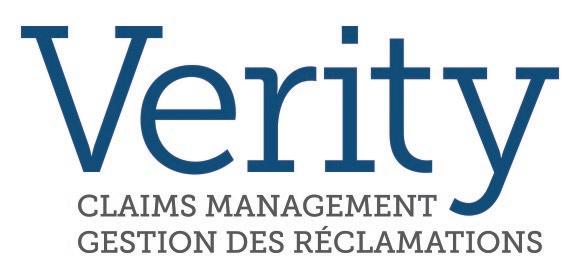
A properly handled claim can make a large di erence in the outcome of the claim
e approach of Verity Claims Management to every claim will be to provide “Fundamental True Value.” Our claims handling services are grounded in the following principles:
• Client-focused service
• Collaboration with other service providers
• Careful and thorough analysis and investigation
• Prompt and clear reporting to clients
1860 Appleby Line-Suite 420, Burlington, ON L7L 7H7 KatjaK@verityclaims.ca | 647-884-5065 9776478 Canada Inc.
98 Given the incompatibility of the nature of Aboriginal title with the stated object, purpose and language in both Acts, I conclude that the Legislature did not intend to include Aboriginal title in its references to an “interest in land”.
99 Whether in the spirit of reconciliation, as recommended by the Supreme Court of Canada, the Legislature should consider amendments to its legislation to include Aboriginal title is not for this Court to contemplate or to consider.
104 As such, it is simply not possible to read either the Registry Act or the Land Titles Act, the stated application of each is to create or transfer an interest in land, as having intended or contemplated an interest such as Aboriginal title.”
Closing
We can expect that Justice Gregory’s decision in the Wolastoqey litigation is the fi rst in a series of court decisions in what is likely to be a long road ahead. It will be an interesting journey as the courts consider once more the interplay between Aboriginal title and the common law relating to real property rights. For appraisers, the question continues to be what impact this evolution in the law is having on the valuation of real property interests.
End notes
1 As proof that Aboriginal title claims are lawyer and document intensive, the court observed that fi fteen lawyers attended the application hearing; the record fi led for the application was 2,700 pages.
2 Wolastoqey, para. 3
3 [1997] 3 S.C.R. 1010, para. 186
4 Wolastoqey, para. 48
5 Wolastoqey, para., 51
6 Wolastoqey, paras. 74, 75
7 Wolastoqey, para. 77
8 Wolastoqey, para. 78, 80
This article is provided for the purposes of generating discussion and to make practitioners aware of certain challenges presented in the law. It is not to be taken as legal advice. Any questions relating to the applicability of expropriation legislation in particular circumstances should be put to qualifi ed legal and appraisal practitioners.
LEGAL MATTERS
Canadian Property Valuation | Évaluation immobilière au Canada 44 Return to CONTENTS
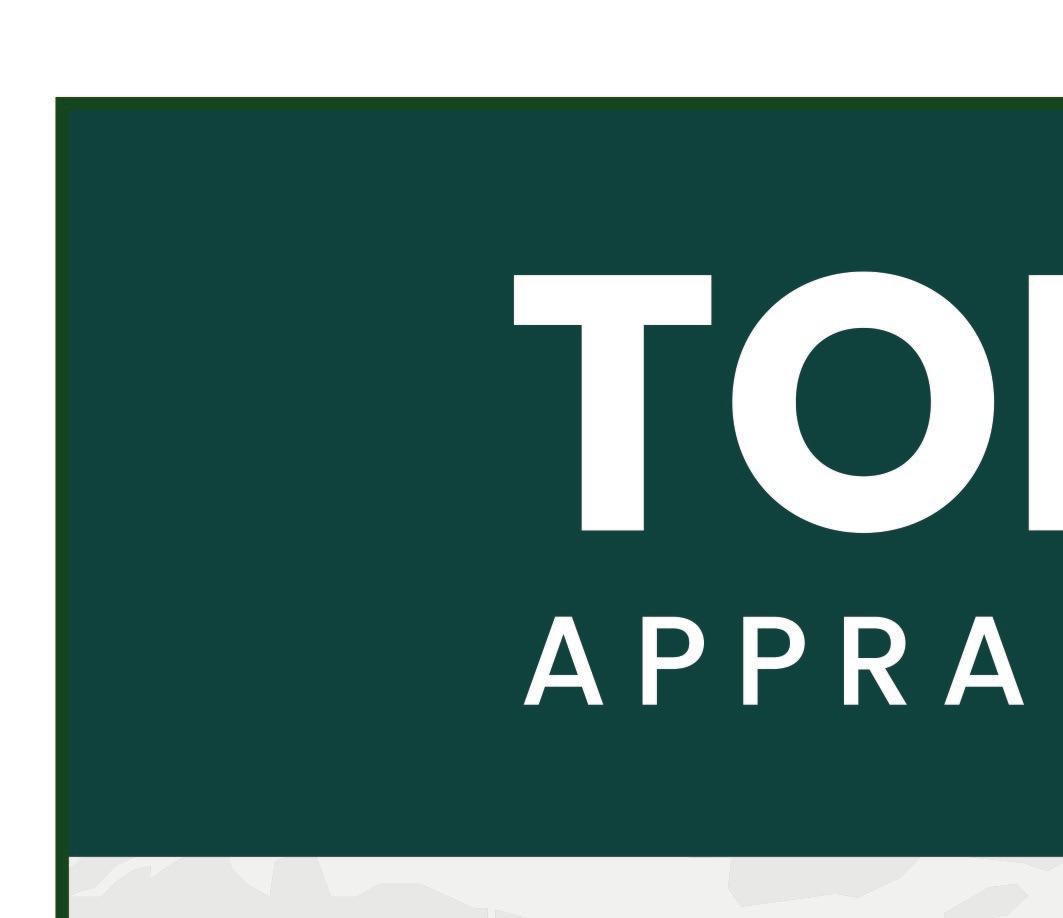
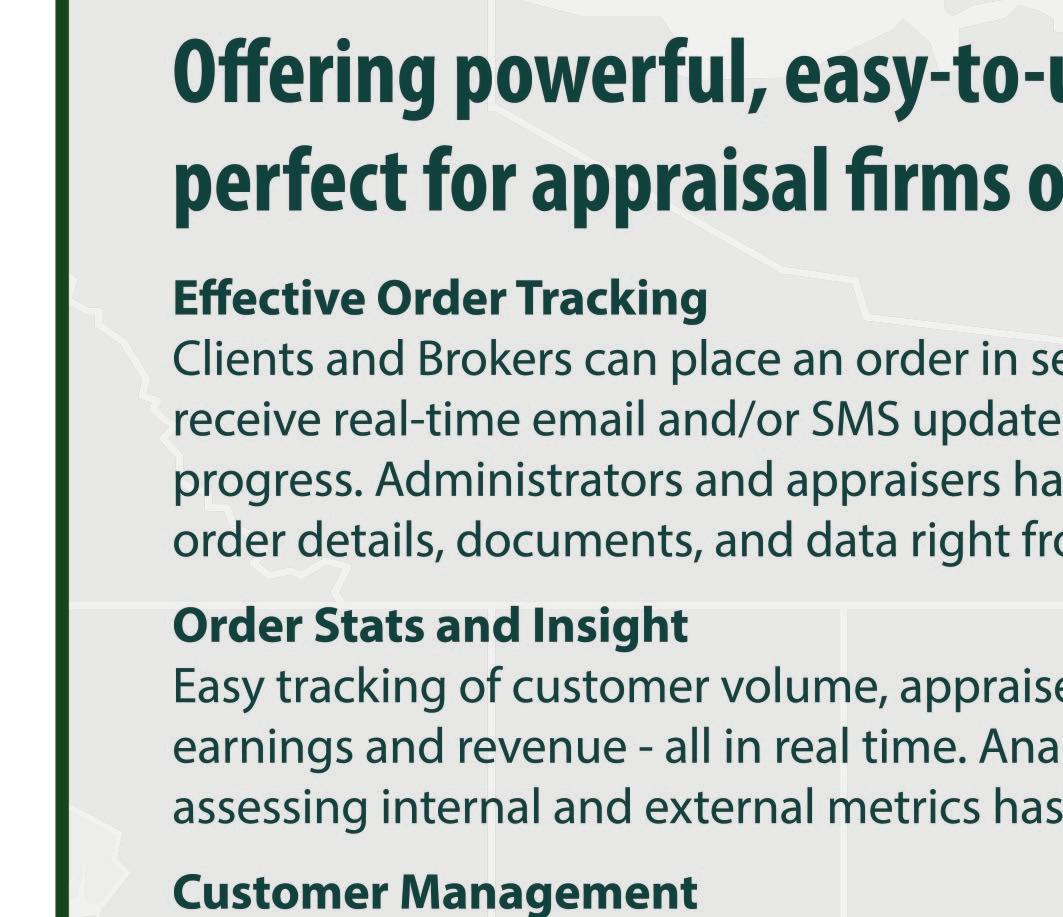
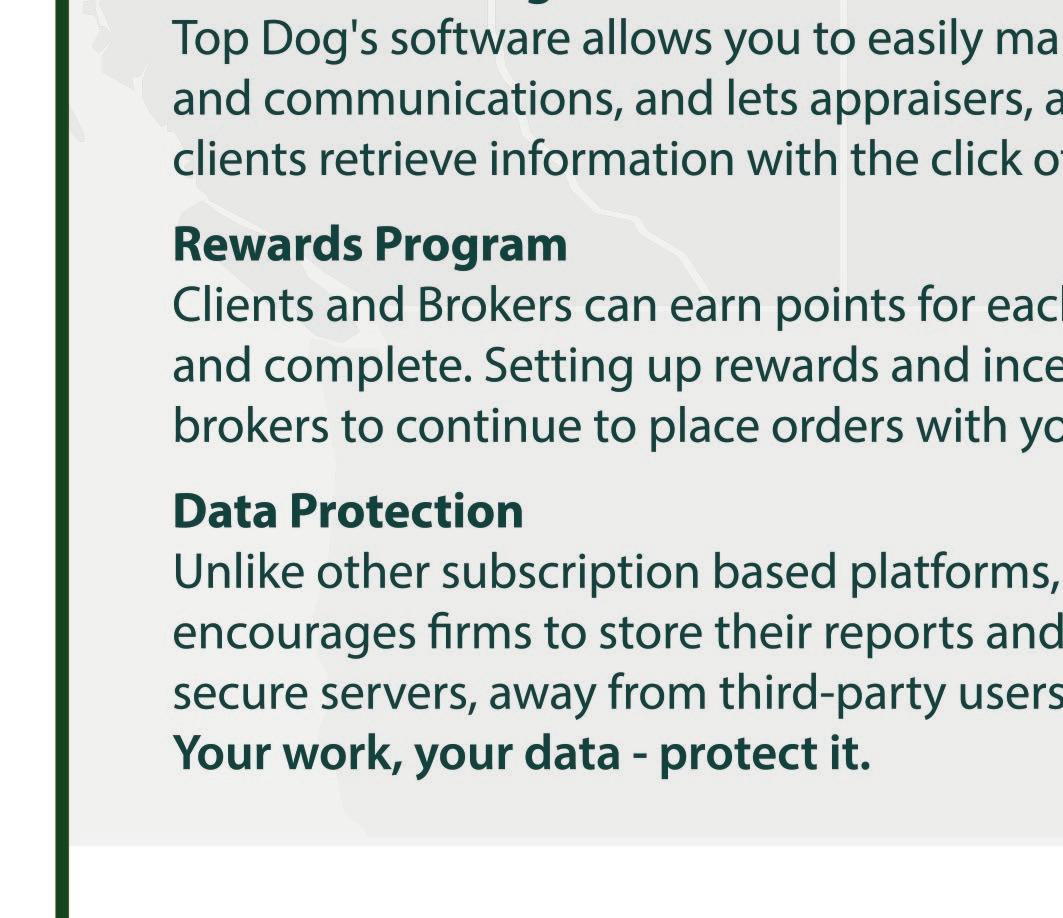


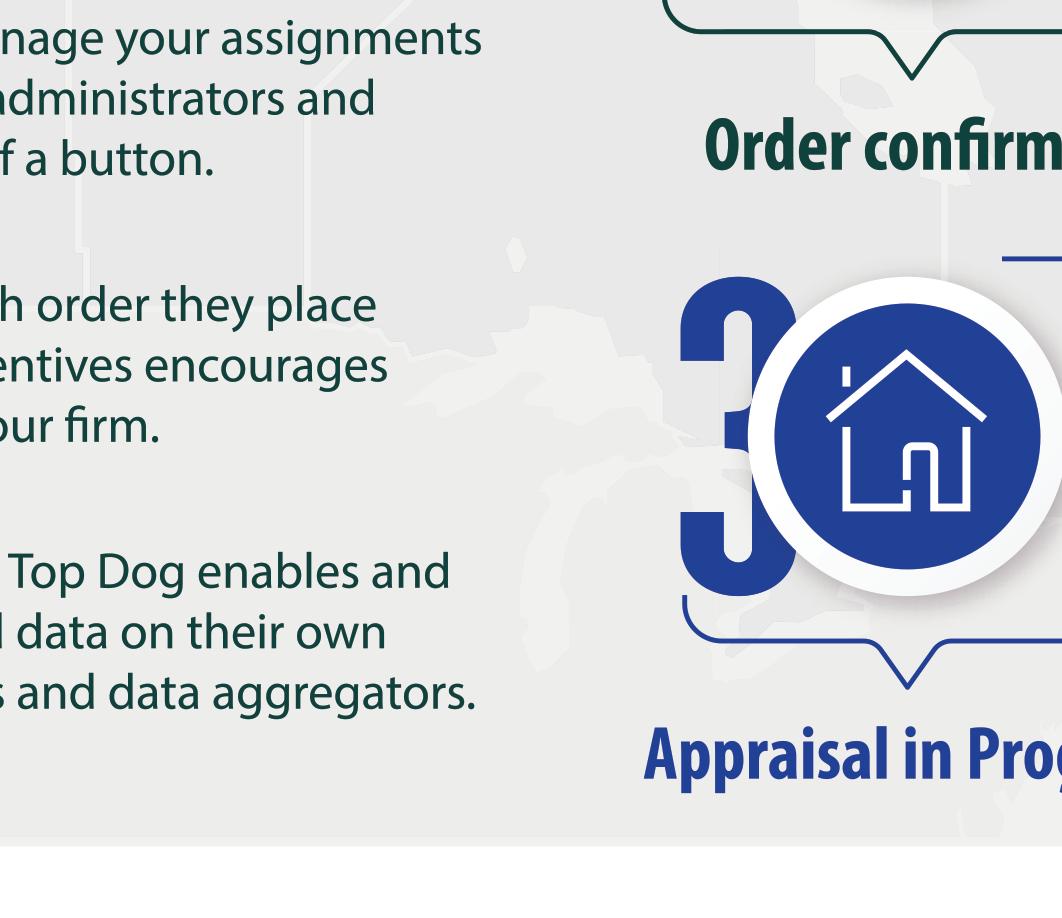




 PAR JOHN SHEVCHUK
PAR JOHN SHEVCHUK
Le titre ancestral est-il un « intérêt foncier »?
Première étape de la revendication territoriale des nations Wolastoqey
Conseiller en contentieux, C.Arb, AACI (Hon)
Le titre ancestral est-il un « intérêt foncier » susceptible d’être enregistré dans un registre foncier ou dans un système de titres fonciers? Telle était la question posée à la juge Gregory de la Cour du Banc du Roi du Nouveau-Brunswick dans l’affaire Wolastoqey Nations c. NouveauBrunswick et Canada, 2024 NBKB 21 [Wolastoqey]. Pour répondre à la question, la Cour a examiné les principes sous-jacents du droit concernant le titre ancestral et s’est demandé si ce droit était conciliable avec la législation provinciale relative à l’enregistrement des titres de propriété immobilière. Plus précisément, il a été demandé à la juge Gregory de décider si des Certificats d’affaire en instance (CAI) peuvent être déposés contre les parcelles de terre privées qui font partie des propriétés contestées dans le cadre d’une revendication territoriale initiée par les nations Wolastoqey.
Contexte
En 2020, six nations Wolastoqey ont intenté une action en justice pour appuyer leur revendication de plus de 50 % des terres du Nouveau-Brunswick. La revendication porte sur des terres détenues par la Couronne provinciale et fédérale, par des sociétés de la Couronne, ainsi que sur les intérêts en pleine propriété de sociétés privées. Le nombre de parcelles concernées par le litige est estimé à 16 500, dont 5 028 sont détenues par des particuliers. Modifi é en 2021, le tribunal signale que le document de réclamation dépasse les 500 pages.
En décembre 2023, la juge Gregory entend une requête déposée par les sociétés privées demandant une ordonnance de radiation de la partie de la réclamation des Nations Wolastoqey demandant des CAI.1 Un CAI est un document judiciaire qui, une fois enregistré dans un système de titres fonciers, signale au monde entier que les droits fonciers font l’objet d’une action en justice. Les sociétés
défenderesses ont affirmé que le CAI leur causerait un grand préjudice, en immobilisant leurs terres pendant les années au cours desquelles le litige serait en cours. Mais cette affirmation n’a pas suffi à empêcher la délivrance d’un CAI. Il a fallu persuader le tribunal que le titre ancestral n’est pas un intérêt couvert par la législation sur les titres fonciers et que, par conséquent, la demande de CAI devait être rejetée au motif qu’elle n’avait aucune chance raisonnable de réussir. Dans les motifs du jugement daté du 1er février 2024, la juge Gregory a conclu que le titre ancestral n’est pas un « intérêt foncier » au sens de la loi sur l’enregistrement ou de la loi sur l’enregistrement foncier. Il est important de noter que la demande présentée à la Cour ne visait pas à établir si les Nations Wolastoqey avaient un intérêt dans les terres concernées; la question se limitait à déterminer si le titre ancestral justifie la délivrance et l’enregistrement d’un certificat de propriété en vertu de la Loi sur l’enregistrement et de la Loi sur l’enregistrement foncier. Mais pour répondre à cette question, il fallait examiner l’évolution du droit relatif au titre ancestral.
Le titre ancestral
La juge Gregory a établi la toile de fond de sa décision en se référant à des décisions antérieures de la Cour suprême du Canada portant sur des revendications territoriales autochtones : 2 a. « ... la doctrine des droits ancestraux existe et elle est reconnue et confi rmée par le par. 35(1), et ce pour un fait bien simple : quand les Européens sont arrivés en Amérique du Nord, les peuples autochtones s’y trouvaient déjà C’est ce fait, pardessus tout, qui distingue les peuples autochtones de tous les autres groupes minoritaires du pays et qui commande leur statut juridique -- et maintenant constitutionnel -- particulier. » R. c. Van der Peet, [1996] 2 R.C.S. 507, au para. 30 [emphase ajoutée]
QUESTIONS JURIDIQUES
Canadian Property Valuation | Évaluation immobilière au Canada 46 Return to CONTENTS
b. « En fi n de compte, c’est au moyen de règlements négociés -- toutes les parties négociant de bonne foi et faisant les compromis qui s’imposent -- processus renforcé par les arrêts de notre Cour, que nous pourrons réaliser ce que, dans Van der Peet, précité, au paragraphe 31, j’ai déclaré être l’objet fondamental du par. 35(1), c’est-à-dire « concilier la préexistence des sociétés autochtones et la souveraineté de Sa Majesté ». Il faut se rendre à l’évidence, nous sommes tous ici pour y rester. » Delgamuukw c. Colombie-Britannique, [1997] 3 R.C.S. 1010, au para. 186 [emphase ajoutée]
c. « Notre Cour a confi rmé le caractère sui generis1 des droits et des obligations auxquels la relation entre la Couronne et les peuples autochtones donne naissance, et elle a déclaré que ce qui rend le titre ancestral unique est le fait qu’il découle d’une possession antérieure à l’affi rmation de la souveraineté britannique, contrairement aux autres domaines, comme le fi ef simple, qui ont pris naissance par la suite. » Nation Tsilhqot’in c. Colombie-Britannique, 2014 SCC 44, au para. 14 [note en fi n de texte ajoutée]
d. La jurisprudence récente de la Cour suprême du Canada a affi né le concept de titre ancestral, ses caractéristiques et les éléments de preuve. Ces éléments font généralement référence à la présence préhistorique d’un groupe autochtone sur certaines terres défi nies, à l’utilisation et à la continuité de la possession des terres par le groupe autochtone en question et à la capacité de faire respecter la possession exclusive au fi l du temps, jusqu’à aujourd’hui : Delgamuukw, supra ; R. c. Marshall/R. c. Bernard, 2005 SCC 43 ; et Tsilhqot’in, supra
Pour comprendre la décision de la Cour dans l’aff aire Wolastoqey, il est particulièrement important de tenir compte de la nature sui generis (unique en son genre) des droits et obligations des Premières Nations. Le titre ancestral est unique en ce sens qu’il existe depuis avant l’affi rmation de la souveraineté britannique. En revanche, les droits de propriété immobilière de la common law et les droits de propriété immobilière créés par la législation sont nés avec l’affi rmation de la souveraineté britannique. Passant à la question qui nous occupe, la juge Gregory a approfondi la jurisprudence existante relative au titre ancestral sur les terres, en commençant par la décision de la Cour suprême du Canada dans l’aff aire Delgamuukw c. Colombie-Britannique, 3 où il a été statué que :4
• Le titre ancestral est un droit foncier;
• Le titre ancestral est un droit foncier unique, diff érent des droits de propriété normaux tels que le fi ef simple;
• Les caractéristiques du titre ancestral ne peuvent pas être entièrement expliquées par les règles de propriété de la common law ;
• Le titre ancestral est
◦ inaliénable - il ne peut être transféré, vendu ou cédé qu’à la Couronne;
◦ dérivé de l’occupation antérieure du Canada par les peuples autochtones;
◦ détenu en commun par tous les membres d’une nation autochtone;
• Le titre ancestral confère une utilisation et une occupation exclusives de la terre à des fi ns diverses.
La décision de la Cour suprême du Canada dans l’aff aire Tsilhqot’in précise que : 5
• Le titre ancestral est un intérêt juridique indépendant;
• Le titre ancestral est un droit de jouissance sur une terre qui donne droit aux avantages qui en découlent;
• Les autres formes de propriété foncière ne refl ètent pas exactement le titre ancestral;
• Le titre ancestral est détenu par les générations actuelles, mais aussi par toutes les générations suivantes.
La juge Gregory a fait remarquer que le titre ancestral est un « intérêt foncier », mais qu’il ne s’agit pas d’un intérêt comme les autres. Par exemple, il comporte des limites inhérentes distinctes de celles du fi ef simple. Il ne s’agit pas d’un concept de droit privé et ne concerne pas les droits d’entités privées. Il s’agit d’un concept de droit public. 6 En outre, le titre ancestral n’est pas créé; il existait avant la souveraineté de la Couronne. Il ne peut être transféré et est inaliénable, sauf à la Couronne.7
En revanche, « La « création » et le « transfert » d’intérêts fonciers constituent l’objet et le but mêmes de la Loi sur l’enregistrement et de la Loi sur l’enregistrement foncier. » Le titre ancestral et le système d’enregistrement foncier du NouveauBrunswick sont incompatibles. 8 La conclusion de la Cour à cet égard a été renforcée par un examen du libellé et de l’objet de la loi sur l’enregistrement et les titres fonciers du Nouveau-Brunswick. La juge Gregory a conclu comme suit : « 94 Le titre ancestral, bien qu’il partage certaines caractéristiques, n’est pas un intérêt en fief simple : Le titre ancestral n’est pas assimilé à la propriété en fief simple; il ne peut pas non plus être décrit en se référant aux concepts traditionnels du droit de la propriété ». (Tsilhqot’in, supra au paragraphe 72)
95 Les systèmes provinciaux d’enregistrement foncier sont basés sur des intérêts en fief simple et ne semblent nulle part envisager des titres ancestraux. Inversement, le titre ancestral, de par sa nature, ne peut pas ne pas être limité par une telle législation, étant donné son statut constitutionnel et sui generis :
QUESTIONS JURIDIQUES
Volume 68 | Book 1 / Tome 1 | 2024 47 Return to CONTENTS
QUESTIONS JURIDIQUES
Le titre ancestral a été décrit comme sui generis afin de le distinguer des droits de propriété « normaux », tels que le fief simple. Cependant, comme je vais le développer maintenant, il est également sui generis dans le sens où ses caractéristiques ne peuvent pas être complètement expliquées par référence aux règles de la common law en matière de biens immobiliers ou aux règles de propriété des systèmes juridiques aborigènes. Comme pour les autres droits autochtones, il doit être compris en se référant à la fois à la common law et aux perspectives autochtones. (Delgamuukw, supra au paragraphe 112) (Traduction)
98 Étant donné l’incompatibilité de la nature du titre ancestral avec l’objet, le but et le libellé des deux lois, je conclus que le législateur n’avait pas l’intention d’inclure le titre ancestral dans ses références à un « intérêt foncier ».
99 Il n’appartient pas à cette Cour d’envisager ou d’examiner si, dans un esprit de réconciliation, comme le recommande la Cour suprême du Canada, la législature devrait envisager de modifier sa loi pour y inclure le titre ancestral.
104 Ainsi, il n’est tout simplement pas possible de lire la Loi sur l’enregistrement ou la Loi sur l’enregistrement foncier, dont l’application déclarée est de créer ou de transférer un intérêt foncier, comme ayant voulu ou envisagé un intérêt tel que le titre ancestral. »
Clôture
Nous pouvons nous attendre à ce que la décision de la juge Gregory dans le litige Wolastoqey soit la première d’une série de décisions judiciaires dans ce qui risque d’être un long chemin à parcourir. Il s’agira d’un parcours intéressant, car les tribunaux examineront une fois de plus l’interaction entre le titre aborigène et la common law relative aux droits immobiliers.
Pour les évaluateurs, la question reste de savoir quel est l’impact de cette évolution du droit sur l’évaluation des intérêts immobiliers.
Notes de fin
1 Pour prouver que les revendications de titres ancestraux nécessitent beaucoup d’avocats et de documents, la Cour a observé que quinze avocats étaient présents à l’audience de la demande; le dossier déposé pour la demande comptait 2 700 pages.
2 Wolastoqey, paragraphe 3
3 [1997] 3 R.C.S. 1010, paragraphe 186
4 Wolastoqey, paragraphe 48
5 Wolastoqey, paragraphe, 51
6 Wolastoqey, paragraphes 74, 75
7 Wolastoqey, paragraphe 77
8 Wolastoqey, paragraphe 78, 80
Cet article a pour but de susciter la discussion et de sensibiliser les praticiens à certains défis posés par la loi. Il ne doit pas être considéré comme un conseil juridique. Toute question relative à l’applicabilité de la législation sur l’expropriation dans des circonstances particulières doit être posée à des praticiens qualifiés du droit et de l’évaluation.


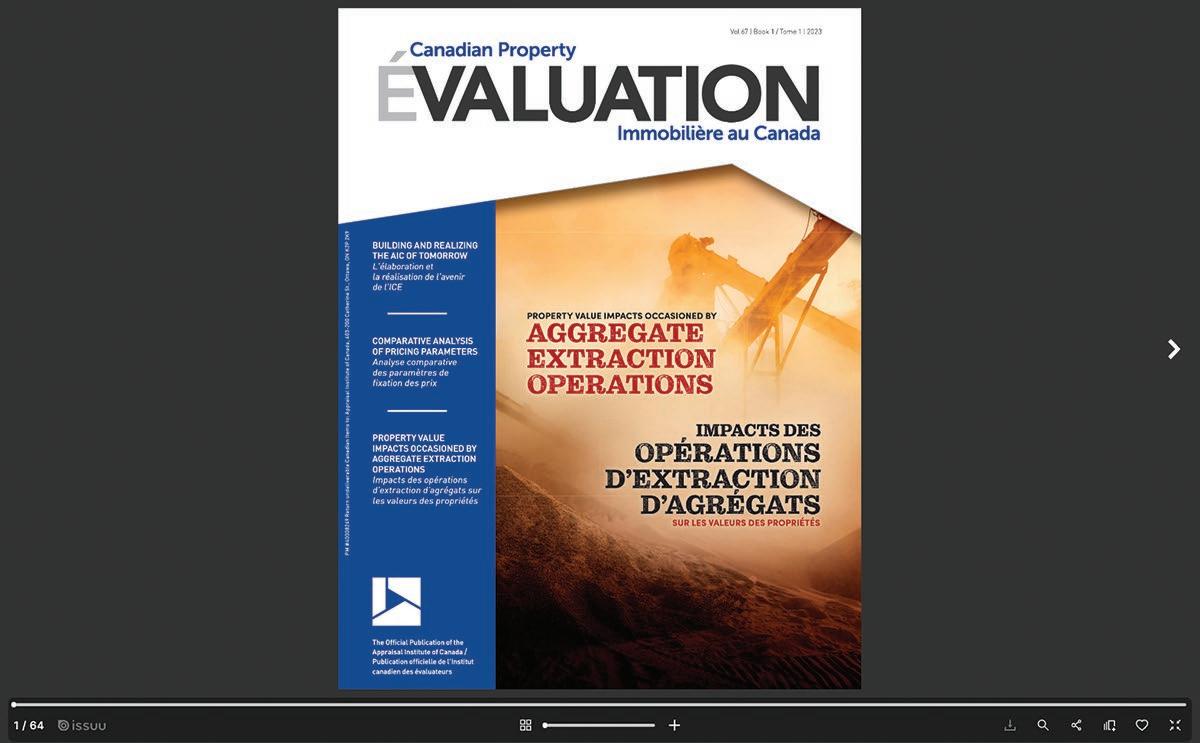





















Versions pour les mobiles,appareils iPad et iPhone incluses. Mobile, iPad, iPhone versions included! Édition interactive MAINTENANT DISPONIBLE Interactive Edition AVAILABLE ONLINE PM #40008249 Return undeliverable Canadian Items Appraisal Institute Canada, 403-200 Catherine St., Ottawa, ON K2P 2K9 Appraisal Institute of Canada CAPITALIZED INCOME IN REAL ESTATE AND BUSINESS VALUATION capitalisé dans l’évaluation des biens immobiliers et des entreprises APPRAISAL: RENT RESET ISSUES (PART 1) Arbitrage et évaluation questions relatives à la réinitialisation des loyers (partie 1) PROPORTIONAL VALUE Valeur proportionnelle des groupes fonctionnels NATIONAL CONFERENCE JUNE 5-8, 2024, CHARLOTTETOWN, PEI Rejoignez-nous au Congrès national de l’ICE 2024 5-8 juin 2024 Charlottetown, Î.-P.-É. Can private investment solve the affordable housing shortage? OF FUNCTIONAL GROUPS L’investissement privé peut-il résoudrelapénuriede logements abordables? Canadian Property Valuation | Évaluation immobilière au Canada 48 Return to CONTENTS
Our views on the government’s housing and affordability measures
n this edition of Advocacy in Action, our spotlight is on the Federal Government’s 2024 Budget: Fairness for Every Generation, which was released in full on April 16, 2024. The AIC was pleased to once again be invited to the 2024 Budget Pre-Release Lock-Up as a key stakeholder, where we had the chance to examine the many measures that will be of interest to our AIC Membership, especially as they relate to housing and affordability.
The 2024 Budget outlined the government’s housing plan in greater detail, which included measures to speed up the pace of homebuilding, bolster supply, unlock federal lands and office buildings for homes, and restore affordability. The full plan can be read here: Solving the Housing Crisis. (www.infrastructure.gc.ca/housinglogement/housing-plan-report-rapport-plan-logement-eng.html)
The AIC views these combined measures as a signifi cant step towards addressing the housing crisis and ensuring that every Canadian has access to safe and aff ordable housing.
Key highlights include:
• Introduction of the Building Homes on Public Lands Plan, which aims to unlock 250,000 new homes by 2031 by converting public lands to housing, including leasing the land. This will entail a full review of the entire portfolio of federally-owned land and properties to identify sites where new homes can be built.
• Converting Underused Federal Offi ces into Homes: A $1.1 billion investment over 10 years will repurpose underused Public Services and Procurement Canada’s (PSPC) offi ce spaces into housing, ultimately reducing PSPC’s offi ce portfolio by 50%.

• Government consultations on introducing a tax on vacant land under residential zoning.
• Introduction of a new Canada Secondary Suite Loan Program, delivered by CMHC, which will off er low-cost fi nancing to add additional suites to existing properties.
• Providing an additional $15 billion to the Apartment Construction Loan program.
• Introduction of 30-year amortization for first-time home buyers purchasing new homes, with monitoring of housing inflation and supply conditions to explore expanding access more broadly.
The AIC was pleased to once again be invited to the 2024 Budget Pre-Release Lock-Up as a key stakeholder, where we had the chance to examine the many measures that will be of interest to our AIC Membership, especially as they relate to housing and affordability.
ADVOCACY IN ACTION
Volume 68 | Book 1 / Tome 1 | 2024 49 Return to CONTENTS
The AIC is optimistic about the future of the housing market and will advocate tirelessly for the inclusion of Professional Appraisers (P. App.) in the implementation of these various measures.
• Modernizing housing data: An investment of $20 million is bookmarked for StatsCan and CMHC to modernize and enhance the collection and dissemination of housing data, including municipal-level data on housing starts and completions.
The AIC is pleased that many of these measures refl ect our ongoing advocacy eff orts over the past years, including that the government focus on: cutting approval timelines, working with provinces and municipalities to improve their zoning and permitting processes, working with stakeholders to develop a Canadian industrial strategy for home building, addressing material, cost, and supply chain issues, making investments to attract young people to the skilled trades, and pushing provinces to expedite the removal of barriers to foreign credential recognition with a focus on residential construction skills.

The AIC is optimistic about the future of the housing market and will advocate tirelessly for the inclusion of Professional Appraisers (P. App.) in the implementation of these various measures. By working together, we can build a stronger, more resilient housing sector that meets the needs of all Canadians.
AIC leadership will continue to engage with Federal Ministers, Members of Parliament, and officials throughout 2024 as we continue to build relationships with key stakeholders in this public policy space. We will also continue to focus our advocacy efforts with a refined strategic approach that aligns with our overarching goal of advancing our Members, our profession, and our organization.
For more information about our ongoing advocacy eff orts, please visit aicanada.ca or follow us on Facebook, Twitter, LinkedIn, and Instagram.




ADVOCACY IN ACTION
Growth & opportunity That’s your Altus Experience Join a team of appraisers, economists, market researchers, advisors and planners. View opportunities at altusgroup.com/careers Network Management for Valuations The right appraiser on every order, every time. Solidifi® provides appraisal services to the residential mortgage lending industry. Our clients include Canada’s top lending institutions. TRUSTED BY THE NATION’S LARGEST MORTGAGE LENDERS support@solidifi.com | 866.583.3983 | solidifi.ca Canadian Property Valuation | Évaluation immobilière au Canada 50 Return to CONTENTS
Notre point de vue sur les mesures du gouvernement en matière de logement et d’accessibilité financière
Dans ce numéro de Défense des intérêts, nous mettons l’accent sur le Budget 2024 du gouvernement fédéral : Une chance équitable pour chaque génération, qui a été publié dans son intégralité le 16 avril 2024. L’ICE a eu le plaisir d’être invité une fois de plus à l’atelier de préparation à la publication du budget 2024 en tant qu’intervenant clé, où nous avons eu l’occasion d’examiner les nombreuses mesures qui intéresseront les membres de l’ICE, en particulier en ce qui concerne le logement et l’accessibilité financière.
Le Budget 2024 décrit plus en détail le plan du gouvernement en matière de logement, qui comprend des mesures visant à accélérer le rythme de la construction de logements, à soutenir l’offre, à débloquer des terrains fédéraux et des immeubles de bureaux pour la construction de logements et à rétablir l’accessibilité financière. Le plan complet peut être consulté ici : Résoudre la crise du logement. (www.infrastructure.gc.ca/housing-logement/housing-plan-reportrapport-plan-logement-fra.html)
L’ICE considère ces mesures combinées comme un pas important vers la résolution de la crise du logement et la garantie que chaque Canadien a accès à un logement sûr et abordable.
En voici les points saillants :
• L’introduction du Plan pour l’usage de terrains publics à des fins résidentielles, qui vise à libérer 250 000 nouveaux logements d’ici 2031 en convertissant des terres publiques en

logements, y compris en les louant. Il s’agira de procéder à un examen complet de l’ensemble du portefeuille de terrains et de propriétés appartenant au gouvernement fédéral afin d’identifier les sites où de nouveaux logements peuvent être construits.
• Conversion de bureaux fédéraux sous-utilisés en logements : Un investissement de 1,1 milliard de dollars sur 10 ans permettra de réaff ecter les bureaux sous-utilisés de Services publics et Approvisionnement Canada (SPAC) en logements, ce qui réduira de 50 % le portefeuille de bureaux de SPAC.
• Consultations gouvernementales sur l’introduction d’une taxe sur les terrains vacants en zone résidentielle.
L’ICE a eu le plaisir d’être invité une fois de plus à l’atelier de préparation à la publication du budget 2024 en tant qu’intervenant clé, où nous avons eu l’occasion d’examiner les nombreuses mesures qui intéresseront les membres de l’ICE, en particulier en ce qui concerne le logement et l’accessibilité financière.
DÉFENSE DES INTÉRÊTS
Volume 68 | Book 1 / Tome 1 | 2024 51 Return to CONTENTS
L’ICE est optimiste quant à l’avenir du marché du logement et plaidera sans relâche en faveur de l’inclusion des Évaluateurs Professionnels (É. Pro.) dans la mise en œuvre de ces diverses mesures.
• Introduction du nouveau Programme canadien de prêts pour la construction d’un logement accessoire, mis en œuvre par la SCHL, qui off rira un fi nancement à faible coût pour l’ajout de logements secondaires à des propriétés existantes.
• Octroi de 15 milliards de dollars supplémentaires au programme de prêts à la construction d’appartements.
• Introduction d’un amortissement sur 30 ans pour les acheteurs d’une première maison neuve, avec un suivi de l’infl ation immobilière et des conditions de l’off re afi n d’étudier la possibilité d’élargir l’accès à ce type de prêt.
• Modernisation des données sur le logement : Un investissement de 20 millions de dollars est réservé à Statistique Canada et à la SCHL pour moderniser et améliorer la collecte et la diffusion des données sur le logement, y compris les données municipales sur les mises en chantier et les achèvements.
L’ICE se réjouit que bon nombre de ces mesures reflètent les efforts de sensibilisation qu’i a déployés au cours des dernières années, notamment pour que le gouvernement vise à réduire les délais d’approbation, à collaborer avec les provinces et les municipalités afin d’améliorer leurs processus de zonage et d’octroi de permis, à collaborer avec les parties prenantes afi n d’élaborer une stratégie industrielle canadienne pour la construction résidentielle,

à résoudre les problèmes liés aux matériaux, aux coûts et à la chaîne d’approvisionnement, à investir pour attirer les jeunes vers les métiers spécialisés et à inciter les provinces à accélérer l’élimination des obstacles à la reconnaissance des titres de compétences étrangers, en mettant l’accent sur les compétences en matière de construction résidentielle.
L’ICE est optimiste quant à l’avenir du marché du logement et plaidera sans relâche en faveur de l’inclusion des Évaluateurs Professionnels (É. Pro.) dans la mise en œuvre de ces diverses mesures. En travaillant ensemble, nous pouvons bâtir un secteur du logement plus fort et plus résilient qui répond aux besoins de tous les Canadiens.
La direction de l’ICE continuera de s’engager auprès des ministres fédéraux, des députés et des fonctionnaires tout au long de l’année 2024, car nous continuons d’établir des relations avec les principales parties prenantes dans cet espace de politique publique. Nous continuerons également à concentrer nos eff orts de défense des intérêts en adoptant une approche stratégique raffi née qui s’aligne sur notre objectif primordial de faire progresser nos membres, notre profession et notre organisation.
Pour plus d’informations sur nos eff orts de défenses des intérêts en cours, veuillez visiter aicanada.ca ou nous suivre sur Facebook, Twitter, LinkedIn et Instagram.


Our concern for the environment is more than just talk

DES INTÉRÊTS
DÉFENSE
This publication is printed on Forest Stewardship Council® (FSC®) certified paper with vegetable oil-based inks. Please do your part for the environment by reusing and recycling. Canadian Property Valuation | Évaluation immobilière au Canada 52 Return to CONTENTS


Connection: An antidote to adversity
BY ANDY PHAM, P. APP., AACI
came to Canada in 1980, still too young to go to school.
My parents and I had just completed our harrowing escape from Vietnam at a time when the people of South Vietnam were trying to leave the country after the Fall of Saigon on April 30, 1975. My family secretly left Saigon for the Mekong Delta to take a small fishing boat to flee the country by sea. After three days on the open water, and with much good luck, we landed on an island in Malaysia where we settled briefly in a refugee camp on Pulao Bidong.
Growing up in Canada from a young age, I did not face many issues with language, although I was in an English Second Language program for a couple of early elementary school years.
This was mainly because we did not leave behind the language of our former homeland and continued to speak exclusively Vietnamese at home.
In East Vancouver, as a Vietnamese kid growing up in a school with a large proportion of Asian students, it was not out of place for the academic achievers to be Asian. Entering Simon Fraser University, it was more of the same. Often, the best and brightest were Asian. In school, I did not identify with the idea of being from a marginalized community because, simply put, Asians were the dominant group.
Entering the working world, I began my career in downtown Vancouver. Unlike the experiences of my youth, I saw that most of

EQUITY, DIVERSITY AND INCLUSION (EDI)
Volume 68 | Book 1 / Tome 1 | 2024 53 Return to CONTENTS
Professionals of colour, in appraisal or elsewhere, would do well to remember that repeatedly showing kindness, understanding, and a spirit of friendship on a one-on-one basis can be a good way to show people that yes, you are worth knowing, staying in touch with, and hiring.
the professionals working downtown were not Asian. Concerningly for me, I also saw that most recruiters and HR professionals – those with the power to hire me – were anything but Asian.
As I worked to fi nd my professional foothold in the world, I found that some people were genuinely concerned with my best interests and graciously shared with me their hard-earned knowledge, with the aim of helping me develop as a professional. For that, I am very grateful. However, others saw me as mainly a means of production. I was smart, quick, and cheap. When it came time to ask for more in exchange for my time, energy, and accumulated knowledge, I was not met with an open discussion, a planning process, or indeed with any means to advance my career. Instead, I got a simple and disheartening response: no.
That moment taught me that how I saw myself was not how I was seen by some people in my company. And because I was diff erent from my colleagues, my employer thought it permissible to dismiss my asks as unwarranted and unwelcome. I wonder: if the asks had been made by someone who more closely resembled upper manager – someone white – whether they would have garnered a more positive response.
These are the questions that people from marginalized communities are left to face. And as for the answers, the odds are not in our favour. According to a report published by PayScale in 2018, people of colour are signifi cantly less likely than white men to receive a raise when they ask for one. The study found that women of colour were 19% less likely and men of colour were 25% less likely to receive a raise as compared to a white man.
Could it be that I was facing barriers posed by racism and prejudice? While I waited for wholesale system change, I saw it as possible within my own life to break down barriers on an individual level; that is, one person at a time. If my environment was hurting me, I would change my environment.
In the past, people have often asked me: how did I get to be where I am today? And I have often told them that I made it my focus to meet people and make authentic connections. I indiscriminately met and invited people out for coffee and lunch. If a person was receptive to speaking with me, shaking my hand, exchanging business cards, and agreeing to connect sometime in the future, that was enough for me to follow up.
The following is a story which I have told many times about how a single moment changed my entire career path. I was a fee appraiser
at the time and attending the Vancouver Real Estate Forum. I entered the room late to watch a panel discussion and greeted the person who was immediately closest to me at the table. We exchanged names quickly, lamented that we did not have time to chat, traded business cards, then went our separate ways for the day.
Over the next few weeks, work continued as it does, and I found myself applying for a new opportunity in real estate. At the same time, I had been in contact with the person I had met at the forum, and we had scheduled a lunch. During lunch, we talked about being from Asian backgrounds, working hard to make our way through the real estate industry, and being met with similar challenges of not being fully accepted. I also found out that my new friend had just left a position at the very company where I had just applied. Small world! We ended our lunch, agreed to stay in touch, and went our separate ways.
About a week later, I got a call from my new friend, asking how the job application went. I replied that the company HR person had told me that I did not have suitable qualifi cations and so I would not be interviewed. My friend told me that the role was the fi rst of two available positions at the company. The second had come up due to an unexpected departure and my friend asked if I was interested. Of course I was. My friend off ered to deliver my resumé to the offi ce directly and before the day was up, my resumé was in his hands. Before the end of the week, I heard back from the company and was told to expect a call from HR. Believe it or not, the same HR contact person who told me earlier that I did not have suitable qualifi cations called me to set up a phone screening.
That company was Sun Life Financial, and the rest is history.
To this day, I remind myself that everyone deserves your time, if only for a moment. Extend your hand, say “hi,” offer to connect if it is beneficial for both parties. There is something that you can learn and gain from every interaction you have with someone else. They might even change your life. How was I to know that the person I chanced to meet in less than five minutes at the Vancouver Real Estate Forum happened to work at the very company where I had just applied? If I had not made that brief contact and followed up with a lunch meeting to connect through conversation, I could not have hoped to learn about the second role, which I eventually filled.
Professionals of colour, in appraisal or elsewhere, would do well to remember that repeatedly showing kindness, understanding, and a spirit of friendship on a one-on-one
EQUITY, DIVERSITY AND INCLUSION (EDI)
Canadian Property Valuation | Évaluation immobilière au Canada 54 Return to CONTENTS
When you make time to connect with people in – and even beyond – your industry, it reaffirms who you are and what you value. People remember you, should an opportunity come up. You create a personal brand that could work wonders for you, even when you are not in the room.
basis can be a good way to show people that yes, you are worth knowing, staying in touch with, and hiring.
Over the years, I have tried to build my knowledge, not through market reports or industry summaries, but by taking time out of my day to talk to whoever would talk to me. It is a cliché, but it is true that time is the most precious commodity. So, when someone agrees to spend their precious time with you, be open, honest, and sincere. Impressions go a long way, and you never know where a strong, positive impression may lead.
When you make time to connect with people in – and even beyond – your industry, it reaffi rms who you are and what you value.




















People remember you, should an opportunity come up. You create a personal brand that could work wonders for you, even when you are not in the room. You create a positive network willing to bring up your name in conservation in their circles of infl uence, opening you up to opportunities which might have otherwise been several degrees of connection away from you.
So, in conclusion, I say be open to others. Be open to saying “yes” and seeing where it will lead you. Because, when the world faces people of colour with harsh words and unfair treatment, people of colour respond with resilience and excellence.
What will that look like for you?
EQUITY, DIVERSITY AND INCLUSION (EDI)
OUR VISION To be the most trusted association of residential appraisal firms in Canada. OUR MANDATE BAREA protects and promotes the business interests of our member firms through a strong and cohesive voice as well as the sharing of best practices. Business Association of Real Estate Appraisers Stronger together DON’T GO IT ALONE OUR VISION To be the most trusted association of residential appraisal firms in Canada. OUR MANDATE BAREA protects and promotes the business interests of our member firms through a strong and cohesive voice as well as the sharing of best practices. Business Association of Real Estate Appraisers barea.ca Stronger together DON’T GO IT ALONE Volume 68 | Book 1 / Tome 1 | 2024 55 Return to CONTENTS


La connexion : Un antidote à l’adversité
PAR ANDY PHAM, É. PRO., AACI
Je suis arrivé au Canada en 1980, encore trop jeune pour aller à l’école. Mes parents et moi venions d’achever notre fuite harassante du Viêt Nam, à une époque où les habitants du Sud-Viêt Nam tentaient de quitter le pays après la chute de Saigon, le 30 avril 1975. Ma famille a secrètement quitté Saigon pour le delta du Mékong afi n de prendre un petit bateau de pêche pour fuir le pays par la mer.
Après trois jours en pleine mer, et avec beaucoup de chance, nous avons accosté sur une île de Malaisie où nous nous sommes brièvement installés dans un camp de réfugiés à Pulao Bidong.
Ayant grandi au Canada dès mon plus jeune âge, je n’ai pas eu beaucoup de problèmes avec la langue, bien que j’ai suivi un programme d’anglais langue seconde pendant quelques années au début de l’école primaire. Cela s’explique principalement par le

ÉQUITÉ, DIVERSITÉ ET INCLUSION (EDI)
Canadian Property Valuation | Évaluation immobilière au Canada 56 Return to CONTENTS
Les professionnels de couleur, dans le domaine de l’évaluation ou ailleurs, feraient bien de se rappeler que faire preuve à plusieurs reprises de gentillesse, de compréhension et d’un esprit d’amitié sur une base individuelle peut être un bon moyen de montrer aux gens que oui, vous valez la peine d’être connu, de rester en contact avec eux et d’être embauché.
fait que nous n’avons pas laissé derrière nous la langue de notre ancienne patrie et que nous avons continué à parler exclusivement vietnamien à la maison.
À Vancouver-Est, un enfant vietnamien grandissant dans une école comptant une grande proportion d’élèves asiatiques, il n’était pas incongru que les élèves les plus brillants soient asiatiques. En entrant à l’université Simon Fraser, c’était un peu la même chose. Souvent, les meilleurs et les plus brillants étaient asiatiques. À l’école, je ne m’identifiais pas à l’idée d’appartenir à une communauté marginalisée parce que, tout simplement, les Asiatiques constituaient le groupe dominant.
En entrant dans le monde du travail, j’ai commencé ma carrière dans le centre-ville de Vancouver. Contrairement à ce que j’avais vécu dans ma jeunesse, j’ai constaté que la plupart des professionnels travaillant dans le centre-ville n’étaient pas asiatiques. Fait inquiétant pour moi, j’ai également constaté que la plupart des recruteurs et des professionnels des ressources humaines - ceux qui avaient le pouvoir de m’embaucher - étaient tout, sauf asiatiques.
Alors que je m’eff orçais de trouver ma place dans le monde professionnel, j’ai découvert que certaines personnes se souciaient sincèrement de mes intérêts et partageaient gracieusement avec moi leurs connaissances durement acquises, dans le but de m’aider à me développer en tant que professionnel. Je leur en suis très reconnaissant. D’autres, en revanche, me considéraient essentiellement comme un moyen de production. J’étais intelligent, rapide et bon marché. Lorsque le moment est venu de demander plus en échange de mon temps, de mon énergie et des connaissances accumulées, je n’ai pas eu droit à une discussion ouverte, à un processus de planifi cation ou, en fait, à un quelconque moyen de faire progresser ma carrière. Au lieu de cela, j’ai reçu une réponse simple et décourageante : non.
Ce moment m’a appris que la façon dont je me voyais n’était pas celle dont certaines personnes de mon entreprise me
voyaient. Et parce que j’étais diff érent de mes collègues, mon employeur estimait qu’il lui était permis de rejeter mes demandes comme étant injustifi ées et importunes. Je me pose la question suivante : si ces questions avaient été posées par quelqu’un qui ressemblait davantage au supérieur hiérarchique - quelqu’un de blanc -, auraient-elles reçu une réponse plus positive?
Telles sont les questions auxquelles sont confrontées les personnes issues de communautés marginalisées. Et pour ce qui est des réponses, les chances ne sont pas en notre faveur. Selon un rapport publié par PayScale en 2018, les personnes de couleur ont nettement moins de chances que les hommes blancs de recevoir une augmentation lorsqu’elles en font la demande. L’étude a révélé que les femmes de couleur avaient 19 % de chances en moins et les hommes de couleur 25 % de chances en moins de recevoir une augmentation par rapport à un homme blanc.
Se pourrait-il que je sois confronté à des obstacles liés au racisme et aux préjugés? En attendant un changement global du système, j’ai considéré qu’il était possible, dans ma propre vie, de faire tomber les barrières au niveau individuel, c’est-à-dire une personne à la fois. Si mon environnement me faisait du mal, je le changerais.
Dans le passé, les gens m’ont souvent demandé : comment suis-je arrivé là où je suis aujourd’hui? Je leur ai souvent répondu que je m’étais fi xé pour objectif de rencontrer des gens et de nouer des liens authentiques. Je rencontrais et invitais les gens à prendre un café ou à déjeuner sans discrimination. Si une personne était disposée à me parler, à me serrer la main, à échanger des cartes de visite et à convenir d’un rendez-vous à l’avenir, cela suffi sait pour que je lui donne suite.
Voici une histoire que j’ai racontée à maintes reprises et qui montre comment un seul moment a changé l’ensemble de mon parcours professionnel. À l’époque, j’étais évaluateur et j’assistais au Vancouver Real Estate Forum. Je suis arrivé en retard dans la salle pour assister à une table ronde et j’ai salué la personne
ÉQUITÉ, DIVERSITÉ ET INCLUSION (EDI)
Volume 68 | Book 1 / Tome 1 | 2024 57 Return to CONTENTS
Lorsque vous prenez le temps d’entrer en contact avec des personnes de votre secteur d’activité, et même au-delà, vous réaffirmez qui vous êtes et ce que vous appréciez. Les gens se souviennent de vous si une occasion se présente.
Vous créez une marque personnelle qui peut faire des merveilles pour vous, même lorsque vous n’êtes pas dans la salle.
qui était immédiatement la plus proche de moi à la table. Nous avons échangé nos noms rapidement, regretté de ne pas avoir eu le temps de discuter, échangé nos cartes de visite, puis nous sommes repartis chacun de notre côté pour la journée.
Au cours des semaines suivantes, le travail s’est poursuivi et je me suis retrouvé à postuler pour une nouvelle opportunité dans l’immobilier. Parallèlement, j’avais pris contact avec la personne que j’avais rencontrée au forum et nous avions prévu de déjeuner ensemble. Pendant le déjeuner, nous avons parlé du fait que nous sommes d’origine asiatique, que nous avons travaillé dur pour nous frayer un chemin dans le secteur de l’immobilier et que nous avons été confrontés aux mêmes diffi cultés, à savoir que nous n’avons pas été pleinement acceptés. J’ai également découvert que mon nouvel ami venait de quitter un poste dans l’entreprise même où je venais de postuler. Le monde est petit ! Nous avons terminé notre déjeuner, convenu de rester en contact et nous sommes repartis chacun de notre côté.
Environ une semaine plus tard, mon nouvel ami m’a appelé pour me demander comment s’était déroulée ma candidature. Je lui ai répondu que la personne chargée des ressources humaines de l’entreprise m’avait dit que je n’avais pas les qualifications requises et que je ne passerais donc pas d’entrevue. Mon ami m’a expliqué que le poste était le premier de deux postes disponibles dans l’entreprise. Le second s’était libéré à la suite d’un départ inattendu et mon ami m’a demandé si j’étais intéressé. Bien entendu, je l’étais. Mon ami a proposé de remettre mon CV directement au bureau et, avant la fin de la journée, mon CV était entre ses mains. Avant la fin de la semaine, l’entreprise m’a répondu et m’a dit de m’attendre à un appel des RH. Croyez-le ou non, la personne qui m’avait dit que je n’avais pas les qualifications requises m’a appelé pour organiser une entrevue au téléphone.
Cette société était la Financière Sun Life, et le reste appartient à l’histoire.
Aujourd’hui encore, je me rappelle que tout le monde mérite qu’on lui consacre du temps, ne serait-ce qu’un instant. Tendez la main, dites « bonjour », proposez d’entrer en contact si c’est bénéfique pour les deux parties. Il y a quelque chose à apprendre et à gagner de chaque interaction que vous avez avec quelqu’un d’autre.
Elle peut même changer votre vie. Comment aurais-je pu savoir que la personne que j’ai rencontrée par hasard en moins de cinq minutes au Vancouver Real Estate Forum travaillait justement dans l’entreprise où je venais de poser ma candidature? Si je n’avais pas établi ce bref contact et si je n’avais pas fait suivre cette rencontre d’un déjeuner afi n de nouer des liens par la conversation, je n’aurais jamais pu espérer en savoir plus sur le second poste, que j’ai fi ni par occuper.
Les professionnels de couleur, dans le domaine de l’évaluation ou ailleurs, feraient bien de se rappeler que faire preuve à plusieurs reprises de gentillesse, de compréhension et d’un esprit d’amitié sur une base individuelle peut être un bon moyen de montrer aux gens que oui, vous valez la peine d’être connu, de rester en contact avec eux et d’être embauché.
Au fi l des ans, j’ai essayé d’enrichir mes connaissances, non pas au moyen de rapports de marché ou de résumés sectoriels, mais en prenant le temps de parler à ceux qui voulaient bien me parler. C’est un cliché, mais il est vrai que le temps est le bien le plus précieux. Par conséquent, lorsque quelqu’un accepte de passer son temps précieux avec vous, soyez ouvert, honnête et sincère. Les impressions vont loin, et on ne sait jamais où une impression forte et positive peut mener.
Lorsque vous prenez le temps d’entrer en contact avec des personnes de votre secteur d’activité, et même au-delà, vous réaffi rmez qui vous êtes et ce que vous appréciez. Les gens se souviennent de vous si une occasion se présente. Vous créez une marque personnelle qui peut faire des merveilles pour vous, même lorsque vous n’êtes pas dans la salle. Vous créez un réseau positif prêt à évoquer votre nom dans leurs cercles d’infl uence, ce qui vous ouvre des opportunités qui, autrement, auraient pu être éloignées de vous de plusieurs degrés de connexion.
En conclusion, je dirais qu’il faut s’ouvrir aux autres. Soyez prêts à dire « oui » et à voir où cela vous mènera. Parce que, lorsque le monde oppose aux personnes de couleur des mots durs et un traitement injuste, les personnes de couleur répondent par la résilience et l’excellence.
À quoi cela ressemblera-t-il pour vous?
ÉQUITÉ, DIVERSITÉ ET INCLUSION (EDI)
Canadian Property Valuation | Évaluation immobilière au Canada 58 Return to CONTENTS



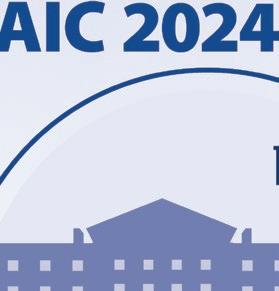


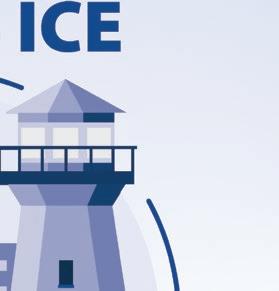






Join us at the 2024 AIC National Conference
June
5-8,
2024 | Charlottetown, PEI
This summer, you are invited to build lasting memories and connections in beautiful Charlottetown, PEI.
Why attend?


Earn up to 14 CPD credits: Attend Conference education sessions to acquire new skills, stay up to date on industry developments, and fulfill your Continuing Professional Development (CPD) requirements.
Diversify your career: Explore various avenues within professional appraisal and open yourself up to personal and professional growth. Learn to make informed decisions about your career trajectory, identify areas of interest or potential niches, and adapt to evolving market demands.
Network with industry professionals: These connections can provide valuable insights, mentorship opportunities, and access to a broader professional community across Canada. You can also gain knowledge about industry trends, best practices, and potential career paths while opening the door to new collaborations and job opportunities.

Socialize with AIC Members from across the country: Establish connections with other Professional Appraisers (P. App.) facing similar challenges and opportunities. Share experiences, exchange insights, and form long-lasting professional relationships that can support your career growth.
Discover Charlottetown, PEI: Enjoy the best that Charlottetown and surrounding areas have to off er, including vibrant arts and culture, iconic lighthouses, historic streets and architecture, the farmstead that inspired Anne of Green Gables, rich Canadian history, and so much more!

Enjoy! Take part in a gourmet lobster dinner, an exclusive golf tournament, excellent tourism opportunities, and take in a live performance by the After Hours Band, featuring AIC Member, Dean MacKinnon, P. App., AACI.
Do not miss this unrivalled opportunity to network with and learn from appraisal professionals from across the country, all while enjoying the beautiful vistas of picturesque and historic Charlottetown, PEI. Register today!

NEWS/NOUVELLES
Volume 68 | Book 1 / Tome 1 | 2024 59 Return to CONTENTS



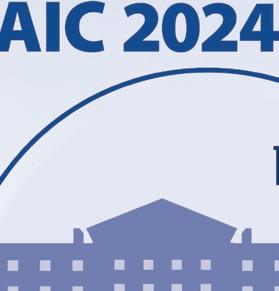


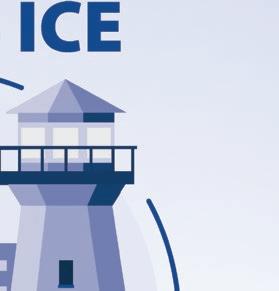





5-8 juin 2024 | Charlottetown, Î.-P.-É.
Cet été, vous êtes invités à créer des souvenirs et des liens durables dans la belle ville de Charlottetown, à l’Île-du-Prince-Édouard.
Pourquoi participer?
Obtenez jusqu’à 14 crédits de PPC : Assistez aux sessions éducatives du Congrès pour acquérir de nouvelles compétences, vous tenir au courant des développements de l’industrie et remplir vos exigences en matière de Perfectionnement professionnel continu (PPC).



Rejoignez-nous au Congrès national de l’ICE 2024
Rencontrer des membres de l’ICE de tout le pays : Établissez des liens avec d’autres Évaluateurs Professionnels (É. Pro.) confrontés à des défis et à des opportunités similaires. Partagez vos expériences, échangez vos points de vue et nouez des relations professionnelles durables qui vous aideront à progresser dans votre carrière.
Diversifiez votre carrière : Explorez différentes voies au sein de l’évaluation professionnelle et ouvrez-vous au développement personnel et professionnel. Apprenez à identifier des domaines d’intérêt ou des niches potentielles et à vous adapter à l’évolution des demandes du marché.
Réseautez avec vos collègues professionnels de l’évaluation : Ces contacts peuvent vous apporter des perspectives précieuses, des opportunités de mentorat et l’accès à une communauté professionnelle plus large à travers le Canada. Vous pouvez également acquérir des connaissances sur les tendances de l’industrie, les meilleures pratiques et les cheminements de carrière possibles, tout en ouvrant la porte à des collaborations et à des possibilités d’emploi.

Découvrez Charlottetown, Î.-P.-É : Découvrir ce que l’Île-du-Prince-Édouard a de mieux à offrir, y compris une scène artistique et culturelle dynamique, des phares emblématiques, des rues et une architecture historique, la ferme qui a inspiré Anne de la maison aux pignons verts, la riche histoire du Canada, et bien plus encore!
Profitez-en! Participez à un dîner gastronomique au homard, un tournoi de golf exclusif, excellentes opportunités touristiques et assister à Un spectacle de l’After Hours Band avec un membre de l’ICE, Dean MacKinnon, É. Pro., AACI.

Ne manquez pas cette occasion inégalée de rencontrer des professionnels de l’évaluation de partout au pays et d’apprendre d’eux et d’elles, tout en profitant des magnifiques paysages de la ville pittoresque et historique de Charlottetown, à l’Île-du-PrinceÉdouard. Inscrivez-vous dès aujourd’hui!

NEWS/NOUVELLES
Canadian Property Valuation | Évaluation immobilière au Canada 60 Return to CONTENTS
Join us at the 2024 AIC
National Conference
June 5-8, 2024 | Charlottetown, PEI
Rejoignez-nous au Congrès national de l’ICE 2024

5-8 juin 2024 | Charlottetown, Î.-P.-É.








NEWS/NOUVELLES
Volume 68 | Book 1 / Tome 1 | 2024 61 Return to CONTENTS
Welcome to Sophie Lamontagne, AIC
Director of Public Affairs and Communications
The AIC is pleased to announce that the role of Director of Public Affairs and Communications has been filled by Sophie Lamontagne. Sophie is an accomplished leader with over 15 years of diverse experience in strategic operations management, communications/marketing, public affairs and international trade development. She has a proven track record of advancing member-driven organizational missions, promoting brand awareness, and increasing program utilization both nationally and globally. With executive positions held across various sectors including international trade, agri-food, economic development, and healthcare/social services. Sophie has excelled in fostering collaborative relationships with diverse stakeholders, including government officials, community leaders, and private representatives. Her expertise extends from administering regional to international programs, demonstrating her ability to drive impactful initiatives on a global scale. Sophie holds her Masters Certificate in Project Management (MCPM) and has a Bachelor of Arts in Communications.
Bienvenue à Sophie Lamontagne, Directrice, Affaires publiques et communications

L’ICE a le plaisir d’annoncer que le poste de Directrice, Affaires publiques et communications a été pourvu par Sophie Lamontagne. Sophie Lamontagne est une leader accomplie avec plus de 15 ans d'expérience diversifiée dans la gestion des opérations stratégiques, les communications/le marketing, les affaires publiques, et le commerce international. Elle a un bilan prouvé de promotion des missions des organisations dirigées par les membres, de sensibilisation à la marque et d'augmentation de l'utilisation des programmes, tant au niveau national que mondial.
Occupant des postes de direction dans divers secteurs, notamment le commerce international, l'agroalimentaire, le développement économique et les soins de santé/services sociaux. Sophie s'est distinguée en favorisant des relations collaboratives avec des intervenants diversifiés, notamment des responsables gouvernementaux, des leaders communautaires et des représentants du secteur privé. Son expertise s'étend de l'administration de programmes régionaux à internationaux, démontrant ainsi sa capacité à mener des initiatives d'impact à l'échelle mondiale. Sophie est titulaire d’un certificat de maîtrise en gestion de projet ainsi qu'un baccalauréat ès arts en relations publiques et journalisme.
Sophie began in her role as of April 8, 2024 and looks forward to meeting Members across Canada.
CUSPAP and PPS 2024
The Canadian Uniform Standards of Professional Appraisal Practice (CUSPAP ) 2024 entered into eff ect as of January 1, 2024. All AIC Members must now be in compliance with CUSPAP 2024
A comprehensive list of the changes to this new edition of CUSPAP can be found in Appendix B of CUSPAP 2024
The online, on-demand version of the 2024 Professional Practice Seminar (PPS) became available as of February 1, 2024, in both English and French. The deadline to complete the 2024 Professional Practice Seminar is: December 31, 2024.
Member in good standing letter and e-card
On March 21, 2024, the AIC launched our online, on-demand Member in good standing letter and e-card feature on aicanada.ca. Whether you are providing proof of Membership to a client, accessing exclusive AIC Member loyalty and discount programs, or simply validating your current Membership status, easy access to your Member in good standing letter is important.
Now you can instantly access and download your Member in good standing letter and e-card – anytime, on any device, by accessing the AIC Member Portal.
Sophie est entrée en sa rôle le 8 avril 2024 et se réjouit de rencontrer des membres de l’ICE de tout le Canada.
NUPPEC et le SPP 2024
Les Normes uniformes de pratique professionnelle en matière d’évaluation au Canada (NUPPEC) 2024 sont entrées en vigueur le 1er janvier 2024. Tous et toutes les membres de l’ICE doivent désormais se conformer aux NUPPEC 2024. Une liste complète des modifi cations se trouve à l’annexe B des NUPPEC 2024
La version en ligne, autoformation, du séminaire de pratique professionnelle (SPP) 2024 est devenu disponible le 1 février 2024, en anglais et en français. La date limite pour compléter le séminaire de pratique professionnelle 2024 est le 31 décembre 2024.
Lettre et carte électronique de membre en règle
Le 21 mars 2024, l’ICE a rendu disponible en ligne et sur demande à icecanada.ca la lettre et carte électronique de membre en règle! Qu’il s’agisse de fournir une preuve d’adhésion à l’ICE à un client, d’accéder aux programmes d’affinité exclusifs aux membres de l’ICE ou simplement de valider votre statut de membre, il est important de pouvoir accéder facilement à votre lettre de membre en règle.
Désormais, vous pouvez accéder instantanément à votre lettre et carte électronique de membre en règle et les télécharger, à tout moment et sur n’importe quel appareil en accédant le portail des membres de l’ICE.
NEWS/NOUVELLES
Canadian Property Valuation | Évaluation immobilière au Canada 62 Return to CONTENTS

Important Dates
• May 20, 2024 – Victoria Day
• May 26, 2024 – National AccessAbility Week begins
• June 1, 2024 – Pride Month
• June 1, 2024 – Indigenous History Month
• June 5-8 – AIC 2024 Conference and Annual General Meeting, Charlottetown
• June 16, 2024 – Father’s Day
• June 17, 2024 – Eid al-Adha (Islam)
• June 20, 2024 – Summer Solstice
• June 21, 2024 – National Indigenous Peoples Day
• June 24, 2024 – Fête Nationale du Québec/Saint-Jean-Baptiste
• July 1, 2024 – Canada Day
• August 1, 2024 – Emancipation Day
• August 5, 2024 – Civic/Provincial Day, British Columbia Day, Heritage Day (AB), Natal Day (NS, PEI), New Brunswick Day, Terry Fox Day (MB)

Dates importantes
• 20 mai 2024 – Journée nationale des patriotes
• 26 mai 2024 – Semaine nationale de l’accessibilité débute
• 1 juin 2024 – Mois de la fi erté
• 1 juin 2024 – Mois de l’histoire autochtone
• 5-8 juin 2024 – Congrès national de l’ICE 2024 et Assemblée générale annuelle, Charlottetown
• 16 juin 2024 – Fête des Pères
• 17 juin 2024 – Eid al-Adha (Islam)
• 20 juin 2024 – Solstice d’été
• 21 juin 2024 – Journée national des peuples autochtones
• 24 juin 2024 – Fête Nationale du Québec/Saint-Jean-Baptiste
• 1 juillet 2024 – Fête du Canada
• 1 août 2024 – Journée de l’émancipation
• 5 août 2024 – Journée civique/provinciale, Journée de la Colombie-Britannique, Heritage Day (AB), Natal Day (NS, Î.-P.-É.), New Brunswick Day, Terry Fox Day (MB)
In Memoriam / En mémoire
These AIC Members have passed away. On behalf of everyone connected with the AIC and the profession, we extend our sincerest sympathies to their families, friends and associates.
Ces membres de l'ICE sontdécédés.Au nomdetousceuxquioeuvrentdeprès oudeloinauseindel'ICEetdelaprofession,nousexprimonsnosplussincères condoléances à leurs familles, amis et associés.

David C. Bradley, P. App., CRA
Charlottetown, PEI
Dave Kelly, Candidate Dartmouth, NS
Wanda Styre, P. App., CRA
Estevan, SK
NEWS/NOUVELLES Volume 68 | Book 1 / Tome 1 | 2024 63 Return to CONTENTS
DESIGNATIONS CANDIDATES STUDENTS / DÉSIGNATIONS STAGIAIRES ÉTUDIANTS
AIC designations granted / Désignations obtenues de l’ICE
The Appraisal Institute of Canada (AIC), together with the provincial associations and the provincial bodies affiliated with the AIC, commend the following Members who completed the rigorous requirements for accreditation as a Designated Member of the AIC during the period October 12, 2023 to April 17, 2024:
L’Institut canadien des évaluateurs (ICE), en collaboration avec les associations provinciales et les organismes provinciaux affiliés à l’ICE, félicitent les membres suivants qui ont complété le programme rigoureux d’accréditation à titre de membre désigné de l’ICE durant la période du 12 octobre 2023 au 17 avril 2024 :
P. App. / É. Pro., AACI
Accredited Appraiser Canadian Institute Évaluateur accrédité de l’Institut canadien
Alberta
Zac Garthus
Katie Hendrickson
Kathryn Yorkston
British Columbia/ Colombie-Britannique
Macy Burke
Rob Morrison
Diana Pan
Scott Justin Stevens
New Brunswick/ Nouveau-Brunswick
Miranda L. Burnett
Marc-Andre Roy
Ontario
Saud Ahmad
KendraBarclay
Charlotte Clare
Marie E. Garbens
Alex (Sangbin) Han
Adam Hannah
Warren Jackson
Hillary J. Kerkvliet (Russell)
Brett Leef
Selena Liu
Daniel Luca
Saad Manzoor
Christopher Michael
Eric Pennington
Alexander Pitt
Alexander Rance
Dinesh Kumar Sharma
Frederic Louis Toupin
Jason Voong
Amy Ni Wang
Christopher Lloyd Williams
Quebec
Michel Abbondandolo
Danny Masciotra
Gary S. Y. Touyz
Saskatchewan
Jordan Vanjoff
P. App. / É. Pro., CRA
Canadian Residential Appraiser Évaluateur résidentiel canadien
Alberta
Darrell R. Muzichuk
British Columbia/ Colombie-Britannique
Simon (Yoochul) Kim
Brennan Gary Mann
Shelley Lynn Peever
Courtney Pinkenburg
Michael P. A. Podgurney
Dierdrea Swinden
Bruno L. Tozzo
Manitoba
Jared Adams
Christopher Want
Nova Scotia/ Nouvelle-Écosse
Dale Eion Letcher
Wassim Mohamad
Ontario
Max Charbonneau
Jason King Chung Chau
Ryan Fraser
William Frickelton
Alan Ghahramany
Aaron T. Gifford
Corey Gunn
Arash Hamdollahi
Ivan Ivic
Eric Jin
Lindsay Kaye
Arsalan Muhammad Khan
Natalia Kracheninnikova
Sean A. McNeill
Adam R. Moretti
Ryan Richard Morken
Michelle E. O'Brien
Bhavesh Patel
Christina Seeley
Shelley Wang
Prince Edward Island/ Île-du-Prince-Édouard
Michael McQuillan
Candidates / Stagiaires
AIC welcomed the following new Candidate Members during the period October 12, 2023 to April 17, 2024:
L’ICE souhaite la bienvenue aux personnes suivantes qui ont joint les rangs des membres stagiaires durant la période du 12 octobre 2023 au 17 avril 2024 :
Alberta
Greg Danyliuk
Kyle Goertzen
Theresa Gonzalez
Anika Kiland
Ben Larsen
Bruce Levy
Runda Li
Gregory Scott Metcalf
Osman Quraishi
Brendan Siwak
Norbert Tajoacha
British Columbia/ Colombie-Britannique
Amir Bahman Bijari
Jinzhuo Bai
Bo Bao
Gurajvir Singh Bhatia
Satnam Singh Brar
Nathalan Chenery
Yifan Guan
Sawyer Hunt
Joshua Luke Jaques
Jonny An Jiang
Brian Jordan
Harpreet Kaur
Frederic Saysavanh
Khounphachansy
Joshua Timothy Kum
Markos Magriotidis
Jonathan Moi
Jimin Moon
Scott Nguyen
Jane Szu Chuan Peng
Irina Suter
Josh J. Sutton
Mehma Kaur Turna
Jade Ruyu Yan
Manitoba
Gurjinder Aulakh
Ronald Caleb Burley
Matthew Gudel
Sydney Scott-Clark
Anhtien Ta
Samuel Donovan Toews
New Brunswick/ Nouveau-Brunswick
Erin Lynn Blacquiere
Philippe Gosselin
Spencer Hoar
John Steeves
Newfoundland and Labrador/ Terre-Neuve-etLabrador
Krista L. Longman
Randy D. Regular
Nova Scotia/ Nouvelle-Écosse
Ryan Butts
Ardavan (Ardi) Iranmanesh
Chuan (Sam) Jiang
Kristy Martell
Sakher Mrishih
Artur Shabliienko
Phil Slauenwhite
Rachel Diana Smalley
Ontario
Christopher Aivaliotis
Kamran Alvi
Lydia Arnold
Rohit Kumar Arora
Robert Beghetto
William Isaac Breadner
Derek Chen
Ke Chen
Sydney Copping
Michael Czarnejko
Matthew Nicholas
DeNardis
Madison Dagny Dimock
Jack Dobie
Danielle Faubert
Oleksandr I. Feoktistov
Christophe Cedric
Fournier
Evan Franks
Shengwei Gao
Sara Gomes
Marko Gotovac
Dylan Green
Pravin Jeyaratnam
Sophia Karagiannis
Deepinder (Meenu)
Khurana
Chin Ching Lam
Yuchen Li
Hunter MacGregor
Michael Mallozzi
Alessandra Stephanie
Masci
Nicole Elizabeth McAninch
John McCague
Madison McKnight
Liam Moorfield-Yee
Mary Murrill
Students / Étudiants
Ayesha Naseem
Gary Niven
Emmanuel Olugbemiro
Shawn Page
SongLiang Peng
Bianca Rout
Evan Saab
Leda Schupbach
Brendan Shoreman
Jay Jeffery Tung
Scott Adam Van Haren
Connor William VanDyk
Caleb Wahl
Ping Wang
Jon Wellington
Jack Wilding
Jordan Peter Zaruk
Prince Edward Island/ Île-du-Prince-Édouard
Melissa D. Gosbee
Quebec/Québec
Anthony Di Lorenzo
Alessandro Pardo Pietrollino
Saskatchewan
Monsunmola Adijat Akindiose Hassaan Usmani
International
Frans Alwyn De Beer
Simon Threlfall
This category of membership serves as the first step on the path to designation for those completing their requirements for Candidate membership. Students considering the appraisal profession as a career option are also welcomed to this category of membership.
Cette catégorie d'adhésion constitue la première étape sur la voie de la désignation pour ceux qui s’affairent à compléter les exigences de la catégorie de membres stagiaire. Les étudiants qui contemplent une carrière comme évaluateur professionnel sont accueillis dans cette catégorie de membres.
Alberta
Jocelyn Ahn
Neel Dixit
Philip Quade
Kieran Ricketts
Resham Singh
Kaitlyn Smythe
British Columbia/ Colombie-Britannique
Maximus Berkeley
Jimmy Hung Pak Chan
Marque Kriel
Harry Chi Ho Kwong
Matthew Stone
Wasuphol Sukhumalin
Lia Yadine Tatel
Maria Alejandra Plata Toro
Mark Leo Dela Cruz Villanueva
Ryan C. Wong
Manitoba
Harrison Elliott
Cameron McIntyre
Nova Scotia/ Nouvelle-Écosse
Sara Kelly
Ontario
Jared Charles Amos
Gurmeet Bajaj
Arushi Bansal
Cait Brooks
Rebecca Cross
Nadia Wendy De Freitas
Stephen Wayne Dyke
Matthieu Fouasse
Dezi Gebel
Jermaine Hinds
Casey Leigh Jagosky
Vaibhav Jain
Goeun Kim
Afshin Nahid
Mike Prencipe
Aamer Rahim
Ali Saedi
Wenliang Shan
Nimish Shukla
Yahia Taleb
Kooshal Teelockee
Ramachander Thallada
Taylor Thompson
Marleen Van Ham
Victor Waraich
Candy West
Zhihong Zhao
Prince Edward Island/ Île-du-Prince-Édouard
Alex Doiron
Quebec/Québec
Evelyne Dumas
Canadian Property Valuation | Évaluation immobilière au Canada 64 Return to CONTENTS





Creative Adaptable Analytical

Today’s successful real estate professional is committed to lifelong learning. UBC’s Continuing Professional Development Courses meet your needs.
• Convenient online course format
• Broad range of valuation and real estate business topics
• Guaranteed Appraisal Institute of Canada’s Continuing Professional Development credits
Featured courses:
CPD 126, G reen Value – Energy Efficient, Sustainable and Resilient Housing
CPD 161, P roject Management and Real Estate
CPD 163, In surance Valuation
To find out more, visit: realestate.ubc.ca/CPD
tel: 604.822.2227 / 1.877.775.7733
email: cpd@realestate.sauder.ubc.ca




EARN CPD CREDITS AND ADVANCE OUR APPRAISAL PROFESSION
Do you want to contribute to the next issue of Canadian Property Valuation?

We are looking for topical, timely and informative articles provided by appraisers w ho are willing to share their knowledge and expertise or unique experiences by contributing an article to Canadian Property Valuation. It is an ideal way to: enhance the knowledge of your colleagues advance the appraisal profession as a whole gain exposure and recognition with your peers earn CPD credits
If you are interested in being published in a future issue of Canadian Property Valuation and contributing significantly to the advancement of the profession, please contact:
BRANDYN HAYES
Manager, Public Affairs
Appraisal Institute of Canada
brandynh@aicanada.ca • 1-613-234-6533 x230
*Note: We will provide additional details and any assistance you require to ensure a smooth and effi cient contribution process.
OBTENEZ DES CRÉDITS PPC ET MODERNISONS NOTRE PROFESSION D’ÉVALUATEUR
Voulez-vous contribuer au prochain numéro d’Évaluation immobilière au Canada?





Nous sommes à la recherche d’articles qui traitent de sujets pertinents, opportuns et informatifs, rédigés par des évaluateurs désireux de partager leurs connaissances et leur expertise ou partager leurs expériences uniques en contribuant un article dans la revue Évaluation immobilière au Canada. C’est une façon idéale : d’améliorer les connaissances de vos collègues de moderniser la profession d’évaluateur dans son ensemble de profiter d’une exposition et d’être reconnu par vos pairs d'obtenir des crédits de PPC
Si vous aimeriez faire publier un article dans un prochain numéro de la revue Évaluation immobilière au Canada et contribuer de façon significative à l’avancement de la profession, veuillez contacter :
BRANDYN HAYES
Gestionnaire, Affaires publiques Institut canadiens des évaluateurs brandynh@aicanada.ca • 1-613-234-6533 x230
*Remarque : Nous fournirons les détails supplémentaires et toute l’aide dont vous pourriez avoir besoin pour assurer un processus de contribution harmonieux et effi cace.


Proud professional liability insurance partner of the Appraisal Institute of Canada trisura.com













Valuation Redefined. Excellence Amplified. adaleyappraisals.ca Proudly Servicing the Greater Toronto & Hamilton Area FAST. ACCURATE. RELIABLE. Easy Online
Your
Ordering Track
Appraisal Orders 24-Hour Turnaround Options Exceptional Customer Service Experts in Residential Appraisal
















































































































































 By RANDY WYTON, P. App., AACI, Essex Appraisal Group, Devon, Alberta
By RANDY WYTON, P. App., AACI, Essex Appraisal Group, Devon, Alberta























































 Par RANDY WYTON, É. Pro., AACI, Essex Appraisal Group, Devon, Alberta
Par RANDY WYTON, É. Pro., AACI, Essex Appraisal Group, Devon, Alberta
















































































 BY ROMAN ŠŮSTEK, PH.D.,
BY ROMAN ŠŮSTEK, PH.D.,













































































































































































